In this section, you’ll find testimonials from recipients of BSH grants. These testimonials show how our grants have helped them achieve goals, create networks and further their research.
Scroll down and click on the headline to expand and read the full testimonial.
Have you received a BSH grant and want to share your experience in a text or video format? Please email [email protected].
ASM Grants
We have selected some reports from our ASM grant ambassadors who told us about their experiences and learning at previous ASMs.
Adwoa Pinamang Boateng Desu, Country Coordinator, World Child Cancer
I had the privilege of attending the BSH Annual Scientific Meeting (ASM) in Glasgow. My participation was made possible by the generous support of World Child Cancer and the BSH Abstract Scholarship.
Focus areas and sessions attended
The scientific programme covered a wide range of critical topics with a strong focus on blood cancers and their effects, particularly acute lymphoblastic leukaemia (ALL) and acute myeloid leukaemia (AML).
The sessions explored the challenges associated with the management of ALL and AML, recent advances in treatment and updates on the BSH and heam-oncology guidelines. Strengthening multidisciplinary teams (MDTs) and improvements in clinical care pathways were also considered.
I attended sessions on haematology/transfusion responses and developments in digital haematology. The Top Abstracts with Expert Perspective was particularly impactful and offered valuable insights into educational and professional practice advances.
Personal contribution
I presented a project funding by Bristol Myers Squibb (BMS) title Enhancing Haematology Expertise: Strengthening Skills for Improved Patient Care in Ghana. My presentation highlighted key achievements, including:
- Formation of a technical working group comprising local experts who provided technical guidance
- Adoption of a Training of Trainers approach for cascade training
- Development of Information, Education and Communication materials
- Participation in professional symposia to support knowledge sharing
I responded to questions concerning sustainability plans, the cost of training and the potential for scaling the initiative to other West African countries.
Engagement and networking
The exhibition stands offered valuable opportunities for engagement, particularly with industry partners. Noteworthy among the innovations was the progress towards a cancer vaccine, now nearing implementation.
I participated in a focused conversation discussion on how the BSH can further support haematology professionals globally.
A notable limitation was the predominant focus on the UK. At several exhibition stands initial interactions often hinged on whether attendees worked within the NHS or UK, with some initiatives specifically designed for UK-based audiences.
Nonetheless, I made useful contacts, including the Director of Pathology at the NHS, who expressed interest in the cost-effectiveness of our training model. I intend to follow up on these connections to explore potential collaboration opportunities for World Child Cancer.
Reflections
I was deeply inspired by the advances in targeted therapies and emerging developments such as the cancer vaccine.
The experience reaffirmed my commitment to contributing to improved cancer care in Ghana and other low- to middle-income countries, aligning with World Child Cancer's vision that no child should suffer.
I am sincerely grateful to World Child Cancer and the BSH for making this enriching experience possible.
Alexandros Abdel Massih, PhD student, Kings College London

Receiving the BSH Abstract Scholarship enabled me to attend the 2025 Annual Scientific Meeting (ASM) in Glasgow, an experience that significantly enriched my doctoral training and knowledge of clinical haematology.
As a PhD student researching gene therapies for sickle-cell disease (SCD), the award provided a unique platform to present my work, expand my professional network and engage with clinical advances in my, and other, fields of study.
One of the highlights of the conference was Prof. Paul Moss's Medal lecture Immunology takes centre stage in haematology, which explored the tight links between haematology and immunology. The lecture offered me a more complete picture of the field of haematology, with relevant examples in different applications such as auto-immune diseases.
I equally enjoyed the haemoglobinopathy-focused sessions, which provided a compelling clinical overview of recent advances in SCD and emphasised the emerging role of gene therapies.
Dr Chakravorty's talk on novel SCD therapies, especially CRISPR-based genome editing in the clinical context, directly informed my laboratory work. Hearing clinician-researchers reflect on patient outcomes, therapeutic risks and long-term follow-up strategies helped me consider the clinical translation aspects of my experiments more critically.
As a non-clinician, I found the conference especially useful in helping me understand how laboratory science translates to bedside outcomes. This perspective is often underrepresented in purely academic research environments, and attending the ASM helped close that gap for me.
I am sincerely grateful to the BSH for this opportunity. I leave this experience more informed, connected and committed to my research in haematology.
Anya Squires, PhD Student, University of Lincoln.

I am incredibly grateful to the BSH for awarding me a scholarship, which enabled me to attend the Annual Scientific Meeting in Glasgow. l training and knowledge of clinical haematology.
This generous support allowed me to present my poster on Investigating Immunosurveillance by Macrophages in Supporting Therapeutic Strategies Using CD47 Blockade in Myelodysplastic Syndrome, which was selected as a high-scoring abstract.
As a first-year PhD student at the University of Lincoln, this was my very first academic conference, and attending an event in a field I find completely fascinating was very rewarding.
Presenting my research allowed me to share my findings with an audience of experienced haematologists and scientists and encouraged me to step outside my comfort zone and engage in meaningful discussions about my work.
The conference offered a wide range of thought-provoking talks and seminars. I particularly enjoyed Dr Catherine Cargo’s session on Challenging cases in Myelodysplastic Syndrome, which delved into real-world patient studies and provided clinical context that I will absolutely take into my future research.
In addition to the educational sessions, the poster presentations gave me insight into the innovative research being conducted across the UK and beyond.
The experience has significantly broadened my understanding of current developments in haematology and helped shape my perspective on the wider impact my own research can have.
The meeting also provided a valuable networking experience. I was able to connect with fellow PhD students, clinicians, and senior researchers, all of whom were incredibly supportive and encouraging. The haematology community is an incredibly welcoming one!
Thank you once again to BSH for this incredible opportunity—it has been both a personal and professional milestone that will help me massively as I continue in my research career.
Azalea Khan, Healthcare Research Scientist, Synnovis
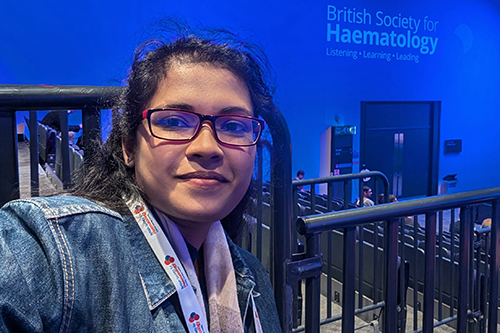
I am very grateful to the BSH for awarding me an ASM Abstract Scholarship to facilitate my attendance at the 2025 meeting.
This was my first time attending the ASM. It was a privilege to be selected for an oral presentation, allowing me to share our work on the Development of a novel test to detect hyposplenism in sickle cell disease.
This new test was translated from a research assay developed by Aberdeen University and was brought into diagnostic use by Synnovis and Kings College Hospital. In the long term, the test will benefit the management of patients at risk of sickle cell disease, bone marrow transplant, immunodeficiency and many more.
As a novice in the field of haematology, the conference allowed me to meet and connect with clinicians and scientists, leading to some insightful discussions and potential future collaborations about research on splenic function and its wider impact on patients.
The BSH Medal lecture Immunology takes centre stage in haematology by Prof Paul Moss was of particular interest as it combined my interest in immunotherapy with my current discipline. It allowed me to think of immunotherapy beyond the scope of cancer/oncology and how it is interconnected with haematology.
In addition, it was great to see all the good work carried out by the Lab SIG teams, particularly the Digital Haematology talk by Dr Tim Farren which resonated with some of the challenges faced during my time at a research digital pathology lab.
The abstract scholarship also allowed me to explore Glasgow city, with beautiful walks by the River Clyde and the River Kelvin, and physically touch a bit of Viking history in the Old Govan Church!
Chidambaram Sethuraman, Paediatric ST7 Endocrine GRID Trainee, Sheffield Children's Hospital

I express my sincere gratitude to the British Society for Haematology for awarding me an Annual Scientific Meeting Abstract Scholarship. This allowed me to attend and present my work on Endocrinopathies in transfusion dependant thalassaemia children - East London experience at the 2025 ASM in Glasgow.
This was my first attendance at the ASM and it was a fantastic experience. There was a suggestion to extend my project nationally with the haemoglobinopathy register. Hopefully, this will lead to collaboration with other NHS trusts, which will increase the volume of data.
In addition to presenting at the conference, I really benefited from the variety of sessions throughout the three days.
As a trainee working in paediatrics, I enjoyed the session on Paediatric Haematology which was insightful and thought-provoking.
I would also like to highlight the session on Therapeutic Landscapes for Patients with Haemoglobinopathies, which discussed the emerging and curative therapies available for these disorders.
In summary, the ASM Abstract Scholarship facilitated my professional growth enabling me to present my work and immerse myself in a wide range of scientific sessions.
Elizabeth Knight, Medical Student, University of Oxford
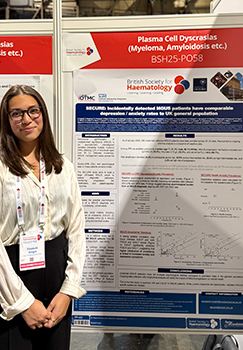
I am incredibly grateful to the British Society for Haematology for awarding me an Abstract Scholarship to attend the 2025 Annual Scientific Meeting in Glasgow.
As a medical student, attending the conference gave me a rare and rewarding chance to share research, ask questions and learn directly from clinicians and researchers working at the forefront of haematology.
The scholarship enabled me to present a poster: SECURE study: Incidentally detected MGUS patients have comparable depression and anxiety rates to the UK general population. This work forms part of the SECURE study, a large UK-based observational cohort investigating monoclonal gammopathy of undetermined significance (MGUS), a common pre-malignant condition.
Our sub-study described the mental health status of individuals diagnosed incidentally with MGUS, using validated screening tools for depression and anxiety.
We found that rates in this group were comparable to those in the general UK population. The findings suggest that an incidental MGUS diagnosis may not carry the psychological burden often assumed, an insight that could shape future conversations around diagnosis, disclosure and follow-up.
Beyond presenting my own work it was eye-opening to see the breadth of topics covered at the conference and how research findings are applied to clinical practice.
A particularly memorable session was Neuraxial procedures and thrombocytopenia by Dr Malcolm Broom. He noted that anaesthetists can work closely with haematologists to manage patients with low platelet counts requiring regional anaesthesia.
The session highlighted how cross-speciality collaboration can support decision-making in clinically complex scenarios. As a medical student, it was a helpful insight into how haematological expertise informs procedural planning and patient safety in real-world practice.
Overall, attending the ASM has been an invaluable experience. The scholarship supported my participation and gave me the confidence to present research to an expert audience.
Euan Haynes, Haematology Registrar, Newcastle upon Tyne Hospitals NHS Trust

I was delighted to receive an ASM Abstract Scholarship to present our work on the Real-world experience of glofitamab and epcoritamab: a retrospective UK multicentre analysis.
The scholarship allowed me to attend the conference in Glasgow to present this work in the Top Abstracts with Expert Perspective: Lymphoproliferative Disorders (Lymphoma, CLL) session.
Discussing our data on the national stage with experts from around the country and getting our key messages across prompted interesting discussions and allowed me to develop my professional network and open opportunities for future collaboration.
As a current haematology trainee, this opportunity was invaluable as I seek to get more involved with clinical research alongside my training to help shape my future career.
I also attended various sessions covering the latest advances across the entire field of haematology, broadening my knowledge and understanding of many fascinating topics.
Of particular interest were other lymphoma top abstracts such as Ibrutinib-Rituximab Is Superior to Rituximab-Chemotherapy in Untreated Older Mantle Cell Lymphoma Patients: The ENRICH trial presented by David Lewis, as well as PhD candidate Gage Millen presenting on The Effects of Continuous Activation of T Cells on Bispecific Antibody (BsAb)-mediated Killing.
The Sir John Dacie Lecture delivered by Prof. Greinacher reviewed Anti-PF4 antibody disorders and was a personal highlight of the meeting.
Gage Millen, PhD candidate, University of Leicester

I attended the 2025 ASM to present my talk on The effects of continuous activation on T-cells and their ability to kill via bispecific antibodies.
I enjoyed the opportunity to share my work with the BSH community, which facilitated discussions with more experienced members. I have returned to my lab with many more research ideas because of this.
I also enjoyed many other talks, including Global haematology, which has inspired me to apply to become a volunteer.
I learned a lot about the clinical output of the research I am undertaking from other talks on lymphoma, particularly that of Dr David Lewis.
The social and networking events were also beneficial. I introduced myself to staff from the Cancer Research UK and University College London cancer trials centre and we agreed to keep in touch. I plan to organise a visit to the centre for potential internships at the end of my PhD.
Greal Huypungco, Senior Sister, Barts Health NHS Trust

I am very grateful to receive an Abstract scholarship to attend the Annual Scientific Meeting (ASM). This was my first time attending the ASM, I was able to fully immerse myself and it made an unforgettable impression.
I presented a poster showing our work on improving antibiotic administration for neutropenic patients.
Our poster Impact of Nursing Engagement to Improving Fever-to-Needle Time in St. Bartholomew’s Hospital Haematology-Oncology Department allowed us to celebrate and highlight the important work that the nursing team is doing in St Bartholomew’s Hospital. I met a few colleagues who were also planning on doing something similar in their hospitals.
The meeting allowed me to reconnect and network with experts from all over the country. I met with colleagues from Liverpool who were also on their CAR T journey. I was able to exchange ideas with haematologists, nursing colleagues, and allied health professional colleagues during the event.
My favourite session was The role of genomic testing in the investigation of thrombocytopenia/ITP, presented by Prof. Cooper. She really widened my horizons and made me realise there is much research left to do in the field of haematology.
I also enjoyed speaking and networking with all of our industry partners. They were all welcoming and very knowledgeable. We got to hear about up-and-coming treatments on the market and trials that we might see in our clinical areas soon.
This experience have motivated me explore and create more evidence through research. I hope to attend the ASM again next year.
Hayley Evans, Programme Manager and Research Fellow, University of Oxford

I was honoured to present my work at the Top Abstracts with Expert Perspective: Laboratory Haematology and Transfusion Medicine session.
My talk, Electronic Monitoring for Transfusion Practice: Insights from the Patient Blood Management (PBM) HIC Database, showcased a new national research asset designed to support data-driven improvements in transfusion care.
The PBM Database, launched in December 2024, is a collaborative initiative developed by the NIHR funded Blood & Transplant Research Unit in Data Driven Transfusion Practice. It links transfusion data to comprehensive patient-level datasets including demographics, surgical procedures, medications, diagnoses, and laboratory results.
It currently includes data from over one and a half million patients across four NHS Trusts (Oxford, Hull, Leeds, and UCLH), capturing more than two hundred and fifty two thousand transfusion events.
My presentation highlighted how this resource can be used to monitor transfusion trends, benchmark clinical practice, and assess the impact of patient blood management strategies at scale.
The session provided a valuable opportunity to discuss the technical and ethical challenges of integrating electronic health data across systems, and to connect with researchers working on similar digital infrastructure projects.
A conference highlight for me was the session on Sustainable Haematology, which focused on how collective action and practical tools can support environmentally responsible clinical practice.
Keith Moore shared examples of successful emissions reduction through cross-sector partnerships and Dr Stephen Hibbs presented a life cycle assessment of red cell transfusion, quantifying its carbon footprint and demonstrating how similar methods could be applied to other haematology practices. This session reinforced the importance of aligning data and innovation with sustainability goals, a perspective I am keen to incorporate into future PBM work.
Attending ASM 2025 was a very valuable experience. The opportunity to present at a national meeting, receive feedback from peers and experts, and engage in strategic conversations about data, sustainability, and digital health has had a very positive impact and will help shape the future direction of my research.
I would like to thank the BSH for supporting my participation in this year’s meeting. I look forward to continuing this work and contributing to the broader goals of safer, smarter, and more sustainable transfusion medicine.
Hyun Park, Clinical Research Fellow in haematology, Brighton and Sussex Medical School
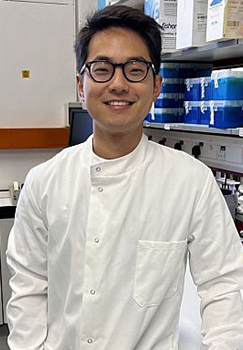
I am extremely grateful to have been awarded an Abstract Scholarship to support my attendance at the Annual Scientific Meeting in Glasgow.
It was a fantastic opportunity to present my research, Investigating the β-Catenin: TOE1 Axis in Acute Myeloid Leukaemia, to an expert audience, which led to several thought-provoking discussions and helpful suggestions.
The organisation of the programme was excellent, encompassing a wide breadth of topics in malignant and medical haematology.
As a resident doctor aspiring to enter specialist training in haematology, I found it inspiring to listen to speakers with international expertise, as well as talking to current trainees, consultants, scientists and allied health professionals regarding the future direction of this rapidly evolving field.
In particular, I was captivated by the MacFarlane-Biggs Plenary lecture, delivered by Professor James O’Donnell (Royal College of Surgeons in Ireland), who revealed novel insights into the management of Von Willebrand disease and highlighted the immense impact that research can have on our patients.
I will take forward all the lessons that I have learned from the ASM into my clinical practice and academic work and hope to be an active member of the BSH community in the future.
Kathryn Fleming, Haematology Registrar, Bristol Haematology Oncology Centre

Thanks to the generous support of the ASM Abstract scholarship, I was able to present my analysis of data from a nationwide granulocyte registry at this international haematology conference.
This work provided valuable insights into the utilisation, safety and clinical outcomes of granulocyte transfusions in the UK - a rare but critical intervention in managing severe neutropenic infections.
The opportunity to share these findings on a global stage enabled meaningful engagement with international experts in transfusion and infectious diseases. Their feedback has helped shape plans for further analysis and publication and reinforced the importance of collaborative data-sharing efforts in rare interventions like granulocyte transfusion.
A particularly proud moment during the conference was seeing my parallel work on the development of the MyeCare registry presented by Dr Mehta.
Contributing to this digital platform, which aims to improve supportive care for patients undergoing intensive haematological treatment, has been a formative experience in clinical informatics and multidisciplinary collaboration.
Beyond research dissemination, this experience significantly advanced my professional development.
Attending the conference deepened my understanding of emerging trends in haematology, improved my academic presentation skills and expanded my network of peers and mentors.
Overall, the BSH grant was instrumental in supporting the international visibility of UK-led registry data and has meaningfully contributed to my growth as a clinician-researcher.
I am sincerely grateful for this opportunity and excited to continue building on these experiences as I progress through my haematology training.
Laura Li Gagnon, International Clinical Fellow in Myeloproliferative Neoplasms, Guys & St. Thomas' Trust
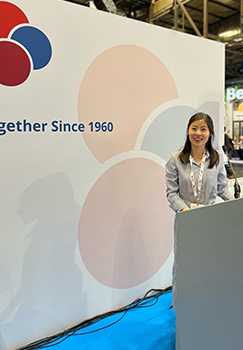
I am extremely grateful to the British Society for Haematology for awarding me an Abstract Scholarship to attend the 2025 Annual Scientific Meeting (ASM). This generous support enabled me to attend my first British haematology conference.
I am an International Clinical Fellow in Haematology from Quebec, Canada, currently undertaking a fellowship in myeloproliferative neoplasms (MPN) at Guy’s and St Thomas’ NHS Foundation Trust in London.
I was honoured to deliver an oral presentation of my research project Myeloproliferative Neoplasms with Concomitant Chronic Myeloid Leukaemia Are Associated with Tyrosine Kinase Inhibitor Resistance and Poor Outcomes. This abstract was selected as a high-scoring submission by the BSH assessors, and I am deeply thankful for the opportunity to present and discuss it with UK-based experts and peers in the field.
The conference programme included a range of high-quality talks on MPN and chronic myeloid leukaemia, which aligned directly with my subspecialty interests.
These sessions expanded my knowledge of current UK practice and introduced me to novel approaches and therapeutic strategies that I aim to integrate into my clinical work at my host and home institutions.
The meeting also offered valuable insights into national guidelines, ongoing clinical trials, and evolving models of multidisciplinary care.
Beyond the scientific content, the ASM served as a platform for meaningful networking and professional exchange. I was able to engage with leading clinicians and researchers, develop potential collaborations, and gain perspective on how UK standards compare with Canadian practice.
I am committed to sharing best practices and fostering evidence-based improvements in patient care.
The knowledge and experiences gained from the ASM will be disseminated through discussions and teaching sessions at Guy’s Hospital, as well as upon my return to CHU de Québec – Université Laval.
Madonna Eltoukhy, PhD student, University of Glasgow; Assistant Lecturer of Clinical Pathology, Tanta University, Egypt

I am sincerely grateful for the opportunity to have attended the BSH 2025 Annual Scientific Meeting (ASM), thanks to the grant I received.
As an early career researcher and haematologist, this event was an inspiring and enriching experience that significantly contributed to my professional development.
The ASM provided an excellent platform to deepen my understanding of the clinical and research aspects of haematology. I was particularly inspired by the high-quality presentations and the dynamic exchange of knowledge among experts, clinicians and fellow researchers.
One of the highlights for me was the Myeloid malignancies and bone marrow failure syndromes session led by Professor Steven Knapper, who presented cutting-edge research on the treatment of acute myeloid leukaemia (AML).
The talk offered valuable insights into recent clinical trials, emerging therapeutic strategies and advances in the management of AML patients. The up-to-date information he shared was directly relevant to my current research interests.
Beyond the scientific content, the ASM offered invaluable networking opportunities. I connected with other early career researchers, senior clinicians and academic leaders from across the UK and beyond. These interactions have the potential to lead to future collaborations and mentorship, which are crucial at this stage of my career.
It was also a privilege to be surrounded by some of the leading figures in the field of haematology. Their passion for advancing patient care through research and innovation was truly motivating.
Attending the ASM has fostered my commitment to contributing meaningfully to haematology and has provided me with new ideas and perspectives to take back to my own work.
Overall, the ASM was a very beneficial experience, which left me feeling informed, connected and inspired. I am truly thankful to the grant organisers for making this opportunity possible, and I look forward to applying what I have learnt to my research and clinical practice.
Pedro Casado, Postdoctoral Research Assistant, Barts Cancer Institute

I am extremely grateful to the British Society for Haematology for awarding me a 2025 Annual Scientific Meeting (ASM) Abstract scholarship that supported my attendance at this highly relevant conference in Glasgow.
The grant allowed me to present my abstract Molecular background determines the extent by which LSD1 inhibitors sensitize AML cells to kinase inhibitors as a poster.
My work shows that LSD1 inhibition sensitizes AML cells to inhibitors of FLT3, NRAS and other kinases, irrespective of their FLT3 and RAS mutation status, through heterogeneous mechanisms that involve the rewiring of the kinase signalling network.
This innovative treatment approach could expand the arsenal of therapeutic strategies for AML and overcome limitations associated with current treatments.
The conference was a great opportunity to learn from experts and present the latest research results from our work. It also allowed me to expand my network of connections and enabled me to engage in interesting discussions with other researchers and clinicians.
The session UK Malignant Academic Research on current organisational and research activity in blood cancer was very relevant to my work.
I found the talk by Professor Jessica Okosun particularly interesting. She brilliantly discussed how multi-omic approaches can be used in precision medicine for blood malignancies to identify diagnostic, prognostic, predictive and pharmacodynamic biomarkers, and highlighted the relevance of understanding the genetic and molecular mechanisms behind those markers.
I also found the session on Sustainable Haematology session chaired by Dr Stephen Hibbs very relevant and inspiring.
Overall, I thank the BSH for awarding me a grant to attend the 2025 ASM. It provided me with an excellent learning experience for my future as an early career researcher. I highly recommend this meeting, and I look forward to attending next year.
Rebecca Capel, Specialist Data Analyst, Digital Health and Care Wales
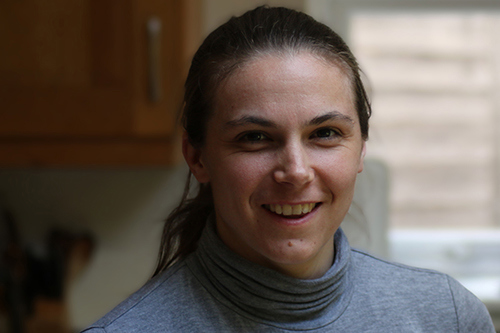
I would like to thank the BSH for awarding me an ASM Abstract Scholarship, which allowed me to attend the Annual Scientific Meeting and present a poster on Sociodemographic Inequalities in Blood Cancer Survival in Wales.
It was fantastic to get feedback on the work our team in Information Services has been doing on blood cancer survival statistics from a range of specialist haematology clinicians, as well as representatives from industry.
I have come away with some good ideas for adding depth to further insights, some suggested literature to explore the underlying causes of our findings, and a better knowledge of what would be of interest to the people that will ultimately read and use the results of these analyses.
Apart from the invaluable opportunity to discuss the work I was presenting; I most enjoyed the session on The National Non-Hodgkin Lymphoma Audit (NNHLA).
I would highly recommend attending the ASM and am very grateful for the opportunity to present in Glasgow.
Samadhi Wickramasinghe, Haematology Advanced Clinical Fellow, Royal Wolverhampton NHS Trust
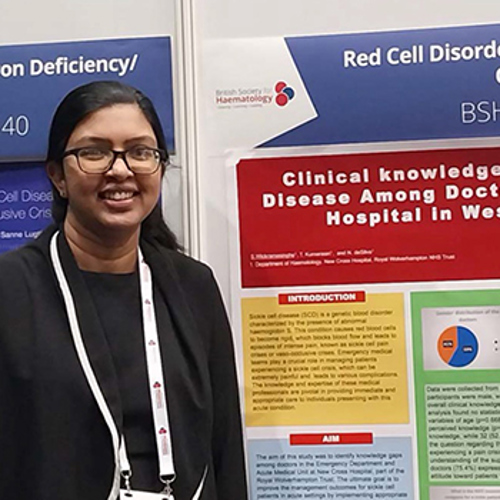
I am truly grateful to the BSH for awarding me an Annual Scientific Meeting (ASM) Abstract Scholarship to facilitate my attendance at the 2025 ASM in Glasgow.
My abstract on Clinical Knowledge of Sickle Cell Disease among doctors at a tertiary hospital in West Midlands was selected as a poster.
The study was conducted to identify knowledge gaps among doctors, with the ultimate goal of implementing a teaching programme to improve management outcomes for sickle cell patients in acute settings.
The conference updated my knowledge across a broad spectrum of haematology topics. It provided an invaluable teaching opportunity and I was able to network with lots of colleagues from different training centres across the UK.
I was fascinated by the Sir John Dacie Lecture conducted by Prof. Andreas Greinacher on Anti-PF4 antibody disorders, and to learn the role of anti-PF4 antibodies in the pathogenesis of vaccine-induced thrombocytopenia.
I enjoyed the variety of presentations and have many take-home messages. I am looking forward to attending next year's meeting.
Samer Abbas, Haematology SpR, University Hospitals Birmingham

I am sincerely grateful to have been awarded a grant to support my attendance at the BSH Annual Scientific Meeting (ASM). This opportunity had a significant positive impact on my professional development and engagement within the haematology community.
The grant enabled me to attend one of the most prestigious haematology conferences in the UK, where I had the privilege of presenting my abstract.
Sharing my work with a wider audience allowed me to receive valuable feedback and engage in meaningful discussions with experts in the field. This exposure has deepened my understanding of current research directions and has sparked new ideas for future projects.
In addition to presenting my research, the conference provided an excellent platform for learning.
I attended a wide range of sessions covering established and emerging areas in haematology, including clinical advances, translational science, and novel therapeutic strategies.
The comprehensive updates on topics such as immunotherapy, rare blood disorders, and advances in diagnostics have greatly enriched my knowledge and will inform my clinical practice and ongoing research.
Networking was another major benefit of attending the ASM. I had the opportunity to reconnect with colleagues and mentors, exchange experiences, and establish new professional relationships.
These interactions were particularly valuable for sharing practical insights and fostering collaborative opportunities.
I also engaged with representatives from several pharmaceutical companies, gaining first-hand knowledge of the latest innovations in haematology treatments and diagnostics. These interactions provided a broader perspective on how industry and clinical practice intersect to drive progress in patient care.
Overall, attending the ASM has been an inspiring and professionally rewarding experience. The grant facilitated my participation and significantly contributed to my academic growth and connection to the haematology community.
I would like to extend my sincere thanks to the grant committee for this opportunity, which has had a meaningful impact on my career development and ongoing commitment to excellence in haematology.
Sandra Maria Martin Guerrero, Postdoctoral Research Assistant, Barts Cancer Institute, Queen Mary University of London
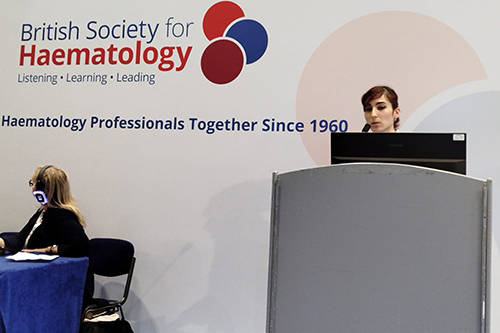
My abstract, Exploiting targeted inhibition of MASTL kinase in Acute Myeloid Leukaemia, was selected as a high-scoring abstract for an oral presentation.
MASTL kinase, a relevant kinase in cell cycle progression, has gained a lot of interest as a promising new target. However, its role in Acute Myeloid Leukaemia (AML) has not been addressed yet. Thanks to the BSH scholarship, we have shown how MASTL kinase can be a promising target for AML and how inhibiting this kinase reduces the proliferation and viability of several AML cell lines.
The UK Malignant Academic Research session was very relevant to our work. I found the talk by Prof. Mhairi Copland particularly interesting as it gave an overall update about the clinical studies currently ongoing in haemato-oncology within the UK.
Prof. Copland’s summary of current clinical trials in AML would be helpful for early-career researchers, as it could help us perform more focused research.
Finally, the Sustainable Haematology session chaired by Dr Stephen Hibbs was inspiring and raised important questions that need to be addressed to improve our carbon footprint and improve the treatment of patients.
I am very grateful to the BSH for awarding me a grant to attend the BSH 2025 annual meeting. Attending the event has been an extremely insightful experience and the knowledge gained will help me progress as an early career researcher. I highly recommend this meeting, and I look forward to attending next year.
Susudu Jayanetti, Clinical Fellow, University Hospital Southampton

I am deeply honoured and sincerely grateful to the BSH for awarding me an ASM Abstract Scholarship.
The scholarship provided the opportunity to present my abstracts to leading scientists, clinicians, and healthcare professionals from across the UK and beyond.
I represented Oxford University Hospitals and the National Blood Transfusion Service through my abstract on The Use of Hepcidin Levels Following Intravenous Iron.
I also presented a case report from Sri Lanka and Colombo South Teaching Hospital, The Application of Autologous Platelet-Rich Fibrin and Platelet-Rich Plasma in Managing a Pathological Mandibular Fracture.
The ASM gave me a platform to share my findings, exchange ideas, and receive constructive feedback from a diverse audience of haematology professionals. Such experiences are crucial as they help refine our work and broaden our perspectives.
Additionally, I was honoured to be invited by other trusts to present my work on their behalf. At the end of the day, I am glad that our work assists in patient safety and service improvement.
Being part of this vibrant academic community and engaging in high-level discussions and attending expert-led sessions was an incredibly enriching experience.
The talks and discussions on novel research were tremendous, and I learned from various clinical experiences. I was especially interested in the UK experience of using RT with CAR-T by Prof George Mikhaeel, in the Best of BJHaem session.
In closing, I extend my heartfelt thanks to the BSH team and all those involved in organising the Annual Scientific Meeting. I am excited for the journey ahead and truly appreciate the encouragement and recognition this scholarship has provided.
Suzanne Maynard, DPhil Student and Haematology Registrar, University of Oxford

The BSH ASM Abstract Scholarship supported me in presenting my work on the use of routine data to optimise patient blood management in liver disease.
As a haematology registrar currently out of programme for a three-year full-time PhD, the conference was an opportunity not only to share and discuss my current work but to be reminded of the breadth and depth of haematology.
Novel research and ideas were delivered by enthusiastic colleagues ranging from IMT trainees to distinguished professors. It was also wonderful to catch up with familiar faces and establish new connections.
There was a clear theme of the possibilities of using healthcare data to improve patient outcomes at this year's conference – from wearable technology to help guide optimum transfusion practice for quality of life in MDS to AI for the automated detection of myelofibrosis from bone marrow trephine.
The discussions and connections I have made this year remind me of the importance of collaboration in turning ideas into reality. I hope to extend and apply the skills I am learning during my PhD to help harness routine data for widespread haematology research, particularly at the interface between transfusion and haemostasis and thrombosis.
I am very grateful to the BSH for this support in my clinical and academic professional development.
Danielle Campion, Thrombosis and Anticoagulation Clinical Nurse Specialist, Newcastle upon Tyne Hospitals
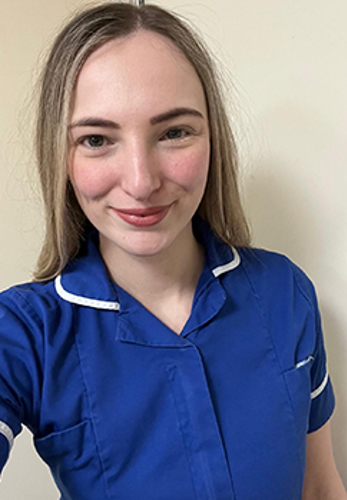
I would like to thank the British Society for Haematology for awarding me a travel grant to attend my first Annual Scientific Meeting, held in Glasgow.
I am fairly new in my role as a thrombosis and anticoagulation specialist nurse so feel grateful for the opportunity to expand my knowledge base, broaden my understanding of current research and meet experts in this field.
The conference offered poster and verbal presentations and networking events. The sessions on Mechanical valves in pregnancy - how do we serve our patients best and Thrombophilia were of particular interest to me.
The VTE Specialists Network Symposium was highly beneficial and reinforced my current practice. Topics covered included Nurse sonography in a DVT clinic, can breastfeeding women receive DOACs and cancer-associated thrombosis in the palliative setting.
A highlight of the meeting was the poster walk and e-posters. Our thrombosis nursing team and haematology consultant had submitted an abstract Using artificial intelligence to prompt early intervention by thrombosis nurse specialists in acute venous thromboembolism. Having our team’s e-poster on show at the ASM has raised the profile of our improvement project within the haematology community and may have inspired other areas in the country.
Other poster titles advantageous to my role included Anticoagulation treatment of patients with cerebral venous sinus thrombosis and Apixaban absorption in a patient with deep vein thrombosis and previous gastric bypass.
This opportunity has enhanced my professional development and informed my clinical practice.
My goals going forward are to integrate the knowledge gained, for example when choosing an anticoagulant, into my day-to-day role as a clinical nurse specialist and to remain committed to excellent patient care and development of the thrombosis service.
As blood clot prevention and specifically reducing the amount of hospital-acquired thrombosis is one of our trust's key priorities, I will share my knowledge gained through ongoing education and training events.
Emma Gee, Thrombosis and Coagulation Nurse Consultant, Kings College Hospital

It was wonderful to get the opportunity to attend the ASM in Glasgow.
I am very grateful to the BSH for awarding me a nurse travel scholarship to facilitate the trip. I was lucky to be involved in the conference in two ways: chairing the VTE Specialists Network symposium, and presenting a poster National VTE Exemplar Centres Buddy Programme - a review.
The VTE Specialists Network symposium was a fantastic session. Engaging speakers spoke on a wide range of topical issues in thrombosis, including nurse-led deep vein thrombosis (DVT) scanning, thrombosis in children, direct oral anticoagulants (DOACs) in breastfeeding and anticoagulation in palliative care.
The session was well-received and the audience was inspired by the content.
My poster submission summarised the experience and findings from the National VTE Exemplar Centre Buddy Programme, a recommendation made by the National Thrombosis Survey (Thrombosis UK 2021). The programme facilitated twenty partnerships over a three-year period that had positive effects on thrombosis prevention for both mentor and mentee organisations.
The talk on Mechanical valves in pregnancy - how do we serve our patients best? by Katherine Von Klemperer provided a very interesting summary and discussion of how best to manage this high-risk patient group.
Attending the conference provided learning and networking opportunities, resulting in new and strengthened links with colleagues. It has infused me with enthusiasm and inspiration to take back to my role.
Gemma Mullings, Nursing Assistant, Guys and St Thomas' Hospital

Attending the ASM for the first time was an incredible experience.
The day before the conference I had the opportunity to participate in the Haematology Essentials course, which was invaluable.
As a nursing assistant and medical student, I found the course perfectly pitched—engaging, informative, and at just the right level for my role. I particularly appreciated the multidisciplinary approach to case discussions, which provided a comprehensive perspective.
One of the highlights of the conference was the session on Sustainable Haematology. It was fascinating to explore the life cycle assessment of a blood bag, and it left me feeling excited about the potential for making meaningful changes in our practice to make haematology more sustainable.
It also served as a timely reminder of the broader implications of our work, particularly in terms of global equity and reinforced why sustainability is crucial for us all.
Overall, the ASM was a massive learning opportunity, and I’m incredibly grateful to have been a part of it. I’m leaving feeling empowered, inspired, and eager to share what I’ve learned with my peers.
Judith Effeny, Anticoagulation and Thrombosis Clinical Nurse Specialist, University Hospital Southampton Foundation Trust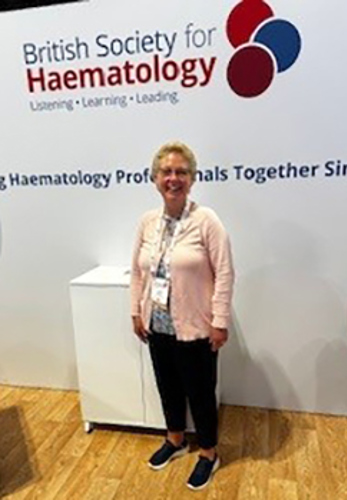
Thank you for awarding me the Annual Scientific Meeting (ASM) travel grant, making it possible for me to attend the meeting in Glasgow. This was the first time I attended the ASM and I thoroughly enjoyed the three days.
The programme was extensive and covered all areas of haematology. I focused on thrombosis and anticoagulation, as these are my areas of clinical practice. However, the variety of sessions allowed me to improve my knowledge and listen to up-to-date thinking in other areas.
As a venous thromboembolism (VTE) specialist nurse, I particularly enjoyed the VTE Specialist Network Symposium.
It was inspiring to listen to Liz Murray talk about being a nurse sonographer and implementing sonography in a clinical setting. The service clearly improves patient care and improves patient and staff satisfaction. Although this is not a change I could implement, the process can be applied to any change in clinical practice.
I valued listening to the work being undertaken by Dr Jignesh Patel at Kings Hospital around the use of direct oral anticoagulants (DOACs) in breastfeeding and the outcomes of his recent work around rivaroxaban. The talk generated a really good post-meeting discussion post-meeting about the use of DOACs in pregnancy and postpartum.
The BSH grant allowed me to have time away from the clinical setting to develop and increase my knowledge within haematology. Attending a face-to-face conference alongside colleagues from different healthcare areas provided networking opportunities and the benchmarking of clinical services within similar settings to my own.
Reference
1. Zhao, Y. Predicting infant exposure to direct oral anticoagulants in breastfeeding mothers. Doctoral thesis, 1 May 2021.
Louise Arnold, Advanced Clinical Practitioner (ACP), St James’s Hospital, Leeds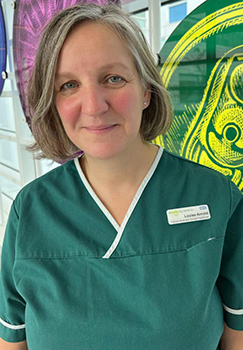
I attended the BSH Annual Scientific Meeting 2025, funded by a Nurse Travel Scholarship.
This was an inspiring meeting that brought together my nursing experience and impacted my current ACP role.
It allowed me to solidify my general haematology knowledge and gave me the opportunity to connect in my specialist role in rare disease with other colleagues.
The interactive session on Supportive Care was valuable and provided insights into the approach to essential thrombocytopenia in the updates across the spectrum of myeloproliferative neoplasms.
Nicola Shepherd, Lymphoma Clinical Nurse Specialist, Guys & St Thomas' Trust
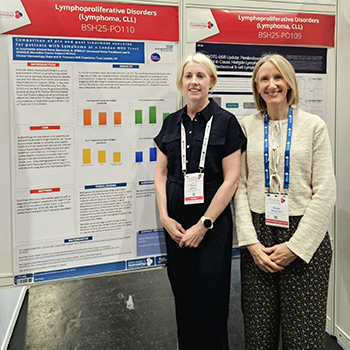
I was very fortunate to receive a travel scholarship from the British Society for Haematology, which enabled me to attend the Annual Scientific Meeting (ASM) in Glasgow this year.
I submitted an abstract entitled A comparison of pre- and post-treatment concerns for patients with lymphoma at a London NHS Trust for a poster presentation, which aimed to identify the top concerns for patients pre- and post-treatment through the Holistic Needs Assessment (HNA) questionnaire.
We sought to determine trends in concerns and support needs to help tailor the consultations at the end of treatment. As the clinical nurse specialist (CNS) team, our purpose is to personalise patients' cancer care, empowering them to regain control while focusing on their well-being.
I was very proud to present my work, alongside my colleague, and hoped to draw attention to the work in specialist nursing in haematology.
It was also fantastic to see the work of others; a particular highlight was Tackling Inequalities in Haemato-oncology, which sought to address the inequalities in access to support and treatments for haematology patients.
My attendance at the ASM this year enabled me to keep up to date with the latest treatments and innovations in lymphoma, meet other like-minded people and further my professional development. I would relish the opportunity to attend again next year and would encourage other colleagues to attend.
Rebecca Cloudsdale, Venous thromboembolism Clinical Nurse Specialist (CNS), Cardiff and Vale University Health Board
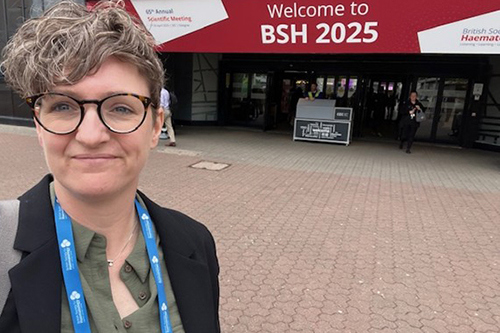
I was delighted to be awarded the Nurse Travel Scholarship for ASM 2025, having attended in 2024 as a day attendee.
I attended all three days this year and was able to maximise the value of my experience by attending the Haematology Essentials session. This was well put together and attended by professionals from across the MDT. There was a collaborative spirit and I found the small-group integrated clinical cases work insightful.
The day was pitched at an accessible level for CNSs and the sessions on interpretation of full blood counts and coagulation screens were particularly useful for my practice.
I was fortunate enough to have two e-posters accepted at the ASM and was grateful for the opportunity to share my work and gain exposure at this prestigious forum.
The highlight of the ASM for me was the VTE Specialist's Network Symposium.
The speakers were all impressive and covered an array of novel topics. Liz Murray delivered a fascinating talk entitled Nurse Sonography in DVT Clinic - an innovative approach outlining her experiences of setting up and running a diagnostic service in her area. I noticed many parallels with my area of practice and was inspired by her innovation and tenacity.
The VTE Specialists Network symposium allowed me to broaden my professional network and share ideas and experiences with specialists in similar roles. I aim to disseminate some of the learning points from the session to my CNS team and would recommend it to colleagues in future years.
Vikki Maher, Thrombosis and Anticoagulation Nurse Specialist, Newcastle upon Tyne Hospitals
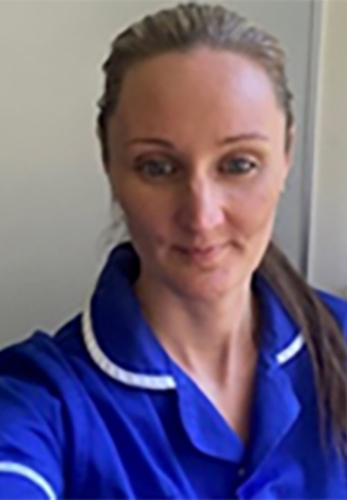
I was able to attend the BSH ASM 2025 in Glasgow thanks to the Nurse Travel Scholarship. This was my first time attending the Annual Scientific Meeting, which I found very beneficial.
The VTE Specialists Network Symposium was very interesting, particularly the talk from Dr. Jingesh Patel Can breastfeeding women receive DOACS?
Having recently successfully completed the Non-Medical Prescribing course, I found the new and emerging data from the PBPK models fascinating.
The talk from Professor Simon Noble, Cancer Associated Thrombosis in the Palliative Setting was excellent and very engaging.
I was proud to have submitted an e-poster alongside other members of the thrombosis nursing and medical team entitled Using artificial intelligence to prompt early intervention by thrombosis nurse specialists in acute venous thromboembolism.
This prompted conversations and networking opportunities with other health care professionals over the course of the meeting and will hopefully provide further opportunities to share our positive experience.
The poster National VTE Exemplar Centres Buddy Programme was great to read as we work towards VTE Exemplar status in our Trust. It was reassuring to know that there is mutual support which can help us to improve our practice.
The opportunity to network and share experiences with peers has been very valuable. After attending the ASM I was inspired to apply for Associate Membership for BSH and look forward to attending future meetings.
Ahmed Mohamed Ali Ibrahim Abelrahman, Clinical Pathology Specialist, Blood Transfusion Medicine Fellowship Trainee, Mansoura University Student Hospital, Cairo, Egypt.
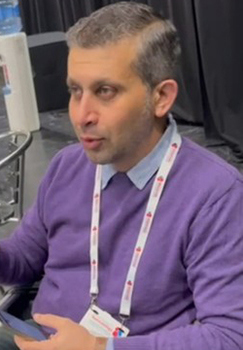
I want to express my gratitude for being selected for the 2025 BSH ASM Travel Scholarship. It was my second time attending the ASM, and I found it tremendously educational and practical, with the usual fabulous warm welcome.
During the conference, I particularly enjoyed the MacFarlane-Biggs Plenary Lecture by Dr. James O’Donnell, Insights into von Willebrand disease (vWD). This is the most common inherited bleeding disorder.
The talk covered ADWMTS13 regulation and highlighted guidelines for individual and clinical research, overcoming the research gap in vWD, and defining the clinical significance of low von Willebrand factor. I took notes that will be helpful.
I particularly liked Thrombocytopenia and Antithrombotics – how low can you go? by Dr Will Lester, as the topic has been an interest of mine.
I attended the Industry Symposium The time has come to change SCD and TDT care and the Chronic Lymphocytic Leukaemia (CLL) talk by Prof Martin Dyer, Another chemical romance, from chlorambucil to venetoclax and beyond!
I also enjoyed Immune Thrombocytopenia in Children and Adolescents by Dr John Grainger and Haemostasis and thrombosis cases in pregnancy by Dr Sajida Kazi. These provided interesting data about learning points and case management and the know-how to deal with real cases.
I would like to express my sincere appreciation to the BSH for awarding me an ASM Travel Scholarship. The event provided an incredible opportunity to connect with others in my field, and I thoroughly enjoyed the engaging discussions.
Aisling Barrett, Clinical Research Fellow, Oxford University Hospitals

The 2025 Annual Scientific Meeting showcased the breadth of exciting research happening in the United Kingdom and abroad. Investigator-initiated research efforts were highlighted, as well as commercial clinical trials, which are sure to change or standard of care practice in the months and years to come.
The Presidential session lectures were of exceptional quality. Professor Paul Moss delivered a tour-de-force history of immunology as it relates to haematologic oncology as well as autoimmune disorders and infection.
A fascinating overview of the changes in the clinical trial landscape following the O'Shaughnessy report was delivered by the author, with a welcome acknowledgement of the importance of revenue generation by commercial trials and the academic advances inherent in both commercial and investigator-initiated studies.
Alongside education, there was plenty of time for socialising and the city of Glasgow put on a wonderful show. The power of ceilidh in bringing people of all grades together was remarkable, and the poster walk was hugely enlivened by a marching band.
The networking at the ASM was second to none, with opportunities to discuss future collaborations abounding and many wonderful chances to catch up with friends old and new.
This was a remarkable conference showcasing the very best of our discipline and I look forward to many future attendances.
Ifeyinwa Okafor, Medical Laboratory Science Lecturer and Researcher

Receiving the BSH Annual Scientific Meeting (ASM) Travel Scholarship enabled me to attend ASM 2025 and was a pivotal moment in my professional journey. I am deeply grateful for the support it provided.
With the funding, I was able to cover the full cost of my conference registration. Additionally, the grant covered fifty-one per cent of my flight ticket, substantially reducing the financial burden of international travel. Without this generous support, attending the conference would not have been financially feasible.
Participating in the conference provided an invaluable platform for learning, networking, and sharing ideas with fellow haematology professionals from around the world.
I was exposed to the latest advances in haematological research, diagnostic approaches, and clinical practices, which have already begun to influence my work and teaching.
I established new professional connections that I anticipate will evolve into future collaborations in research and capacity building. These networks are crucial not only for knowledge exchange but also for advancing shared goals in haematology practice, particularly in resource-limited settings.
The sessions I attended offered fresh perspectives and evidence-based insights that I am now incorporating into both my academic and clinical practice. I was also part of a focus group with Maisie Willmoth-Allsop and enjoyed the session.
A key highlight of my participation was presenting my research paper titled Assessing Safety of Blood Donations from Smokers: A Comparative Analysis of Biomarkers and Hematological Parameters.
I shared my findings with an international audience, received constructive feedback, and engaged in meaningful discussions with experts in transfusion medicine and haematology, especially Prof. Andreas Greinacher.
The experience has also renewed my commitment to contributing to haematology education and practice in my home institution. I have delivered a seminar sharing key highlights from the conference with my colleagues and students, helping to extend the impact of the BSH grant beyond myself. This ripple effect aligns closely with BSH’s mission of advancing the study and practice of haematology and ensuring that knowledge reaches broader communities.
In summary, the BSH grant was instrumental in facilitating my participation in a transformative professional experience. It not only eased the financial strain of attending an international conference but also enabled me to grow academically, build networks, and give back to my professional community.
I sincerely thank the British Society for Haematology for this opportunity and for their continued commitment to supporting haematology professionals globally.
Manal Aboelmagd, Haematology and BMT Specialist, Dar Alsalam Oncology Center, Cairo, Egypt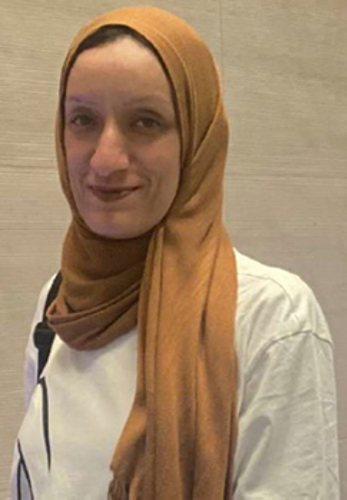
I want to express my gratitude for the 2025 ASM Travel grant. It was my second time attending the ASM and I found it tremendously educational and practical.
I particularly liked the Immune ThrombocytoPenia in Children and Adolescents session led by Dr John Grainger, as I am newly starting to participate in the treatment of young children.
The sessions on Von Willebrand Disease (VWD) were interesting and valuable. Is bleeding in low VWD explained by concomitant haemostatic abnormalities? What is the difference between low WVF and Type 1 VWD?
The Challenging cases in MDS MDT - from cytopenia to AML was very interesting.
I was happy to explore Glasgow by walking the historic streets and exploring new culture.
I am grateful to the BSH for selecting me. The event provide an incredible opportunity for me to connect with others in my field and I thoroughly enjoyed the engaging discussions.
Natalie Pacey, Occupational Therapist, Clatterbridge Cancer Centre

The conference provided a range of insightful talks that deepened my understanding of haematology care and offered practical considerations for patient assessment.
I particularly benefited from sessions on late effects, health inequalities in blood cancer, and CAR-T therapy. These discussions enhanced my clinical knowledge and broadened my awareness of the evolving challenges and advances within the field.
Networking with professionals from a variety of disciplines and backgrounds was equally enriching, offering a broad perspective on the progression of haematology services and fostering a sense of shared purpose and collaboration.
The poster presentations were especially engaging and served as a source of inspiration. They have motivated me towards contributing my own research in the future.
I am currently in a role that supports the development of an occupational therapy service specifically for CAR-T patients at Clatterbridge Cancer Centre. This role presents a significant opportunity for research, and I am eager to contribute evidence and insights from an Allied Health Professional (AHP) perspective.
Conversations with medical professionals during the conference were particularly affirming. Many expressed genuine interest in understanding the role of occupational therapy within the CAR-T pathway, particularly how we assess and support patients holistically. Sharing the developments of our emerging CAR-T service highlighted the importance of interdisciplinary collaboration and the value of integrated, patient-centred care.
Looking ahead, I believe that including more sessions led by, or focused on, AHPs at future BSH conferences could enhance participation from allied health professionals. It would not only provide a platform to showcase the critical role AHPs play in haematology care but also encourage greater interdisciplinary learning and appreciation for holistic approaches to treatment and recovery.
Purshotam Paudel, Senior Resident, Sri Lakshmi Narayana Institute of Medical Sciences, Puducherry, India

The BSH ASM Travel grant enabled me to pursue opportunities that would not have been possible otherwise. Leading experts from all around the world came together for this meeting, which provided priceless insights into the most recent developments in haematology.
I learned about cutting-edge research, new treatments, diagnostics, and developing trends in transfusion medicine and haematology, by attending scientific sessions and workshops, and looking at the poster presentations.
I was pleased to present three works, which were selected as e-posters and got good reviews from many of the attendees. I received constructive feedback regarding the findings of my work, which will help me improve in the coming days.
The scientific programme was wide-ranging, interesting, and, at times, thought-provoking. The sessions on haemostasis and thrombosis, blood stories, laboratory haematology, and transfusion medicine were very interesting and helpful for me as a transfusion medicine specialist.
Dr Garg's talk on Guidelines: Development, impact and how to implement at the BSH Behind the Scenes session was incredibly helpful to me as an early career professional.
I made professional connections with researchers, physicians, and trainees from a variety of backgrounds. These connections have opened doors for future collaborations, including multi-centre research initiatives and training opportunities.
Ultimately, the BSH grant has significantly advanced my career trajectory. It reaffirmed my commitment to improving patient care through evidence-based practice and international collaboration.
I am deeply grateful to the British Society for Haematology for their generous support, which has empowered me to grow both personally and professionally.
I look forward to applying the insights gained to future projects and continuing to contribute meaningfully to the field of transfusion medicine and haematology.
Overall, this ASM was a great meeting to attend, and I am looking forward to attending next year’s meeting already.
Ruby Webb, Oncology Physiotherapist, Clatterbridge Cancer Centre
I was so pleased to hear that the BSH supported applications from Allied Health Professionals (AHPs). It was a privilege to represent my physiotherapy colleagues, the wider AHP department and our NHS trust at the 2025 Annual Scientific Meeting (ASM).
I feel strongly about the importance of raising AHP's profiles among the wider multidisciplinary team (MDT) and having a presence at such events to improve patient pathways and holistic care.
The ASM provided a unique opportunity to learn from leading experts, explore cutting-edge treatments and understand the complexities of patient care in haematology.
I was particularly keen to explore research and existing pathways into pre/ rehabilitation for haematology patients, as their clinical presentations and deficits are often very complex, and out physiotherapy team's input with these patients has been growing rapidly.
The integration of a prehabilitation and rehabilitation programme for CAR T haematology patients is a new initiative within our trust. As we strive to optimise patient outcomes, it is essential for me to engage with the latest research, insights and innovations in haematology.
The conference improved my understanding of haematological cancers and their treatments within our MDT. I can now cascade this information to more junior staff and the wider AHPs, hopefully fostering a culture of continuous improvement and collaboration between teams.
I had the opportunity to network with AHPs who shared a commitment to advancing the care of haematology patients. I connected with nurses and AHPs who had experience of setting up and delivering CAR T across the UK, and was able to share best practices, resources and strategies that could be adapted for our local context.
One of the highlights was the industry session sponsored by Gilead, Reimagining Patient Education in CAR T-cell Therapy. This was especially relevant to my role as the lead physiotherapist in setting up a CAR T pathway within my trust.
I found the BSH and EHA session invaluable, particularly Professor Simon Stanworth's presentation Optimising the health of the haematology patient from a UK perspective. It was inspiring to see the inclusion of prehabilitation and a multimodal MDT approach being embedded into patient care.
In relation to the patient groups we frequently treat, the session Treating Older Patients with Myeloma stood out. It was enlightening to hear about the UKMRA MXIV trial results and positive outcomes for treatment modificaiton in elderly myeloma patients.
The evidence provided by Professor Salomon Manier of Lille University[1], Management of elderly frail patients: a dexamethasone-sparing strategy hightlighted the need for an adapted treatment approach. This inevitably influences the effectiveness of physiotherapy and a patient's ability to engage with therapy and improve the quality of their life.
A common theme across patient-reported outcome measures and presenters is that when symptom burden is better managed by medical teams, it can significantly improve life quality.
Attending this conference has better equipped me to provide evidence-based recommendations and implement effective strategies to improve patient outcomes.
I look forward to attending the ASM next year and I hope that the presence of AHPs and nurses continues to grow within the society, becoming an integral part of the meeting's programme in the years to come.
We know that a multidisciplinary approach is so important when putting the patient's quality of life at the forefront.
Refefence
1. de Queiroz Crusoé, E. et al. Phase 2 trial of daratumumab, cyclophosphamide, thalidomide, and dexamethasone in newly diagnosed multiple myeloma. Blood Neoplasia Vol. 2, Issue 3, 2025, 100081. https://doi.org/10.1016/j.bneo.2025.100081https://doi.org/10.1016/j.bneo.2025.100081
Yasmine Shaaban, Associate Professor of Clinical Hematology, Mansoura University, Egypt
I am deeply grateful to have received an Annual Scientific Meeting (ASM) Travel grant. Attending the ASM for the second time was an incredibly enriching experience, made even more special by the warm welcome I received.
One of the highlights of the conference was the MacFarlane-Biggs Plenary Lecture - Insights into Von Willebrand Disease (VWD) by Prof. James O'Donnell.
The distinction between low VWF and Type 1 VWD remains unclear and the emphasis on how patients with mild to moderate reductions in plasma VWF levels (30-50%) can experience significant bleeding challenges previous assumptions.
The VWD sessions inspired me to read the texts below: VWF multimerisation within EC[1], VWF functions as a carrier protein for FVIII[2], ASH 2021=guidelines on VWD management - 8 conclusions[3].
Recognising the risks associated with postpartum haemorrhage and heavy menstrual bleeding, which can lead to severe anaemia, is crucial for improving patient care.
I primarily manage adolescent and young adult ITP patients, so the Immune Thrombocytopenia in Children and Adolescents session led by John Grainger was particularly insightful. Hearing doctors share their experiences with refractory cases broadened my understanding of complex presentations.
I am eager to apply the five tips I learned at the Research session for improving my article's search engine optimisation and building an improved academic profile.
Beyond the academic benefits, the experience allowed me to immerse myself in Glasgow's rich culture and history. Walking through its historic streets and visiting landmarks offered a perspective that will undoubtedly help me grow as a more well-rounded and empathetic physician.
References
1. F. W. G. Leebeek & J. C. J. Eikenboom, Von Willebrand's Disease, N Engl J Med 2016;375:2067-2080
2. Pipe, S. W., Montgomery, R. R., Pratt, K. P., Lenting P. J., Lillicrap, D. Life in the shadow of a dominant partner: the FVIII-VWF association and its clinical implications for hemophilia A. Blood 2016; 128(16):2007-2016
3. Connell et al. ASH ISTH NHF WFH 2021 guidelines on the management of von Willebrand disease, Blood Adv (2021) 5(1):301-325. https://doi.org/10.1182/bloodadvances.2020003264
Abigail Martin, Haematology Clinical Research Fellow, University Hospitals, Plymouth

I am very grateful to the British Society for Haematology for awarding me an Annual Scientific Meeting Abstract Scholarship which facilitated my attendance at the 2024 meeting.
My abstract, entitled Infectious complications of bispecific antibody treatment in patients with lymphoproliferative disorders, was selected as a high-scoring abstract for a poster presentation.
The abstract scholarship enabled me to present clinically relevant real-world data on the infectious complications of treatment with bispecific antibodies for relapsed/refractory lymphoproliferative disorders (LPD). Although bispecific antibodies are an effective treatment in this patient group, they are a significant source of morbidity with many patients experiencing prolonged symptomatic viral infections (including COVID-19) that lead to treatment cessation.
Presenting data as a poster enabled me to engage in interesting discussions with other clinicians on the questions raised around optimising the management of patients on bispecific antibodies.
The scientific programme was wide-ranging, interesting and at times thought-provoking. The Lymphoma Special Interest Group session included a lively debate delivered by engaging and knowledgeable speakers on the role of CNS prophylaxis in DLBCL, which I particularly enjoyed. It was fascinating to hear how and why clinical practice in this setting is evolving.
The Sir John Dacie Lecture by Prof Markis on the safety lessons to be learned from haemophilia was a topical and timely reminder of our role in a devastating period for our speciality, which continues to have repercussions for so many. Important lessons can and must be learned.
My attendance at the ASM 2024 has provided a wonderful opportunity to further my learning as a haematology trainee and early career researcher. I look forward to attending the meeting next year.
Amy Colada, Ambulatory Care Lead, University College London Hospital
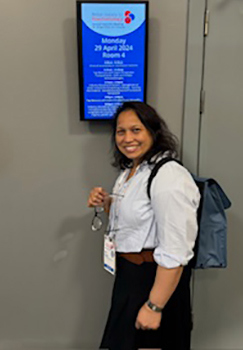
Thanks to the ASM scholarship I was able to fully enjoy the BSH conference in Liverpool. It was a great opportunity for networking and learning new things to bring to my team of nurses.
I was very proud to present the work and development we do in the Ambulatory Care Service. I would like to believe that my presentation has created a lot of interest among the participants at the conference.
Since I am a nurse, and I can mostly relate to the topic, Nursing in the post-transplant era was my favourite session, with great interest in women’s health post stem cell transplant. The presentation was packed with information I can share with my colleagues in bone marrow transplants.
It was a privilege to hear about the innovations and support that nurses can offer women.
The conference created an opportunity to promote our service to a wider audience, who were invited to join us in the upcoming Ambulatory Care Masterclass in November 2024.
It is my dream to build a network of ambulatory care services as I believe this is the future of cancer treatment. It is a truly great service with a positive impact on both the patient and the hospital.
I have shared this great experience with my colleagues and encouraged them to participate next year.
Fahad Alabbas, Haematologist, Prince Sultan Military Medical City (PSMMC), Riyadh.
Attended on behalf of Catalina Herran-Fonseca, of Autonomous University of Bucaramanga, Colombia (UNAB).

Attending the BSH annual meeting in Liverpool was a valuable experience that provided me with a wealth of benefits.
As a haematologist, the opportunity to travel to a new city and immerse myself in the latest developments and research within my field was incredibly enriching.
One of the primary benefits was the chance to see the country and experience the vibrant culture of Liverpool. Being able to walk the historic streets, visit landmarks like the Liverpool Cathedral, and sample the local cuisine gave me a deeper appreciation for the city and its people. This broader cultural exposure will help me become a more well-rounded and empathetic physician.
Of course, the conference itself was the main draw, and it did not disappoint. I was able to network and connect with haematologists from around the world, exchanging ideas and learning about the innovative work being done in the UK and beyond.
Hearing first-hand accounts of new treatment approaches, breakthroughs in diagnostic techniques, and challenges facing the field provided me with crucial insights I can apply directly to my own practice.
Speaking with leading experts gave me a nuanced understanding of how haematology is evolving in this particular region. Observing differences in healthcare infrastructure, resource allocation, and patient demographics has broadened my perspective and will help me provide even more personalised care to my patients back home.
Overall, this conference in Liverpool was an unparalleled professional development opportunity. It kept me up-to-date on the latest advancements in my field and allowed me to grow as a physician by expanding my cultural awareness and gloabal medical knowledge.
I am confident that the benefits I've gained from this experience will have a lasting, positive impact on my practice and, most importantly, the care I'm able to provide to my patients.
Gerard Gurumurthy, Medical Student, University of Manchester

I would like to thank the BSH for awarding me a travel grant to attend the Annual Scientific Meeting in Liverpool, where I presented a poster on the R90 genetic panel in thrombocytopenia cases.
As a medical student who has recently developed an interest in haematology, I found the event incredibly insightful and educational. It was fascinating to attend a wide range of seminars on the speciality and gain insights into novel research from industrial experts and specialists.
During the event, I thoroughly enjoyed learning about new research and developments within transplantation, gene, and cellular immunotherapies. Notably, the presentation on BEAM conditioning for lymphoma patients highlighted the importance of age as a significant factor in treatment outcomes, demonstrating the need for individualised care[1].
Another compelling presentation discussed the efficacy of obe-cel, a CAR-T product, in treating adult B-cell acute lymphoblastic leukaemia. It shows promising remission rates and manageable toxicity, which can greatly influence future therapy protocols[2].
I also greatly appreciated the Blood Stories session about patient journeys through their haematological diagnoses and treatments. This complemented the expert knowledge on CAR-T cell therapy where I listened to a patient's arduous experience with the treatment and the significant impact it had on her life.
Giacinto Luca Pedone, Trainee, University of Milan/Barts Health

Grazie mille BSH! I am a trainee at the University of Milan and have had the incredible opportunity to delve into the world of autoimmune cytopenias as a clinical observer and research fellow at the Royal London Hospital, NHS Barts Health. My focus has been on unravelling the mysteries of ITP and contributing to the UK adult ITP registry.
This remarkable experience wouldn't have been possible without the generous support of the BSH ASM grant. The scholarship allowed me to participate in the conference and to share my research findings with a brilliant audience of haematologists and scientists.
The BSH conference wasn't just about presenting my research. It was also an enriching immersion into the vibrant world of haematology. It offered a plethora of educational and research sessions on cutting-edge advances in all fields of haematology and fostered a sense of belonging to the BSH community.
Networking with colleagues and researchers, both established and upcoming, provided a platform to exchange ideas, share experiences, and build lasting connections. I look forward to continuing my journey in haematology and contributing alongside the BSH community.
Kushani Ediriwickrema, Lymphoma Clinical Fellow, University College Hospital London/CRUK and UCL Clinical Trials Centre
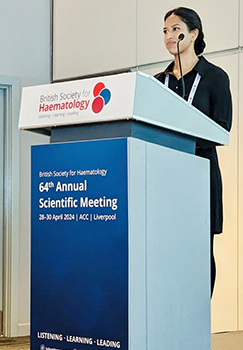
I am grateful to have received the BSH ASM Abstract Scholarship, which generously supported my travel and accommodation expenses.
This support enabled me to present my work, Glofitamab Efficacy, Tolerability, and Practical Implications in the Real World: A UK Multicentre, Retrospective Analysis, to a diverse group of attendees. The feedback received was invaluable and directly contributed to further refinement of my research.
The interactions fostered during the event have led to collaborative opportunities, enhancing my research quality and professional network.
The conference broadened my knowledge and understanding of the latest advancements across a broad spectrum of haematology topics.
I found the debate between Dr Matthew Wilson and Dr Jeff Smith on the Role of CNS prophylaxis in diffuse large B-cell lymphoma (DLBCL) particularly enlightening. The session showcased a riveting exchange between experts and delved into a thorough exploration of the historical context and ongoing practices that define CNS prophylaxis strategies in the UK.
This debate underscored the complexities and dynamic nature of practice and the impact that data can have on patient management, especially when dealing with rare but devastating haematological conditions with limited therapeutic options.
The debate sparked further discussion on future approaches to CNS prophylaxis and highlighted the difficulty in shifting established medical practices once a particular approach has been adopted.
Laura Munglani, Speciality Registrar, University Hospital of Wales
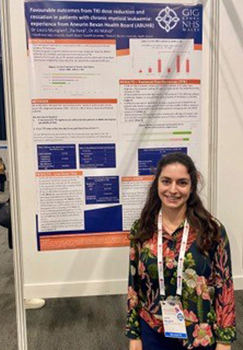
I was very grateful to be awarded the ASM abstract scholarship, which allowed me to present my poster Favourable outcomes from TKI dose reduction and cessation in patients with Chronic Myeloid Leukaemia: experience from Aneurin Bevan Health Board.
This was my second ASM attendance.
Both the ASM and the Pitfalls sessions, aimed at haematology trainees, provided invaluable learning opportunities.
The variety of speakers was excellent. The focus on minimal residual disease (MRD) monitoring in many subspeciality talks was insightful and a source of debate.
I particularly enjoyed the Pitfall in Genomics sessions on genomics in different subspecialities of haematology. Talks on Genomics in myeloid malignancies and The ethics of genomic testing were of particular interest. We were led through a series of case studies highlighting the ethical dilemmas and challenges that can occur if genetic tests are done without informed consent. There may be wider implications for family members, for example finding germline mutations on a myeloid NGS panel.
Other standout sessions included the BSH & ASH session on Sickle Cell Disease – a global health issue, which considered the challenges of caring for migrating patients with sickle cell disease from Sub-Saharan Africa and the Indian subcontinent.
This thought-provoking talk was followed later in the conference by the BSH & European Hematology Association (EHA) joint session on Challenges to haematology across geographical Europe, where the global mobility of migrants and refugees with haemoglobinopathies was discussed.
The high prevalence of anaemia of >20% in refugees and the lack of coordinated policies to identify refugees with haemoglobinopathies in arriving countries, make it particularly challenging to ensure individuals access care before complications develop.
Finally, one huge benefit of attending the ASM was being able to meet up with other colleagues from across the UK, to network and discuss ideas and differences in training. It also allowed me to present my poster.
I would recommend the ASM and Pitfalls Day to all haematology registrars, to benefit from such a fantastic educational event.
Michelle Tan, Research Scientist, Imperial College London

I extend my sincere gratitude to the British Society of Haematology for awarding me the ASM Abstract Scholarship. This allowed me to attend the 2024 conference and present my oral abstract CD8+ T cell modulation by eltrombopag in immune thrombocytopenia.
I've been interested in immunology and haematology since I first went to the ASM in 2019, and being able to stay updated in these fields is a privilege.
Thanks to the ASM grant, I've been able to actively engage with cutting-edge content surrounding haematology and thrombosis. As a scientist, this has provided valuable insights on how to delve deeper into disease mechanisms and, optimistically, contribute to the enhancement of patient care standards.
During the conference, a particular study captured my attention for its innovative approach to the treatment of multiple myeloma. I was fascinated by the exploration of CAR-iNKT immunotherapy for multiple myeloma as an alternative to CAR-T, aimed at mitigating the risks of graft-versus-host disease (GVHD)[1].
Although my primary research is in immune thrombocytopenia, I'm intrigued by the idea of applying similar methods to haematological diseases. I see potential in adapting similar methodologies to the treatment landscape of immune thrombocytopenia, thereby broadening the scope of therapeutic interventions and potentially revolutionising patient outcomes.
In summary, the BSH grant has facilitated my professional growth by enabling me to participate actively at the conference and has sparked intriguing avenues of exploration within the field of haematology. I extend my sincere appreciation for this support and remain committed to leveraging these experiences to contribute meaningfully to the field and, ultimately, to patient welfare.
Reference
1. Ponnusamy, K. et al. Optimal, Off-the-Shelf, CAR-iNKT Cell Platform-Based Immunotherapy for Multiple Myeloma. Blood 142 (Supplement 1):3459 https://doi.org/10.1182/blood-2023-189905
Oliver Firth, Clinical Fellow, NHS Blood and Transplant
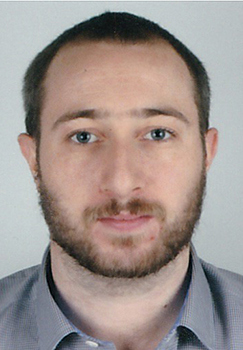
This is the first time I have submitted an abstract to a conference, and being awarded the scholarship has given me a significant boost in confidence to continue the work that I am doing.
The grant has driven me to write abstracts on other projects I’ve been working on, such as the use of irradiated blood in paediatric cardiac surgery and the use of smartwatch data for the protection of blood donor health.
Being able to travel to and attend the BSH conference has given me insights into areas of possible quality improvement at my local trust. The presentations on cancer-related thrombosis and its prevention have energised me to start a quality improvement project to address this for our department.
Richard Salisbury, Research Training Fellow, Oxford University Hospitals NHS Foundation Trust

I was awarded an Annual Scientific Meeting abstract scholarship to attend the 2024 BSH conference in Liverpool.
This allowed me to present my work on improving the quality of care for patients having red cell exchange transfusions for sickle cell disease. This was a fantastic experience and there was a really helpful discussion during the question-and-answer session following my presentation.
This is hopefully going to lead to a collaboration, which will increase the volume of data I have available to build a model of HbS dynamics over time.
The tool will be useful for blood banks pre-ordering the correct volume of blood in advance of patients attending for their regular exchange transfusion. It could potentially be used for rapid approximation of HbS% in patients presenting in crisis following an exchange transfusion out of hours, where it is impossible to accurately measure this acutely.
In addition to the experience of presenting at the conference, I really benefited from the great variety of sessions on display throughout the three days. As a clinical research training fellow, soon to return to haematology training following completion of my PhD, this was particularly helpful.
In particular, I thought that Professor David Kuter’s educational session What you need to know about warm autoimmune haemolytic anaemia was outstanding. His knowledge of the field and the ease with which he directed the audience through a rapidly evolving therapeutic landscape was inspirational.
I would also like to highlight the Expanding strategies for enhancing health and well-being: diversifying our approach session, which discussed an innovative holistic approach to supportive care that I hope gains traction in the coming years.
The talks on the impact of an improved diet and the benefits of exercise were particularly interesting. It would be nice to see more clinical trials moving into this space so we can be confident we are doing our very best to support our patients outside of their disease-modifying therapies.
Surita Dalal, Research Fellow, University of Leeds/Leeds Teaching Hospitals Trust

I am grateful to the BSH for awarding me an ASM Abstract Scholarship. The grant enabled me to attend the 2024 ASM in Liverpool to present my abstract NCRI Flair Trial: Assessment of mutational landscape of CLL patients at baseline and prognostic impact, which was selected for an oral presentation.
This was my first ASM. As a research scientist, I particularly enjoyed attending the educational sessions where treatment selection and sequencing for patients with chronic lymphocytic leukaemia (CLL) were discussed by panels of experts.
Although there have been huge developments in the treatments available, optimal selection of treatment for both first-line and relapsed patients remains a challenge in CLL[1].
Hearing the panel debate their approach to treatment, along with audience participation, was really informative. I was particularly interested in how the molecular profile of CLL patients fed into the clinical decisions made. The discussions helped me think about additional patient subgroups on which to focus research.
There was an engaging discussion around the challenges of getting certain targeted treatment combinations for CLL funded in the UK.
As we move to a more personalised approach to patient treatment, it was interesting to hear Dr Angela Hamblin’s presentation NHS-ready targeted NGS panel guides risk-adapted treatment intention in newly diagnosed myeloma patients. Dr Hamblin spoke of how their Myeloma Genome Project Panel (MGPP) had better success identifying high-risk patients compared to FISH analysis, which in turn positively influenced the clinician’s choice of therapy.
Based on these results the MGPP is now being rolled out in a larger cohort of patients as part of the new NHS Genomic Medicine Service.
The ASM also provided a fantastic opportunity to network with colleagues within the wider haematology community. As a research scientist, I found the meeting invaluable, and I look forward to attending again next year.
Reference
1. Bennett, R., Anderson, M. A., Seymour, J. F. Unresolved questions in selection of therapies for treatment-naïve chronic lymphocytic leukemia. J Hematol Oncol 16, 72 (2023). https://doi.org/10.1186/s13045-023-01469-7
William Kwesi Ghunney, Haematologist, Ghana Institute of Clinical Genetics

I thank the BSH for the 2024 ASM Abstract Scholarship, which supported my attendance at the meeting in Liverpool.
I was pleased to present my abstract as a poster - Serum Soluble VCAM-1 is Not Associated with Severity of SCD in Adult Ghanaian Patients.
It was my first time attending the ASM. I got the opportunity to interact with many practising haematologists and oncologists in other countries. This experience made me reflect on the differences and similarities between the practice of haematology in Ghana and the UK.
Dr Nikki Curry’s session on major bleeding compared cryoprecipitate with fibrinogen concentrates in the formation of stable clots and emphasised the need to have functional major haemorrhage protocols in our institutions. This was re-emphasised by Professor Stanworth when he took us through the BSH guidelines for the Haematological management of major haemorrhage.
Professor David Churchill’s lecture Treating Anaemia - do we know how to use oral iron in pregnancy? considered the influence of iron status on the risk of maternal and neonatal infections and neonatal mortality in developing countries.
Overall, I had an excellent time at the BSH ASM 2024. I very much look forward to attending in future years.
Alexandra Butler, VTE Prevention CNS, George Eliot Hospital NHS Trust

By attending the BSH ASM in 2024 I was able to increase my clinical knowledge. It encouraged me to look at challenges from different perspectives and consider different approaches. I have been able to bring that knowledge back to my trust and look at ways to improve patient care and staff education.
There were updates to guidance that we use on a daily basis. These have implications for the way our deep vein thrombosis (DVT) service works and provide potential improvements for both staff and patients. The talks that made the most impression on me were:
Joint lecture from BSH and EHA – the Climate change, migration and inequality talk was hard-hitting and has made me think in very different ways about reducing my personal carbon footprint.
CLOT Thrombosis prevention around the world - it was fascinating how medical emergencies are managed in the heart of the Antarctic.
Both the obstetric Breakfast with the Experts and the Obstetric sessions were excellent and reminded me how much I miss my haematology obstetric patients. I need to look at how I can offer some sort of service to them in the future.
The most useful publication for me in my day-to-day practice was the newly updated Cancer-associated venous thrombosis in adults[1]. This was discussed in the What is new in anticoagulation session along with another informative session about anticoagulation of unprovoked venous thromboembolism in women.
Overall, this ASM was a great meeting to attend and I am looking forward to attending next year’s meeting already.
Reference
1. Alikhan, D. et al. Cancer‐associated venous thrombosis in adults (second edition): A British Society for Haematology Guideline. British Journal of Haematology 2024; 205(1): 71–87. https://doi.org/10.1111/bjh.19414
Alice Williamson, Haematology Clinical Nurse Specialist, Chesterfield Royal Hospital
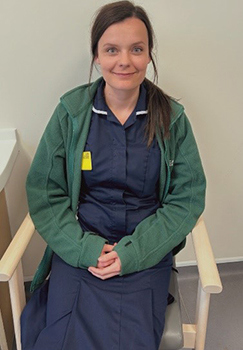
I was given the opportunity to attend the 2024 ASM in Liverpool on the Sunday.
The conference allowed me to meet new people and to gain information from different organisations.
There was a good range of sessions to attend. These were beneficial to my role and helped to give me more in-depth knowledge in certain areas.
The session I found most useful was The role of geriatric assessment when determining treatment in older patients with newly diagnosed AML. As a trust, we are seeing more patients being treated with VEN/AZA so this was very interesting. I learned how the assessment of patients is completed, and what makes them a candidate for this specific treatment. I now feel more confident supporting people through the assessment process.
I enjoyed my time at the conference and I am hoping to attend the whole event in 2025. This will help further my knowledge and understanding of haematology and develop my skills as a haematology clinical specialist nurse.
Angela Gascoigne, Haematology Clinical Nurse Specialist, Chesterfield Royal Hospital
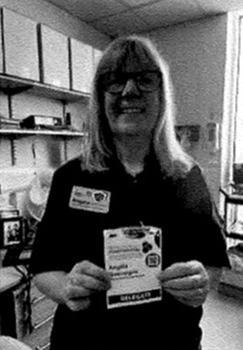
I thoroughly enjoyed the conference and found it very informative, particularly the sessions on Myeloproliferative Neoplasms (MPN).
The knowledge I gained will lead to discussions with my haematology consultants, particularly around changing from hydroxycarbamide to ruxolitinib for patients who do not achieve good control of haematocrit results. It was interesting to hear that poor control can be defined as requiring up to four venesections per year.
I also enjoyed the session led by Priyanka Mehta on The development of a UK AML registry, which sounds very exciting.
The opportunity to network and share good practice has been invaluable.
Contact details have been exchanged with a plan to continue discussions on how best to utilise haematology support worker roles.
Catherine Tanner, Haematology Clinic Nurse Specialist, Hampshire Hospitals NHS Trust

This was my first time attending the Annual Scientific Meeting thanks to the ASM Nurse Travel Scholarship and I am very grateful for the experience.
The conference was extremely informative and a fantastic opportunity to network and share knowledge with other haematology professionals in a vibrant, engaging environment.
I found the nursing sessions particularly educational, and it was inspiring to hear about the services being implemented by nurses in other hospitals across the country.
It also sparked conversations between myself and my team about possible improvements we could make in our own service based on what we have learned.
I was really interested in the session Nursing in the post-transplant era and we have taken a lot of learning points that we will incorporate into our practice.
I found the debate on the role of CNS prophylaxis for diffuse large B-cell lymphoma really fascinating. We do not administer this treatment at our hospital, so our patients are referred to another site if they require it. As such I do not have much involvement in the discussion surrounding the treatment, so it was very interesting to hear both sides of the debate and it challenged my initial thoughts.
It was brilliant to be able to visit some of the support groups we refer our patients to and learn about the new resources and information available. I look forward to passing this on.
All in all a fantastic couple of days and I very much hope to be able to attend again in the future.
Christina Kirby, Haematology & Transfusion CNS, Hampshire Hospitals NHS Trust
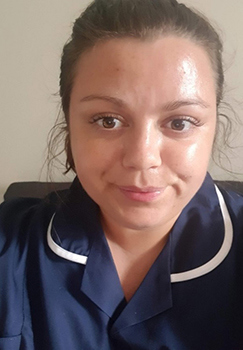
It was my third time attending the BSH Annual Scientific Meeting. I attended on two days and found it incredibly inspiring and informative.
The sessions I found most beneficial were those on chronic lymphocytic leukaemia (CLL) and lymphoma. I was particularly interested in the symposium discussing relapsed CLL and venetoclax. The knowledge I gained will help me to develop my nurse-led clinic within this field.
A talk about the use of CNS prophylaxis in lymphoma was constructed as an argument for and against its use. It was incredibly useful to hear both sides of the argument in relation to practice and the clinical evidence. The session was interactive and there was a lot of discussion and sharing of practice in the room.
All in all, it was a very positive experience and will benefit my nursing practice.
Debbie Franchini, Haematology Clinical Nurse Specialist, Hampshire Hospitals NHS Foundation Trust

Thanks to the BSH grant, I was able to attend the first two days of the 2024 Annual Scientific Meeting in Liverpool. Working as a clinical nurse specialist in a small district general hospital, it is often difficult to obtain funds for CPD. It would not have been possible for me to attend without the support from BSH.
As always, I was inspired by the passion and dedication that all speakers and attendees demonstrated during the ASM. Talking to other nurse specialists and representatives of the charity sector has given me new ideas for service improvement and I cannot wait to discuss possible positive changes with colleagues at my local hospital.
I believe it is always possible to improve patient experience and I found the Patient Support Group session on Monday afternoon extremely useful.
I look after a very small cohort of patients with paroxysmal nocturnal haemoglobinuria (PNH) and historically it has been challenging for them to access psychological support. It can be difficult for us to meet their needs, which are often very specific and not shared by other larger patient groups. I will reach out to Marian Piggin, who currently chairs PNH Support, as it would be great to collaborate to improve our PNH patients' experience.
In practice we often refer patients to larger centres for transplant or CAR-T, therefore I found the session Nursing in the post-transplant era particularly useful. Rebecca Hallam and Maria Mazza-Beange delivered a brilliant presentation on the clinic they have recently set up to address early menopause in post-transplant patients.
The session was well structured and informative and I want to congratulate the presenters on their initiative, which identified and addressed an unmet need for women undergoing intensive treatment. I think their interventions will improve women’s quality of life and I will make sure to discuss early menopause in my pre-chemotherapy counselling sessions going forward.
Deborah Reed, Macmillan Haematology CNS, Northern Lincolnshire and Goole NHS Foundation Trust
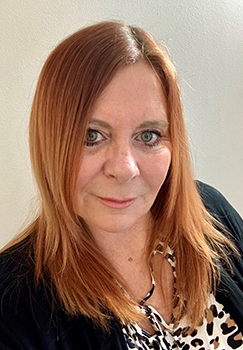
Receiving a grant from the BSH was a transformative experience, providing invaluable opportunities to advance my career, expand my knowledge, and contribute to the field of haematology. It has enabled me to achieve several significant milestones and accomplishments.
First and foremost, the grant allowed me to attend the BSH conference by supporting travel, accommodation and registration. This support helped mitigate the financial barriers hindering nurses like me from participating in such events.
Leading experts, researchers, and clinicians convened to share the latest advancements, research findings, and clinical insights. It provided a platform to immerse myself in the forefront of haematology research and clinical practice, gaining exposure to cutting-edge developments and emerging trends that are shaping the future of the field.
The conference facilitated networking with fellow professionals, fostering connections essential for advancing research and clinical practice in haematology. Engaging with peers, mentors, and industry leaders has broadened my professional network, opening doors to new collaborations, mentorship opportunities, and potential research partnerships.
The ASM offered a rich and diverse programme of educational sessions, workshops, and symposia covering a range of topics in haematology. These provided a comprehensive overview of the latest advancements, best practices, and clinical guidelines in various subfields of haematology, enriching my knowledge and expertise.
Beyond the immediate benefits of attending the conference, receiving a grant from the BSH has had a lasting impact on my professional development and trajectory in haematology. I was introduced to several studies relevant to my work[1][2]
Recognition and support from such a prestigious organisation have enhanced my credibility and visibility within the field, strengthening my credentials and opening doors to future career opportunities.
Overall, obtaining a grant from the British Society for Haematology and attending the ASM have been invaluable in shaping my journey as a haematologist clinical nurse specialist and researcher.
References
1. Haematology Malignancy Research Network – Incidence statistics. Available at HMRN - Incidence
2. McMullin, M. F. F. et al. A guideline for the management of specific situations in polycythaemia vera and secondary erythrocytosis. British Journal of Haematology (BJHaem) 13 November 2018.
Fhuong Hoang, Advanced Nurse Practitioner, University College London Hospital

This year I was able to attend the 64th British Society for Haematology Annual Scientific Meeting in Liverpool with the support of a BSH travel scholarship. I am grateful for this as without it I would not have been able to attend.
Attendance at the ASM gave me an opportunity to learn about new developments and research across different haematological groups.
Having been in a lymphoma clinical nurse specialist role for two years I was particularly interested in this subject area. I attended the lymphoma focus sessions and furthered my understanding of the most up-to-date lymphoma treatment. This will undoubtedly help me support and care for patients.
Attending the ASM also gave me a better understanding of acute leukaemia and myeloma treatment pathways. It has given me a refreshed focus on other disease groups and inspired me to lead on quality improvement from a nursing perspective.
I found the session on CLL and Richters transformation informative, as I had recently looked after a patient with the condition. It brought the management plan into perspective, and I feel I will be able to better inform patients in future.
I was pleased to attend the cardiology session given by Dr Arjun Ghosh on CAR-T cardiotoxicity and by Professor Charlotte Manisty on Cardiovascular considerations in myeloma patients. I have explored this area to improve the supportive care of those receiving cardiotoxic SACT.
Learning about developments and current guidelines will help me advocate for increased preparation and surveillance for cardiotoxicity and management.
Equally, the advantageous role of the ambulatory care setting was highlighted at BSH. Having worked in an ambulatory care setting, I would be pleased to share my experiences as the healthcare and treatment settings evolve.
I also attended the Haematology Essentials sessions. These were very informative and I would encourage other healthcare professionals to attend.
I hope that representation of the nursing profession at conferences such as the ASM continues and increases. Thank you again to the BSH for the support that allowed me to attend. I hope to return to subsequent meetings to showcase nursing research and ongoing projects.
Gemma Whitehead, Haematology Clinical Nurse Specialist, Chesterfield Royal Hospital
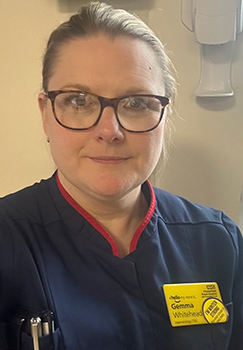
I was able to attend the opening day of the ASM 2024 with scholarship funding.
As we are not a transplant centre in Chesterfield, the Nursing in the post transplant era was very informative. I learned about some of the late effects of bone marrow transplants on women, particularly the early onset of menopause.
I feel this will help structure conversations with patients pre-transplant and make conversations with the transplant specialist nurses easier. I would hope it makes for a more cohesive patient journey in terms of support between different NHS trusts.
This session also provided links to a study day regarding ambulatory best practice, which I was able to pass on to my colleague who runs our ambulatory service, who was unable to attend the conference.
I attended a Meet the Expert session: Transfusion and supportive care, which turned out to be much more interesting than expected. The session looked to create a group of professionals dedicated to, and passionate about, driving evidence-based change in supportive care. This has the potential to expand the scope of my practice into the research arena.
I hope to be able to attend the ASM in 2025 for the full duration and access more nurse-related content.
Karen Curtis, Anticoagulant Specialist Nurse, Great Western Hospital, Swindon
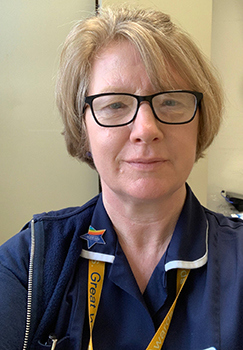
It was my first time attending the BSH ASM and I found it very informative and educational.
I attended Haematology Essentials the day before the conference and found this very insightful. The emphasis was on looking at various types of anaemia and interpreting the full blood count. I especially enjoyed the afternoon group sessions, where different cases and how to proceed with treatment were discussed.
The session spent looking at a clinical case of pulmonary embolism in pregnancy was interesting and thought-provoking as venous thromboembolism remains the leading direct cause of death.
I also valued the session on long-term anticoagulation for menstruating women, which aimed to make clinicians aware of possible underlying reasons for heavy bleeding, rather than simply focusing on the anticoagulant.
The industry educational session on the management of direct oral anticoagulants (DOAC) relating to gastrointestinal bleeds was informative, with perspectives from a haematologist and a gastroenterologist.
I came away from the conference with new information to disseminate to my colleagues.
Karen Squires, Sister Chemotherapy Educator, Chesterfield Royal Hospital
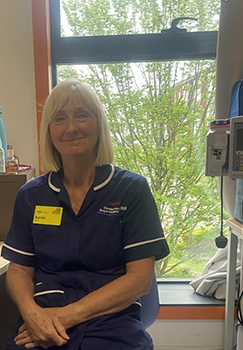
Thank you for allowing me to attend the Annual Scientific Meeting in Liverpool. It was my second ASM. The location was perfect for the hotel and the food and refreshments available at the meeting were in abundance.
I found the session Role of geriatric assessment when determining treatment in older patients with newly diagnosed acute myeloid leukaemia (AML) particularly informative. There is currently no tool available so this would be useful to consider in these patients. This session was very well-attended.
At my place of work, we regularly admit patients for first-dose venetoclax with azacitidine to monitor for tumour lysis.
I also attended a Meet the Expert (MtE) session discussing transplant issues. I would like to have attended a session on transfusion, but it coincided with MtE.
It was also interesting to attend the displays and companies in the lower foyer and meet the representatives with them.
Phanoeurn Heng, Oncology Nurse, Angkor Hospital for Children
At this huge conference, I heard many good talks related to haematology and oncology. I have learned a lot about updates in management and care. I am very interested in bone marrow transplant and care.
I was also interested to meet with nursing experts who were very kind and shared their experiences of caring for patients.
I will be sharing my knowledge with my team to provide better care for our patients in the hospital. It is a big challenge to deal with cancer treatment and care in my country.
Richa Tyagi, Haematology Clinical Nurse Specialist, Basingstoke and North Hampshire Hospital

This was my first time attending the BSH Annual Scientific Meeting (ASM) and my first visit to Liverpool. I would say the event was organised on a great location- Albert Docks.
The conference was spread over three days covering many aspects of haematology. I attended several sessions during the two days.
After attending the Welcome Address I tried to find the most appropriate session for knowledge gathering. Luckily, I had the BSH app and printed booklets providing details of all discussions along with the relevant room numbers.
I was particularly interested in myeloma. I really enjoyed the Myeloma sessions with expert perspectives, where newer protocols for treating Myeloma were discussed.
Another popular and beneficial session focused on the drug momelotinib as a novel agent in relapsed/refractory multiple myeloma (RRMM). This included some trial data on the drug's use as a treatment option.
The sessions were planned carefully, keeping in mind the vast audience and their educational needs.
The sessions were planned carefully, keeping in mind the vast audience and their educational needs. The conference provided good networking opportunities and I was able to set up some webinars with other haematology nursing experts.
I had the opportunity to meet a few pharmaceutical representatives and had further discussions about myeloma treatment using targeted therapies.
Overall, the ASM was a great learning experience and I was happy to be a part of it.
Sinead Duffy, Lead Coagulation Nurse Specialist, Kings College Hospital, London

I was really grateful to receive funding from the BSH to support my attendance at the ASM in Liverpool.
I am a clinical nurse specialist in coagulation and immune thrombocytopenia (ITP) and felt really fortunate to be able to attend.
There were lost of sessions which were particularly relevant to my current practice. I found all the content to be of high-quality. It made me feel inspired and proud to be part of haematology.
The session I enjoyed most was What is new in anticoagulation? This was extremely relevant to my practice and a fantastic summary of current guidance and research.
I was pleased to have had a poster submission at the conference[1]. It was a pleasure to be part of the poster session and a great opportunity to meet and network with those in the speciality from across the country and beyond.
I would really encourage all clinical nurse specialists working in haematology to attend the conference to benefit from the education sessions and to submit abstracts to showcase all the hard work they are doing.
Reference
1. S Duffy, E Gee, R Byrne, J Czuprynska Service Evaluation - Are we meeting the needs of our ITP patients?
Stavroula Chante, Macmillan Lead Cancer Nurse/Hamatoloty ACP, Royal Wolverhampton NHS Trust/Oxford Brookes University
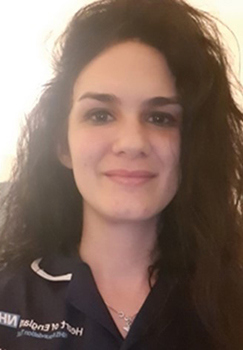
As part of the 2024 ASM I chaired the Nursing in the post-transplant era session on Sunday 28th April and facilitated the Meet the Nursing Experts the same day. Also, I am one of the Nurse Representatives within the BSH ASM Programme Committee, having been a member for nearly four years.
I had the opportunity to meet and exchange ideas with other prestigious nursing professionals.
I attended the BSH and industry sessions on Multiple Myeloma and diffuse large B-cell lymphoma, as these are my areas of clinical expertise. The sessions significantly improved my knowledge, providing updates on current treatments and side effects.
More specifically, I thoroughly enjoyed the BSH Early Career’s Forum Round Table Discussion - Future of Haematology: The Importance of Mentorship session, as I could relate to the experiences mentioned.
I felt empowered, motivated and hopeful that initiating a PhD while working two jobs is actually feasible!
I also managed to network and exchange professional emails and LinkedIn accounts with the nursing and medical panellists. As an outcome, I have registered for the Mentorship Programme as a mentee, and I am developing my profile as a mentor. This session increased my awareness of the mentorship programme, and I can communicate this to my haematology colleagues.
I am really looking forward to receiving a matched mentor and eventually a mentee, where I can share my areas of interest and contribute towards others' professional and personal development.
Thank you for giving me this opportunity.
Sushanth Joseph, Haematology Clinical Nurse Specialist, Queen Alexandra Hospital, Portsmouth

I was fortunate to have the opportunity to attend the BSH Annual Scientific Meeting in Liverpool. I attended the event on the Saturday prior to the conference, which was for junior doctors, advanced nurse practitioners and clinical nurse specialists. This was very informative, with interesting and engaging workshops.
I was surprised at the high number of conference attendees, and that I could listen to the latest research and findings from national experts.
I found poster BSH24-PO19 very interesting as it showed real data from a multi-centre study. The study found the use of azacitidine and venetoclax to be of little advantage in TP53 mutated AML patients. I attended many small group sessions with experts, which will encourage me to invest more time studying and updating my knowledge.
From the opening ceremony and B-Positive choir to the final session on AML I found the experience valuable and educating.
Thanks to the BSH for providing the grant to attend the ASM.
Yasmin Al-Azzawi, Lymphoma Clinical Nurse Specialist, Northampton General Hospital
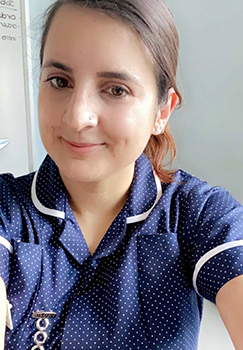
I was fortunate enough to secure funding from the BSH to attend the 2024 BSH Annual Scientific Meeting in Liverpool.
I got to experience a wide range of activities including new research, networking, and a poster display.
I particularly liked the significant attention to person-centred care in the treatment of lymphoma. A notable presentation involved improving communication between healthcare providers and patients, emphasising personalised care pathways.
This approach integrates patient preferences, emotional well-being and lifestyle factors into treatment plans, aiming for better clinical outcomes and enhanced patient satisfaction.
Research discussed at the conference also highlighted the importance of tailoring treatment to individual patient needs, moving beyond a one-size-fits-all approach.
The integration of patient perspectives into clinical trial design and therapy choices was also stressed, ensuring that patient experiences and quality of life are prioritised alongside clinical efficacy.
This shift towards personalised, patient-centred care reflects broader trends in haematology to improve not just survival rates, but also patient engagement and well-being throughout treatment.
Aaliyah Sharif Abdalla, Quality Monitoring Manager, NHS Blood and Transplant

The ASM Travel Scholarship has significantly advanced my academic and professional journey.
The grant gave me the opportunity to attend the prestigious BSH Annual Scientific Meeting, which has been pivotal in multiple aspects of my career. It covered travel, accommodation, and registration fees, alleviating any financial barriers, and allowing me to focus entirely on the conference's rich offerings.
At the conference, I was exposed to cutting-edge research and groundbreaking advancements in haematology, which have been crucial in broadening my knowledge and staying updated with the latest developments in the field.
By attending various sessions, workshops, and panel discussions led by renowned experts, I gained deep insights into innovative methodologies and emerging trends. This knowledge has been directly applicable to my ongoing research projects, enhancing their quality and impact.
The networking opportunities facilitated by the ASM were equally transformative. I established connections with fellow researchers, clinicians, and industry professionals, fostering collaborations that have enriched my research and opened doors to future projects. These interactions have also been invaluable for my professional development, offering mentorship and guidance from experienced professionals in the field.
Moreover, the grant enabled me to participate in specialised training sessions and workshops that have given me advanced skills and techniques, furthering my expertise in haematology. This has had a direct positive impact on my current research, improving its efficiency and outcomes.
In summary, the BSH ASM scholarship has been a cornerstone in my academic and professional growth, providing me with unparalleled opportunities for learning, networking, and skill development, and significantly enhancing the scope and quality of my research in haematology.
Ahmed Mohamed Ali Ibrahim Abelrahman, Clinical Pathology Specialist, Mansoura University Student Hospital, Cairo

I want to express my gratitude for the BSH Annual Scientific Meeting (ASM) Travel scholarship. It was my first time attending the ASM and I found it tremendously educational and practical. I was surprised by the warm welcome.
I particularly enjoyed the session Prediction and Anticoagulation in Fasching Predication and anticoagulation in cancer-associated thrombosis by Prof. Ingrid Pabinger. She talked about how best to define high-risk patients and the risk factors for developing venous thromboembolism in cancer patients[1] and I took helpful notes.
I liked the sessions on Optimising Management Strategies in Myeloproliferative Neoplasms by Samah Alimam, Dr.Donal MacLornan and Nicola Polverelli. MPN in pregnancy and approaches to janus kinase inhibitor therapy in myelofibrosis are topics of interest to me.
The ASM provided an incredible opportunity to connect with others in my field, and I thoroughly enjoyed the engaging discussions.
I would like to express my sincere appreciation to the BSH for this wonderful experience.
Reference
1. Ay C., Pabinger I., Cohen A.T. Cancer-associated venous thromboembolism: Burden, mechanisms and management. Thromb Haemost. 2017 Jan 26;117(2):219-230
Aidan Haslam, Clinical Research Fellow, University of Birmingham

I attended the BSH ASM in 2024. The following were my highlights.
I went to The evolution of clonal haematopoiesis to AML by Caroline Watson and Selection of age-related haematopoietic clones by Asger Jakobson. I had a previous interest in clonal haematopoiesis of indeterminate potential (CHIP). However the computational modelling of incremental fitness effects was really interesting.
My PhD research is in monoclonal gammopathy of undetermined significance (MGUS) to multiple myeloma transition informed via metabolomics. Understanding the mutational landscape in which MGUS clones develop into myeloma through some of the new sequencing approaches[1] may allow the development of a more accurate risk prediction model.
Likewise, the computational understanding of CHIP development over decades is applicable to understanding MGUS and why the risk of progression persists even over the course of twenty years.
After enjoying haematology podcasts like Don’t Just Read the Abstract I met and talked with the creators about journal clubs and critical appraisal training. This inspired me to organise a pilot journal club meeting for clinical PhD students at my institution.
I greatly enjoyed the Young EHA day at the ASM and seeing researchers from around the UK and abroad present their work. I hope to get involved and help plan the next Young EHA session and decide on the agenda and topics.
I discussed research projects with near-peer colleagues who have expertise in a different area of research to me.
HaemSTAR’s success is really inspirational and led me to reflect on leadership in haematology. It underlined that research impact relies on lots of soft skills that help keep a large group of geographically diverse people working towards a common goal.
All of these connections have been possible through attending the ASM and will set the stage for hopefully months and potentially years of productive work.
Reference
1. Watson, C. et al. The evolutionary dynamics and fitness landscape of clonal hematopoiesis. Science Vol 367, Issue 6485, 27 March 2020. DOI: 10.1126/science.aay9333
Ranpati Dewage Hansa Ramanayake, Haematology Trust Doctor, St James's University Hospital, Leeds

Throughout its history, BSH has provided theoretical and practical knowledge through listening, learning and leading.
As an ASM scholarship holder, I enjoyed the different aspects and educational content of the ASM.
The programme offered speakers in the major areas of haematology. From the three options on offer on the Saturday before the conference, I selected Haematology Essentials. The session was suitable for trainees or those considering a career in haematology. Though the programme was theoretical, the presenters explained things in a way that was easy to understand.
On the first day, the Challenges in diagnosis of haemostatic and thrombotic disorders session was very popular. There was also a lot of interest in Nursing in the post-transplant era, which included a discussion about the new practices of nurse-led clinics on early menopausal symptoms, vaginal GvHD and sexual health after BMT in young female patients.
I missed some interesting sessions on the final day due to the parallel timetabling, but received updates from colleagues.
The Who, when and how to transplant in AML and Advances in the management of acute myeloid leukaemia sessions offered practical advice for treating patients. The discussions were directly related to the criteria for transplant selection in AML below forty years and above forty years with underlying comorbidities.
I enjoyed the Optimising chemotherapy options in fit adults with AML, Expanding treatment options in unfit adults with AML and Management of Relapsed AML sessions.
The poster presentations provided extraordinary information on recent research, particularly Cytokine release syndrome in haploidentical peripheral haematopoietic stem cell transplant, an underestimated risk for transplant-related mortality? by King’s College Hospital.
Finally, the venue was lovely and easily accessible. Coffee breaks and lunches were well-balanced and delicious. The main sponsors exhibited their programs well.
Overall, as a BSH grant holder, I found the conference very enjoyable.
Emily Mean, Clinical Specialist Myeloma Physiotherapist, Hampshire Hospitals NHS Foundation Trust (HHFT)

Receiving the ASM Travel Scholarship allowed me not only to attend the 2024 BSH ASM but so much more….. I attended with my nursing colleagues, who make up the Haematology Clinical Nurse Specialist Team at Hampshire Hospitals NHS Foundation Trust.
We work across two geographically different sites with two teams of haematologists. The opportunity for us to spend time away together socially and professionally has had an enormous impact on our working relationships and in turn on patient care. It enabled conversations about our current practices and challenged us on how we can improve our current services and the way we communicate with each other.
The ASM informed us of new and exciting evidence and treatments and the impact these will have on our patients. I am in a unique position in my role as a physiotherapist working purely in haematology. Attendance at the ASM was the only opportunity I had for such a degree of learning in my chosen field.
I particularly valued the session Expanding Strategies for Enhancing Health and Wellbeing: Diversifying Our Approach and Patient Support Groups- whose responsibility is it to support patients? sessions.
I was able to connect with Shireen Kassam after the session and share with her some of the initiatives that we have developed at HHFT, such as our Haematology Exercise Class and Myeloma “Walk and Talk”. We have shared contact details so that we can share practice and results.
I had the opportunity to support two physio students for six weeks in April/May. I was able to share some of the newest treatment options in myeloma with them, and explain how this will impact our patients in the future: How is the evolving Multiple Myeloma therapeutic landscape changing treatment decision-making? I have added this into my teaching presentation to share with other colleagues and future students.
On my return, I was asked by patients in the weekly exercise class what I had learned at the ASM. I was able to share news of new treatment options and outcomes that will affect their treatment journey in the future. This gave them new hope and new insight into treatment developments.
I am incredibly grateful to the BSH for the financial support to attend the ASM and for their continued inspiration in supporting me to fulfil my clinical role.
Joshua Bray, Intercalated PhD student, University of Leicester
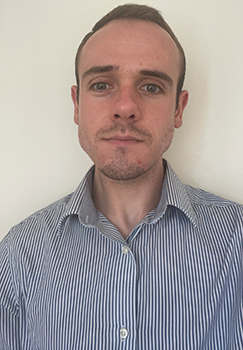
I am incredibly grateful for the BSH ASM Grant, which enabled me to attend the Annual Scientific Meeting this year in Liverpool.
The conference was fascinating from both clinical and scientific perspectives. There were interesting insights from all areas of haematology, including haemato-oncology, haemoglobinopathies, haemostasis, thrombosis, laboratory haematology and education.
I have developed a strong appreciation for how the clinical landscape of haematology is constantly evolving and how the latest research shapes the care and treatments our patients receive.
My particular research interests lie in lymphoma and immunotherapy. It was great to hear updates from the Phase II Glofitamab trial by William Townsend, as well as the first presentation of Real-world data on Glofitamab within UK centres by Kushani Ediriwickrema.
I was equally intrigued by new innovations in CAR-T technology, including Optimisation, off-the-shelf, CAR-iNKT immunotherapy to treat multiple myeloma presented by Kanagaraju Ponnusamy and And-Gate CAR-T cells to improve tumour specificity and targeting of low-expression antigens in multiple myeloma by Georgina Anderson.
I presented a poster, entitled Comparing the in vitro activity of CD20xCD3 bispecific antibodies in Diffuse Large B Cell Lymphoma. It was a great opportunity to share my work with others and it initiated some very interesting discussions to take back to my research group.
The conference has certainly cemented my ambitions to pursue an academic clinical career in haematology.
Overall, I had an excellent time at BSH ASM 2024 and I very much look forward to attending in future years.
Lily Scourfield, Academic Foundation year 2 Doctor in Haematology, King's College, London
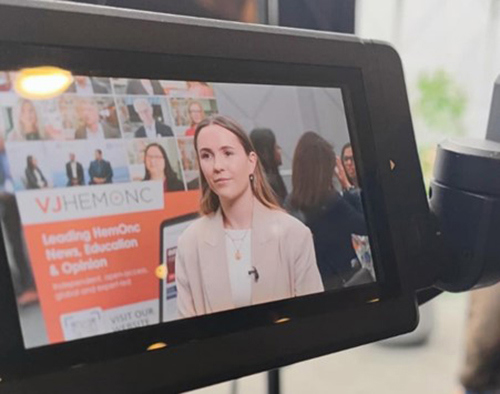
I was extremely grateful to have been awarded the BSH ASM Travel Scholarship.
It allowed me to give an oral presentation of my work ICU Outcomes in CAR-T patients: A four-year tertiary experience highlighting the importance of close multidisciplinary teamwork in delivering a safe and successful cellular therapy programme. It was based on our experience in King’s of those who required critical care support following CAR-T infusion. My presentation was well received and I was invited to be interviewed by the Video Journal of Hematological Oncology.
I was pleased to have been selected to present amongst such an impressive array of abstracts. I saw links to my work when Professor John Snowden presented on the use of CAR-T in autoimmune disease, highlighting a potential rapid expansion of the therapy in the near future. It is important that we adequately equip the health service to adapt to this expansion.
I also enjoyed Dr Nicola Curry’s presentation on Coagulopathy in major bleeding focussing on fibrinogen function and relative availability. From haemato-oncology to thrombosis, to novel therapies and future directions for the speciality and workforce and the concept of haematology liaison, it is an exciting time to work in haematology.
As an early career academic, BSH has given me the valuable opportunity to present at a high-profile meeting and network with experts in the field. Attending the event has been an extremely insightful experience and one I will take with me to build on in my future career.
Manal Aboelmagd, Haematology Specialist, Dar Alsalam Oncology Center, Cairo
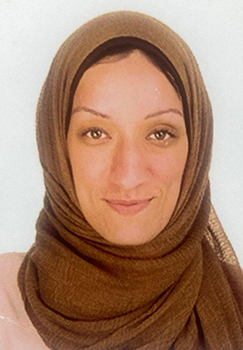
I want to express my gratitude for the 2024 BSH ASM Travel Scholarship. It was my first time attending the BSH Annual Scientific Meeting, and I found it tremendously educational and practical. I was surprised by the warm welcome.
I presented an ePoster How does chemotherapy affect elderly AML patients? It was a pleasure to see this displayed at the poster walk.
I particularly enjoyed the session What is new in anticoagulants? Professor Nicola Mutch spoke about the new era of anticoagulants and their use for prophylactic purposes.
I liked the talk on Autoimmune haematology by Dr. Quentin Hill,[1] particularly Cold agglutinin disease and how I diagnose and treat, as this topic has been an interest of mine.
I also liked the guidelines by Professors Mike Laffan and Keith Gomez, who presented interesting data on haemostasis and thrombosis. This was all new to me and I will be guided by BSH guidelines in future.
The event provided me with an incredible opportunity to connect with others in my field and I thoroughly enjoyed the engaging discussions. I would like to express my sincere appreciation to the BSH for this wonderful experience.
Reference
1. Jäger, U., Barcellini, W., Broome, C. M., Gertz, M. A., Hill, Q. A., Jilma, B., Kuter, D. J., Michel, M., Montillo, M., Röth, A., Zeerleder, S. S., Berentsen, S. Diagnosis and treatment of autoimmune hemolytic anemia in adults, Recommendations from the First International Consensus Meeting. Blood Rev. 2020 May:41:100648
Manish Raturi, Associate Professor, Swami Rama Himalayan University, India

I am incredibly grateful for the BSH-ASM Travel Scholarship, which enabled me to attend their 64th Annual Scientific Meeting in Liverpool, UK.
It was my first time attending the conference, which, as a researcher and academic, I found exciting and engaging from a scientific perspective.
I was amazed by the vastness of clinical haematology, as a subject, covering both benign and malignant conditions, and influencing the care of millions of patients worldwide.
My research interests lie in transfusion medicine and haemovigilance. I was excited by the updates from Laboratory Haematology - stepping into the future, mainly the talk by Mr Vikram Lyall When the Lab leaves the Lab. He spoke about point-of-care testing. This was followed by sessions on adverse transfusion reactions and recent updates in the field, respectively.
I presented an e-poster at the conference entitled Insights on erythrocyte alloimmunization and auto-immunization in children from North India. It was a great opportunity to share my work with others. It initiated some fascinating discussions as well.
It was wonderful to be surrounded by professionals from diverse disciplines including clinicians, nurses, allied health professionals and biomedical scientists, all with a shared passion for haematology.
I found talking to clinical trainees who shared their experiences applying for and undertaking haematology training in the United Kingdom particularly useful.
Attending BSH-ASM was a deeply satisfying professional experience for my young and budding research life in transfusion medicine and benign haematology. I very much look forward to attending the ASM in the future.
Maymoona Suhail, Haematology Registrar, Armed Forces Institute of Pathology, Rawalpindi, Pakistan

I extend my sincere gratitude to the British Society for Haematology for the invaluable support of an ASM travel scholarship. This grant facilitated my participation in, and presentation at, the esteemed 64th BSH Annual Scientific Meeting.
I had the privilege of presenting two posters that showcased research conducted at my institute in Rawalpindi, Pakistan. Presenting my work was undoubtedly the highlight of my participation.
The posters were a visual narrative of my research journey, encapsulating months of rigorous experimentation, analysis, and interpretation.
The first poster presented the results of a retrospective study on the Characterization of acute promyelocytic leukaemia in morphology, immunophenotyping, molecular analysis and cytogenetics.
The second poster focused on Deciphering the puzzle of acute leukaemias of ambiguous lineage.
The conference proved to be a transformative experience, both academically and personally. It served as a melting pot for diverse ideas, perspectives, and groundbreaking research in haematology.
Engaging with eminent scholars and researchers from around the globe broadened my intellectual horizons and provided invaluable insights and feedback on my research endeavours. I attended several sessions and talks.
I enjoyed the Morphology cases session. All nine cases were very well prepared. I particularly liked the case presented by Dr Anita Sarma from Leeds Teaching Hospital NHS Trust, on Intravascular large B-cell lymphoma with haemophagocytic lymphohistiocytosis. This was diagnosed in a sixty-seven year-old male presenting with pancytopenia, pyrexia of unknown origin, refractory hypotension, lactic acidosis and unexplained CNS symptoms.
Beyond the academic realm, the conference provided ample opportunities for networking and cultural immersion. Engaging in informal discussions over coffee breaks, attending social events, and exploring the vibrant cityscape allowed me to forge meaningful connections and friendships with peers and mentors from diverse backgrounds.
These interactions transcended geographical boundaries and fostered a sense of camaraderie and solidarity among like-minded individuals passionate about advancing knowledge and effecting positive change.
Reflecting on my journey, I am profoundly grateful to the BSH for their support. The travel grant not only enabled me to showcase my research on a global platform but also gave me a sense of confidence and purpose as a young researcher committed to making a meaningful contribution to society.
Opadeyi Oluseyi Michael, Trainee Specialist in Haematology, Lagos University, Nigeria

I first heard about the ASM from a colleague who is also a trainee specialist haematologist in Nigeria who attended the previous year. I also saw fliers and posters on social media and the BSH website.
My overall experience at this year's ASM was excellent. The registration process was seamless. The environment was lovely and serene, and the venue was close to my accommodation. A cloakroom was provided on arrival to store our luggage safely and the WI-FI was reliable. The catering and customer service were very good.
I enjoyed the welcome and the opportunity to network, the conference dinner, the poster walk, and the scientific programme. The posters on display were easy to understand with an appealing layout and a clear and concise message.
The three-day programme was structured into different sessions, which were up-to-date, engaging and resourceful. Recent research and breakthrough discoveries were shared across haemato-oncology, sickle cell disease and thrombosis.
The ASM content greatly improved my knowledge and professional development. I particularly enjoyed the Sickle cell disease – a global health issue session, the simplicity of the presentation and the summary of the pathobiology of vasocclusive and haemolytic crisis in sickle cell was excellent.
On Sunday, Professor Raza Alikhan's session on Anticoagulation strategies in cancer was interesting and educative.
I was privileged to attend How is the management Paradigm Evolving for Patients with B-cell ALL in 2024? sessions led by Dr Clare Rowntree. I also attended Fetal and neonatal alloimmune thrombocytopenia (FNAIT) by Dr Michael Desborough, Clinical cases of PE in pregnancy and MATRON by Dr Giulia Simini, the Morphology Cases chaired by Dr Alesia Khan, and Management of cytopaenic myelofibrosis by Dr Donal McLornan.
On the third and last day of the conference, I attended the Multiple myeloma breakfast session with Prof Guy Pratt and the Myelodysplastic syndrome session with Dominic Culligan. I went to talks on Optimizing chemotherapy options in fit adults with AML by Prof Steve Knapper and Expanding treatment options in unfit adults with AML by Mike Dennis at the Acute myeloid leukaemia (AML) session led by Prof Charlie Craddock.
These were all informative with great simplicity in the presentation.
The quality of the programme and technology were very good with adequate coverage of general haematology, haemostasis and thrombosis, and laboratory haematology. Haemato-oncology appeared to have more speakers and coverage at this year's meeting. I would have liked more on transfusion and paediatric haematology.
Overall it was an impactful, very informative meeting for me. I look forward to 2025 in Glasgow and will also recommend to my colleagues and share most of the information acquired during the conference. Kudos to BSH and the organizers of the 2024 BSH-ASM meeting in Liverpool.
H Shafeeq Ahmed, Medical Student, Bangalore Medical College and Research Institute, India
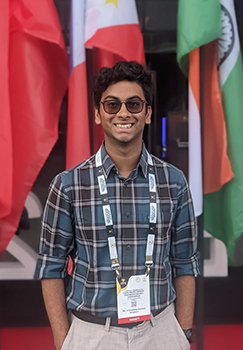
I am sincerely grateful to the BSH for their support through the Annual Scientific Meeting (ASM) Travel Scholarship.
This grant enabled me, as a medical student from India, to participate in an international conference, providing me with invaluable exposure to the latest trends and research in global haematology.
Attending such a prestigious international conference, where healthcare professionals with decades of experience gathered, was an enriching experience.
One session that particularly resonated with me was The evolving landscape of haematology training: from undergraduate to specialist. This session broadened my understanding of the scope of haematology training and shed light on the current challenges faced by trainees and prospective trainees. It provided insights into the perspectives of students and consultants regarding the best approaches to address these challenges and the foresight required to overcome them.
The wealth of knowledge gained from the paper presentations and posters was remarkable. The detailed methodologies presented were inspiring, and upon returning to my home institution, they have continuously assisted me in re-evaluating my understanding of research designs, audits, and quality improvement projects.
This experience has influenced my approach to future research endeavours. Overall, I was inspired by the diverse array of perspectives on research presented at the conference, and I aspire to incorporate these techniques into my work in the future.
Sylvia Obu, Biomedical Scientist, Federal Medical Centre Asaba, Nigeria
 I am delighted to tender my report on the 64th Annual Scientific Meeting of the British Society for Haematology.
I am delighted to tender my report on the 64th Annual Scientific Meeting of the British Society for Haematology.
This great support allowed me to participate, learn, interact and network with highly esteemed professionals at one of the largest international gatherings of haematologists. I listened to intriguing and well-articulated lectures in different areas of haematology and transfusion science by erudite scholars.
I also presented the findings of my research work on Evaluation of some haemostatic parameters in the management of HBV infection treatment outcomes in Asaba, Nigeria during the poster walk.
The package of oral and scientific lectures, the Crucible Prize, top abstract presentations and poster walk was informative and outstanding. The topics in the parallel sessions were all interesting and it was difficult to choose which ones to miss.
I particularly benefitted from the Pitfalls in transfusion genomics workshop by Dr Nick Gleadall and Pitfalls in genomics for myeloid malignancies by Dr Thomas Coats.
What is the greatest threat to the future of haematology? by Dr Manjula Sinnakirouchenan, Dr Funminiyi Obilanade, Ms Chinenye Okenwa, Dr Euan Haynes and Dr Lisa Jeffers identified artificial intelligence and workforce as the major threats to haematology.
The lectures on Morphology cases were very educative. The Top abstracts with expert perspective: throbosis and haemostasis, and the plenary session Predication and anti-coagulation in cancer-associated thrombosis by Dr Ingrid Pabinger-Fasching were extremely engaging.
As a biomedical scientist and researcher in haematology and blood transfusion from a developing country, attending the ASM has been invaluable. The knowledge gained at this and last year's ASM will continue to improve my output and that of my team.
I appreciate the opportunity afforded me by the BSH to attend the 2024 conference.
Eman Hassan, Haematology Speciality Registrar in the West Midlands, University Hospitals Birmingham

I was so grateful to be awarded the scholarship grant to present my oral abstract The diagnostic utility of the R90 bleeding and platelet disorder panel: the West Midlands experience.
The BSH Annual Scientific Meeting is my favourite event. I have been keen to attend since I started training in haematology because the scientific material is invaluable.
My favourite sub-speciality is haemostasis and thrombosis and the meeting this year was full of fantastic sessions in these areas. The session about the impact of anticoagulation on menstrual bleeding was particularly innovative[1]. It highlighted the poor quality of life in this group of patients and their unmet needs, which open the field for further research.
I also found the session about pitfalls in managing haemostasis cases very interesting and practical.
Thank you to the BSH for giving me the opportunity to attend and present my work.
Reference
1. Jignesh P. Patel, Ovianuju Nzelu, Lara N. Roberts, Jemma Johns, Jackie Ross How do anticoagulants impact menstrual bleeding and quality of life? - The PERIOD study. Res Pract Thromb Haemost. 2023 Feb 4;7(2):100072.
Henry Wood, Specialty Registrar, King's College Hospital
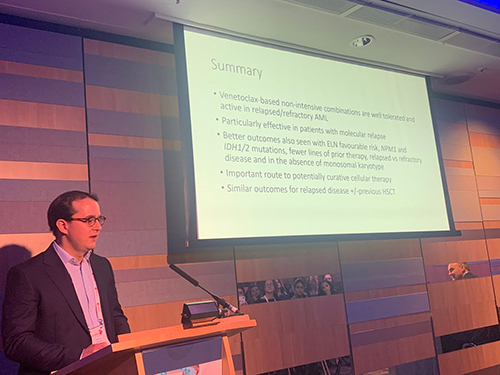
I would like to thank the BSH for this grant, which supported my attendance at the Annual Scientific Meeting in Birmingham.
I was very pleased to present an oral abstract, Venetoclax-based non-intensive combinations for relapsed/refractory acute myeloid leukaemia – real-world data from a UK-wide programme. This work was the result of a collaborative effort under the aegis of the National Cancer Research Institute Acute Myeloid Lymphoma (NCRI AML) relapse subgroup, coordinated by Dr Pramila Krishnamurthy.
I also co-chaired the education session at the meeting, which focused on improving the training experience and planning for the future workforce.
The BSH and American Society of Hematology (ASH) session on Machine learning in hematology and the BSH and European Hematology Association (EHA) session on Diversity in haematology both provided a great deal of food for thought.
Professor Claire Harrison’s BSH Medal Lecture on the changing face of the myeloproliferative neoplasm treatment landscape was excellent.
I was very interested to hear about Dr Robert Weinkove’s work developing TLR2-costimulated third-generation anti-CD19 CAR T-cells for relapsed/refractory B non-Hodgkin lymphomas. The low toxicity rates in the phase 1 trial were notable, and it was great to see the use of this innovation to develop a CAR T-cell programme for New Zealand.
The annual Pitfalls Day remains a fantastic learning opportunity with a host of brilliant speakers. This year the focus was on diagnostics across the spectrum of haematology and included a very valuable session from Surabhi Chaturvedi and Elli Wellving on communicating diagnoses with patients.
In addition to the high-quality content within the sessions, the chance to meet colleagues from across the UK haematology community and beyond is a huge advantage of the ASM.
I would strongly urge all trainees to try to attend the ASM and benefit from the excellent educational and networking opportunities, as well as to develop presentation skills through oral and poster abstracts.
Maryam Owais Subhan, Haematology Registrar (ST6), University College London Hospitals NHS Foundation Trust
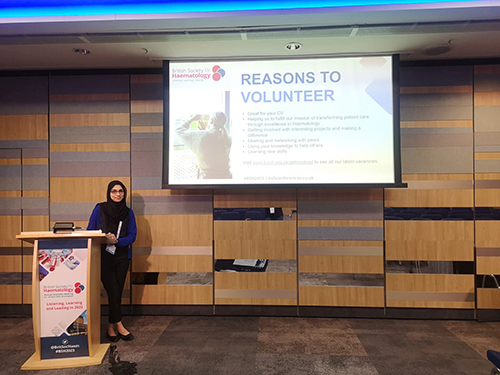
I am grateful to the BSH committee for awarding me a scholarship for my oral abstract, Comparison of ADAMTS13 activity testing platforms for diagnosis and monitoring of thrombotic thrombocytopenic purpura. The grant supported my attendance at the Annual Scientific Meeting in Birmingham by covering my travel and accommodation costs.
During the conference, I particularly enjoyed the session on autoimmune haematology. Professor Siobhan Burns’ talk on primary immunodeficiency causing autoimmune haematological disease was enlightening and made me consider some cases I have managed in a different light. I aim to incorporate her guidance into my approach towards autoimmune cases in the future.
Secondly, Professor Matthieu Mahevas’ talk, How immune modulation is changing in autoimmune haematological diseases - can we direct treatment?, was also very interesting, as it highlighted anti-BAFF-directed therapy in rituximab-resistant immune thrombocytopenia (ITP), an option I had not been aware of. His research into antigen-specific B-cells in ITP was useful knowledge I could relay to interested colleagues in our research lab.
In addition to all the excellent talks, attending the meeting was a great opportunity to engage and interact with other trainees and clinicians with similar subspecialty interests.
I came away inspired by what we can achieve by collaborating and eager to play my part in it.
Sherif Badawy, Haematology Specialist, Lurie Children's Hospital of Chicago
 I am very grateful to the BSH for supporting me with the 2023 Annual Scientific Meeting (ASM) Abstract Scholarship.
I am very grateful to the BSH for supporting me with the 2023 Annual Scientific Meeting (ASM) Abstract Scholarship.
This grant allowed me to attend the conference and actively participate in different sessions by covering my travel and accommodation costs. It also allowed me the opportunity to network with many practising haematologists and oncologists in the UK and Europe.
This experience gave me a chance to reflect on differences and similarities related to how we practise medicine, and haematology, in the United States. Networking and being at the ASM opened doors for several potential collaborations for clinical research projects and clinical management or guidelines development informed by evidence.
One session worth mentioning, which gave me a lot to think about, focused on teenagers and young adults (TYA), which we call adolescents and young adults in the United States (AYA).
I was impressed with the transformation created by the establishment of a dedicated TYA cancer unit in an adult hospital: not only improving clinical outcomes with better responses and lower risk of relapse but also the positive impact on TYA quality of life, including mental and psychosocial wellbeing.
That made me go back to my home institution and re-evaluate what we currently do for our TYA or AYA. And ask if (or should) we do better by learning from the UK model or experience in that context.
I wouldn’t have started this inquiry if it wasn’t for the BSH and the travel award I received to attend the ASM in Birmingham, UK. Thank you again to the BSH. Their help is much appreciated!
Gemma Whitehead, Haematology Clinical Nurse Specialist, Chesterfield Royal Hospital.
 The BSH Annual Scientific Meeting Travel Scholarship allowed me and my clinical nurse specialist (CNS) colleagues to attend the ASM in Birmingham.
The BSH Annual Scientific Meeting Travel Scholarship allowed me and my clinical nurse specialist (CNS) colleagues to attend the ASM in Birmingham.
In 2022, I was invited to talk at the Early Careers Forum, where I presented my career in haematology nursing to date, my ambitions to stoke haematology interest in ward nursing staff and improve training and, therefore, retention in the speciality.
I was very interested to see what is happening nationally in supporting the careers of haemato-oncology nurses. I found the session on developing nurses, particularly the Aspirant Cancer Career and Education Development (ACCEND) programme, very helpful.
I plan to use this knowledge to work with the ward educator to assess the current training provided to newly qualified staff and see where this fits onto the ACCEND pathway. I feel that if we can formalise the training pathway for nursing staff, we will help nurture their interest and give them a feeling of organised development for specialisation within their careers.
It is often easy as a nurse to feel that you don’t necessarily belong in the world of research and conferences. The BSH really supports the aspiration of nurses to learn and progress within the speciality, and I want to pay that support forward to the future nursing workforce.
Tracey Small, Haematology Clinical Nurse Specialist, Chesterfield Royal Hospital
 It was my first time attending the BSH Annual Scientific Meeting, and I found it incredibly informative and educational.
It was my first time attending the BSH Annual Scientific Meeting, and I found it incredibly informative and educational.
The sessions I found most beneficial were the myeloproliferative neoplasm (MPN) and the myeloma ones.
The MPN in relation to myelofibrosis was of particular interest. My knowledge increased in the management of patients on ruxolitinib, and it was very good to hear about further treatments for this group of patients.
The session on myeloma was very informative and was particularly interesting in regard to the MYpos score. This led me to look into other palliative scores that can be implemented when caring for all of our patients on supportive care.
All in all, it was a very positive experience and will benefit my nursing practice.
Aimee Armstrong, Biomedical Scientist – Haematology and Blood Transfusion, NHS Greater Glasgow and Clyde

I would like to thank the BSH for awarding me a travel grant to attend their Annual Scientific Meeting in Birmingham in 2023.
As a biomedical scientist who has recently begun specialisation within the haematology field, I found the event incredibly insightful and educational. It was great to listen to and understand how nurses, doctors, physician associates and scientists interact to manage and advance patient care – we all have the same end goal of providing the best standard of care for patients.
I attended the Haematology Essentials day, which preceded the BSH conference on the Saturday. As a new professional in the field, I found this day incredibly beneficial to the development of my career.
It was great to hear from experienced medical staff on the interpretation and principles of the basic haematology tests – full blood count, C/S, myeloma screening/staging - and also the main differences between different types of leukaemia.
I thoroughly enjoyed hearing about the research and development of the Haem-Match programme, which has started trialling in England, though not yet in Scotland. I had not previously come across the concept. It was fascinating to hear about the principles and thought processes, how it will work and the end goal from the people at the heart of designing and implementing it.
I would love to see the programme developed across the UK, as it will be massively beneficial to patients who are regularly transfused. It would also help laboratory staff responsible for typing and cross-matching blood components.
I massively enjoyed the Blood Stories lecture, presented directly by patients with sickle cell disease, type 3 Von Willebrand Disease and amyloidosis. As a biomedical scientist, I have very little direct interaction with patients. I found it invaluable to listen to their stories, understand how these haematological conditions affect them, and how they have found the process of interacting with all healthcare professionals in their journey. It really emphasised the principle of understanding the whole story when dealing with patient samples in the laboratory.
It was also great to hear speakers, particularly BSH chairman Josh Wright, speak about the difficulties the NHS workforce is facing. The reality of the current condition of the NHS was not missed, and I find that incredibly important and applaud the BSH for including it; it is something that every healthcare professional is dealing with on a daily basis.
Finally, the performance from B Positive Choir before the presidential lecture was fantastic. A thoroughly enjoyable to lift the spirits of all attending and to break up the day.
Joshua Bray, Intercalated PhD Student, University of Leicester

I am incredibly grateful for the BSH Travel Scholarship, which enabled me to attend their Annual Scientific Meeting (ASM) this year in Birmingham.
It was my first time attending the conference, which, as a medical student and PhD student, I found really engaging from both clinical and scientific perspectives. I was amazed by the huge breadth of clinical haematology, covering malignant and non-malignant conditions.
I have developed a strong appreciation of the constantly evolving clinical landscape of haematology and how the latest research shapes the care and treatments our patients receive.
My particular research interests lie in lymphoma and immunotherapy. I was excited by the updates from the TRANSFORM and EPCORE NHL-1 trials, which shared very encouraging clinical data for Liso-cel (a CD19 CAR-T) and Epcoritamab (a CD3xCD20 bispecific antibody), respectively.
It was also fascinating to hear from Dr Maria Themeli about allogeneic sources of CAR-T cells, in particular her work in developing CAR-T products from induced pluripotent stem cells.
I presented a poster at the conference entitled Development of a functional assay to assess activation and proliferation in peripheral blood T Cells. It was a great opportunity to share my work with others. It initiated some very interesting discussions.
It was wonderful to be surrounded by professionals from a variety of disciplines (clinicians, nurses, allied health professionals and scientists), all with a shared passion for haematology.
I found it particularly useful talking to clinical trainees who shared their experiences of applying for and undertaking haematology training. They gave some really useful tips for building a strong haematology portfolio which I will take on board for the future.
Overall, I had an excellent time at the BSH ASM 2023. I very much look forward to attending in future years.
Dr Saidu Yusuf Yakubu, PhD Student of Clinical Haematology and Blood Transfusion/Consultant Anaesthetist, Ahmadu Bello University Teaching Hospital, Nigeria

Please, permit me to start by thanking the British Society for Haematology for giving me the great opportunity to attend the 2023 Annual Scientific Meeting in Birmingham.
Attendance at the meeting has allowed me to make friends, share ideas with colleagues, listen to top-notch presentations and lectures and acquire research ideas. As an anaesthetist with an interest in haematology and blood transfusion, I really felt at home, and my expectations were met through sessions relevant to my practice.
I was able to stroll in London and Birmingham, where I had a taste of the great food the two cities offer.
I arrived in Birmingham on Saturday, 22 April and registered for the conference. That evening, I was privileged to attend the welcome and network reception, where I met Lee from Malaysia and Lydia from the UK. Both were medical officers interested in specialising in haematology. I was so impressed with their passion and enthusiasm towards the speciality. It was great sharing ideas with them while having drinks and snacks.
Sunday was a busy day for me, with so much networking at the exhibition stands during breaks. The various companies exhibiting were awesome, with products ranging from drugs, equipment, education and gifts/souvenirs for participants.
I visited the BSH stand, where I was given an international delegate pin. I also visited the Sickle Cell Society stand and learnt about their various activities. My country, Nigeria, has a large number of sickle cell anaemia patients.
The coffee/cappuccino, food and drinks served during the entire conference were very good.
The welcome, and MacFarlane-Biggs plenary lecture, were excellent. I learnt a lot during the sessions on anticoagulation and thrombosis and the use of technology to improve health care (machine learning in haematology).
In addition, I attended the lunch with experts on paediatric sickle cell disease (SCD) and the industry session on the unmet need and multiple burdens of SCD. I also joined the Blood Cancer UK workshop on teenage and young adults.
Highlights of the Monday for me were sessions on new initiatives in transfusion research, obstetrics haematology (iron deficiency anaemia, and coagulopathy following postpartum haemorrhage) and the BSH medal and presidential session.
I was very impressed with the Crucible Prize session on What haematology can learn from history, where young haematologists presented on things that have happened, or are happening, in the Society and related to the practice of haematology.
The poster walk in the evening was educative. I learnt what others are doing from different parts of the world and made friends.
On the last day of the conference, I enjoyed top abstracts on laboratory haematology and transfusion.
Emily McMullen, Foundation Year 1 Doctor, Kingston Hospital
I would like to say a huge thank you for awarding me the abstract scholarship, as this allowed me to attend the ASM and present my audit. It will most certainly be one of the more impressive additions to my CV and portfolio. I am extremely grateful for the opportunity to present. If not for the abstract scholarship, I would not have been able to afford to attend the event.
I have been considering a career in haematology since finding it especially interesting in my undergraduate biomedical science degree, and it has continued throughout my medical training and clinical practice.
I appreciate that having presented at the ASM will no doubt put me in good stead if I do indeed decide to embark on a career in haematology.
I am also grateful for the experience of presenting an oral presentation. I found I rather enjoyed it, and it has built my confidence in public speaking.
I found the presentations I listened to very interesting and enjoyed the variety.
I learnt of rare disorders I had never heard of before, for example, Kabuki syndrome, and now appreciate how difficult it can be to research these conditions. There was very limited UK data on this syndrome, and data had to be extrapolated from elsewhere.
There was also the added problem that, often, Kabuki syndrome is not regarded as a separate entity from immune thrombocytopaenia generally. That must present a significant barrier to understanding Kabuki syndrome and, therefore, the information we, as clinicians, can provide to these patients and their families. I can only imagine how worrying it must be to be a parent to a child with a rare haematological disorder.
I also learnt how convoluted the clinical trials system can be in haematology, with exclusion criteria for studies often not published and a lack of continuity between researchers/government trials and the haematology trials body. I developed a new admiration for this body, as they direct patients towards clinical trials that could be appropriate, and this is something I cannot envisage ever having the time to stay up to date with whilst working as a doctor in the NHS.
Aside from this, I enjoyed reading the scientific posters on multiple myeloma. We often screen for this in some of our hospital inpatients as part of a routine workup for certain presentations/symptoms, but I rarely have time to appreciate the academic side of it.
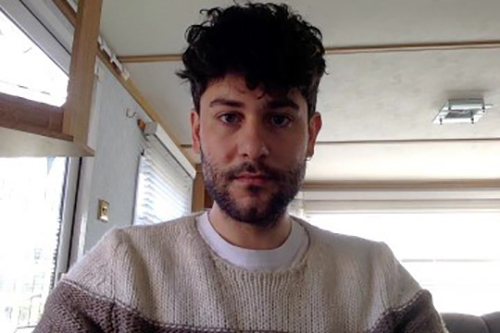
Nicola Cecchi, Fondazione IRCCS Ca' Granda Ospedale Maggiore Policlinico, University of Milan
The BSH abstract scholarship allowed me to get closer to the British medical reality. Different countries can have different views about managing patients.
This scholarship took me into a stimulating environment where I could show my work and how my team and I take care of the patients and, at the same time, compare our results with someone else's results.
Wei Yee Chan, Haematology Registrar (ST6), University College London Hospitals NHS Foundation Trust
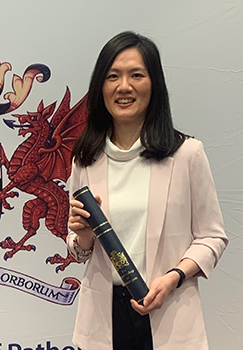
I am thankful and honoured by the BSH's decision to award me an ASM abstract scholarship for my oral abstract on Antibody responses to SARS-CoV-2 vaccination in patients with acute leukaemia and high-risk MDS on active anti-cancer therapies, which I presented at the Top AML abstracts session on 4 April 2022.
The travel bursary covered my cost for attendance and travel to Manchester, and I had the opportunity to attend the ASM in person after two years of virtual conferences, an unfortunate result of the SARS-CoV-2 pandemic.
The merits of virtual conferences have been thoroughly explored during the pandemic. However, the benefits of ASM attendance in person really came to light this year. The engagement and social interactions (missed in virtual conference attendance) were far more exciting for me as a trainee. The ability to learn and listen to live speakers really brought innovation and practice recommendations to life with improved interaction from a live audience.
After taking an interest in antibody responses to SARS-CoV-2 vaccination in haematological malignancies, I was thrilled to hear Dr Sean Lim's presidential lecture talk discussing her findings from leading the UK PROSECO study on the immune responses to two and three SARS-CoV-2 vaccine doses[1] in a large cohort of lymphoma patients.
She highlighted the poor responses generally in a cohort of lymphoma patients. She also highlighted the effects of systemic anti-cancer therapy and dysfunction in T-cell and humoral responses in these patients.
It is exciting to see such a large clinical study, with such important data to guide our practice moving forward in the pandemic, come to fruition in such a short period. I applaud and am in awe of what has been achieved in the publication of these results.
I would like to thank the BSH again for recognising my work and for the opportunity to present it at the ASM. I thoroughly enjoyed the ASM this year and have been brought up to date over the four days of attendance in various aspects of haematology.
But most importantly, I've been inspired by the ongoing work to improve our ability to deliver care to haematology patients in the United Kingdom. It is especially fascinating how some of this work can also influence care delivered internationally.
The ASM highlighted the UK's strong ability to recruit to academic clinical trials and deliver meaningful results, which truly influence how we practice.
Reference
1. Lim, S. H., Stuart, B., Joseph-Pietras, D. et al. Immune responses against SARS-CoV-2 variants after two and three doses of vaccine in B-cell malignancies: UK PROSECO study. Nat Cancer (2022). https://doi.org/10.1038/s43018-022-00364-3
Louise Wallis, Haematology Specialist Nurse, Royal Bournemouth Hospital

Thank you for awarding me this scholarship and allowing me to attend the Annual Scientific Meeting to share my piece of work with the attendees as a speaker.
I found the meeting itself stimulating, and I felt it was important to attend in person, following the isolation of the Covid-19 pandemic.
Highlights for me fell into three categories.
Updates in MPNs and CML
I gained insight into the specifics of young myeloproliferative neoplasms (MPN) patients and difficult scenarios in MPNs from lectures. The posters enabled me to easily see a large quantity of information in a relaxed environment. Relevant to my practice were posters about pegylated interferon (UCL) and nurse-led telephone clinics (Manchester).
Interesting and thought-provoking lectures
A highlight of the entire meeting was listening to the entries for the Crucible prize. These were all interesting, were presented enthusiastically by the authors, and engaged the audience. The subjects were ones I had not previously really thought about and made me think more deeply about the future of haematology. Attending this type of session broadened my view of issues in haematology, which can be narrowed to my local area.
Resources for my patients
I will return to my workplace with an armoury of resources to directly benefit patients. These include different ways of recording quality of life to ensure this information is used in shared decision-making. I was made aware of two support programmes available to patients via apps and an advice line offered by Blood Cancer UK, specifically relating to clinical trials.
Attending the conference enabled me to leave my normal place of work and participate in the high-quality, varied programme without everyday interruptions and distractions.
It was a great opportunity to learn about new evidence and different ways of building services as well as practical resources that can be signposted to patients and directly enhance their care.
Agnerys López Sacerio, Haematologist, Arnaldo Milián University Hospital, Santa Clara, Cuba

This travel scholarship was a great opportunity to participate in the BSH Annual Scientific Meeting 2022.
This important meeting was a valuable experience to improve and update my knowledge as a haematologist and clinical researcher, especially in haematological malignancies and cancer-associated thrombosis.
It also allowed me to establish a scientific and academic exchange with colleagues from the UK and other parts of the world and present the results of our research.
All the above will allow us to improve the care of patients with haematological diseases we treat.
I am currently working on my PhD in venous thromboembolism (VTE) in haematological malignancies. This event helped me to learn about other research in this area. Because of my teaching role, my update will enhance the preparation of our hospital's residents-in-training.
Claudette Hewitt, SHO Doctor, Ealing Hospital, London North West Thames Healthcare Trust

The scholarship I received from the BSH enabled me to attend their Annual Scientific Meeting (ASM) in Manchester from 3-5 April 2022.
I am a junior doctor about to start internal medicine training (IMT) and am interested in a career in haematology. Attending the ASM provided the opportunity to get an insight into the world of haematology.
What struck me most is how new research and clinical trials constantly inform clinical practice. The conference made me appreciate how dynamic haematology is as a speciality, with many opportunities to expand our knowledge and refine our treatment options.
I particularly enjoyed the lectures on chimeric antigen receptor (CAR) T-cell therapy in lymphoma. I have been interested in CAR T-cells since I wrote an essay about their potential future therapeutic uses while at university.
Now, the National Institute for Health and Care Excellence (NICE) has licensed CAR T-cells for acute lymphoblastic leukaemia (ALL), diffuse large B-cell lymphoma (DLBCL), and mantle cell lymphoma (MCL) under certain conditions. CAR T-cell centres are being set up across the country.[1][2][3]
However, the lectures demonstrated that even though we have progressed past clinical trials into clinical practice, our understanding of CAR T-cell therapy continues to be developed. The CAR T-cell centres have collected a wealth of data, which has been used to evolve the knowledge of the efficacy and toxicities of the therapy.
In particular, the risk of CAR T-cell toxicity can be estimated based on patient-specific factors such as their performance status, the lactate dehydrogenase (LDH) level on day 0 of infusion and whether their disease has progressed through bridging therapy[4]. Therefore, toxicity prevention and management can be individualised based on the specific risk factors of the patient at hand.
After two years of Zoom meetings, I really enjoyed attending the conference in person. One of the best parts was meeting haematology registrars and other IMT doctors who are in the process of applying to haematology training. Hearing about their experiences and getting their advice was very valuable.
I came away from the conference inspired and motivated to pursue my interest in haematology!
References
1. Tisagenlecleucel for treating relapsed or refractory B-cell acute lymphoblastic leukaemia in people aged up to 25 years.
2. Axicabtagene ciloleucel for treating diffuse large B-cell lymphoma and primary mediastinal large B-cell lymphoma after 2 or more systemic therapies.
3. Autologous anti-CD19-transduced CD3+ cells for treating relapsed or refractory mantle cell lymphoma.
4. Sanderson et al. ASH 2021 (abstract 531; oral)
Katarina Flatman, IMT2 ACF, University of Leicester/University Hospitals Leicester NHS Trust
The ASM travel scholarship allowed me to attend the meeting in person, which I was very excited about, given the lack of such opportunities during the pandemic.
Attending in person has given me educational and networking opportunities that would not have been so well provided by online attendance.
It has enabled me to meet other IMT doctors who are planning to specialise in haematology, and it has been exciting to discuss our plans and to think that we might be meeting at similar events in years to come!
I have also been able to meet with registrars and consultants from around the country and hear about their exciting careers and ongoing enthusiasm for their speciality.
It has helped me understand the breadth of haematology as a speciality. Particularly by attending sessions about non-malignant haematology, to which I have had less exposure.
In terms of the conference content, I was fascinated to hear about the work of haematologists in characterising vaccine-induced thrombosis and thrombocytopenia (VITT) in such a timely manner during the pandemic. It was amazing to think of how quickly the international community were aware of this new phenomenon and the rapidity of response. It is a reminder of the importance of communication between centres in identifying these rare cases and formulating a rapid response to such a potentially devastating condition.
As a junior doctor, I particularly enjoyed the patient stories session; it was a format I hadn't previously experienced at a conference. It was brilliant that individuals with such different experiences were willing to be open about their experiences as patients. It gave me an opportunity to think about the impact of living with not just haematological diagnoses but also other long-term conditions and how all of us can strive to provide the best possible patient-centred care.
I am grateful to the BSH for giving me the opportunity to attend this conference, and I feel it has been very helpful in my understanding of haematology as a career.
Lara Howells, ST4 Haematology Registrar, University College London Hospital NHS Foundation Trust

I would like to extend my thanks to the BSH committee for awarding me a scholarship to attend the Annual Scientific Meeting in Manchester from 3-5 April 2022.
As an ST4 haematology registrar, the conference – a hybrid event – provided the perfect opportunity to immerse myself in the world of haematology, meeting other trainees and colleagues from across the UK and abroad.
The conference kicked off in an unexpected but undoubtedly powerful way, with a stunning performance from grime artist A Star, who rapped about his first-hand experience of living with sickle cell disease. He spoke of how his challenges have spurred him to work with youth groups in East London, spreading education and awareness of sickle cell disease. I know that this is not the last we will see of A-star, as he continues to use his position of influence to drive change and ongoing engagement with both his local and the haematological community.
The popular BSH ’Pitfalls’ day preceded the conference on Saturday, 2 April. Here, we were delivered a schedule of quality lectures from experts across the UK.
Dr Joe Shariff delivered an engaging talk on lifelong care for patients with sickle cell disease, during which he illustrated a particularly gripping case presentation of protracted hyperhaemolysis. Another memorable session was delivered by Dr Cheryl Fitzgerald, highlighting the challenges in fertility preservation in young women with haematological disease.
Satisfyingly, I found that my newly ascertained knowledge from these sessions was translated directly back to the wards upon return to work when faced with similar complex cases.
A personal highlight was being provided with the opportunity to give an oral presentation on Covid-19 antibody responses in patients with myeloma who undergo autologous stem cell transplant, inviting questions from an engaged audience.
The topic of immune responses to Covid-19 vaccination in patients with haematological disease featured heavily throughout the ASM programme, highlighting our shared interest in doing all we can to mitigate our patients from Covid-19. Both in terms of the effects of the disease itself and the associated delays in treatment that occur as a result.
This was succeeded by a presentation from Dr Rakesh Popat, who summarised the results from two early phase trials in myeloma, resulting in a palpable level of anticipation and excitement amongst myeloma doctors in the room.
During the BSH Presidential Session and Medal Lecture, we were treated to a talk from Professor Marie Scully, MBE, on vaccine-induced thrombocytopenia and thrombosis (VITT). Here, the rapid identification of a new syndrome and formulation of a management strategy was particularly impressive and undoubtedly saved many lives.
In the face of such challenging and fast-paced circumstances, it was the level of collaboration between centres, sharing experience, knowledge and expertise around the UK and Europe, which I found to be enormously inspiring.[1][2]
Being awarded this scholarship allowed me to fully embrace the conference experience.
I would like to thank Professor Adele Fielding and the BSH committee for providing this invaluable opportunity to attend at an early stage of training. I look forward to seeing many familiar faces at conferences over the years to come.
Lastly, this brief highlight reel would be incomplete without marking my colleagues on the dancing skills exhibited in the Manchester Museum of Science and Industry in true Craig Revel Horwood style – 10/10.
References
1. Pavord S., Scully M., Hunt B.J. et al. Clinical features of vaccine-induced immune thrombocytopenia and thrombosis. N Engl J Med. 2021 Oct 28:385(18):1680-1689
2. Craven B., Lester W.A., Boyce S. et al. Natural history of PF4 antibodies in vaccine-induced immune thrombocytopenia and thrombosis. Blood. 2022 Mar 9: blood.2021014684.
Martin Gonzo, Biomedical Scientist and Senior Lecturer in Biomedical Science, University of Greenwich

I am very grateful to the British Society for Haematology for supporting me with a travel scholarship to attend their Annual Scientific Meeting in Manchester, UK, this year.
The 62nd ASM was my first time attending a BSH-organised event, and I must say, it will be one of many.
The ASM was a three-day meeting which was well organised and packed with opportunities to learn, network, and share professional practices in haematology.
The programme afforded me the opportunity to listen to experts in haematology.
The session on Developing the professional role of haematology nursing was very useful for me. This session took place on the 3rd of April and allowed me to appreciate the value of well-informed career guidance. It is an important aspect of my job as an academic and a personal tutor to undergraduate students.
Together with the early career forum on the 4th of April, they were important sessions that will impact how I support my tutees in decision-making beyond graduation.
Biomedical science graduates often wonder what else they can do with their first degree. The presentation by a clinical scientist and a haematology nurse gave me ideas on other career options to suggest for my students.
Another session I particularly enjoyed was the sponsored symposium titled Sickle cell disease: Shifting to a long-term view on patient care. This session, together with others on erythrocyte disorders, has improved and updated my knowledge of disease management from the patient's perspective.
Patients with sickle cell disease (SCD) are usually transfusion-dependent. As such, transfusion practices directly affect this patient group. A poster on Home transfusions: Balancing safety with individualised care[1] was also a befitting presentation as it presented findings from 20 cases of home transfusions.
I had the opportunity to go through the posters displayed during the three days I was at the conference. Having spent several years studying for a Doctor of Health and researching in the area of erythrocyte disorders, it was refreshing to be reminded of the many advances still taking place in this and other areas of haematology.
The poster by Narayan et al. on Under or delayed transfusion: Risk factors leading to patient deaths certainly helped me to come up with a concept paper on transfusion practice in under-resourced settings. It has given me new ideas to research in blood transfusion practice in general.
Finally, this event could not have been a success without the networking events that punctuated the conference. The annual meeting has given me the opportunity to meet with experts in different fields of haematology.
The discussions will certainly inform my teaching, and I will be incorporating some of the case studies into my learning material. It helps me maintain currency as I teach and facilitate the learning of undergraduate biomedical science students.
Reference
1. Jennifer Davies. Home transfusions: Balancing safety with individualised care. Poster presented at the British Society for Haematology 62nd ASM; 03-05 April 2022; Manchester.
Dr Michael Norton, Senior Lecturer, University of Buckingham

This was my first BSH Annual Scientific Meeting (ASM) and my first medical conference as a doctor. Currently, I am teaching haematology, and I had hoped that attending this event would add to my knowledge and increase my confidence as a lecturer.
The ASM was well-organised.
The venue was appropriate and located in a fascinating city. The convention centre was clean, well-staffed, and with good facilities and signage. The IT seemed to go perfectly in all the sessions I attended.
My current post meant I needed to listen to presentations on educational and employment matters. There were no surprises in the information given in the session on Developing the professional role of haematology nursing. But the speakers and those who asked questions spoke with passion, and everything was very understandable.
More significant were the speakers in the Early Career Forum who explained the work of a PA and nurse specialist. I think those who attended this were enlightened. One speaker was absent.
It was good to meet a few of the key people in haematology.
Despite being upset that I could not tour the whole museum, I was able to speak with a few important members at the dinner and was given details of someone near me who may be able to help with my need for resources.
Ruth Evans was great, and Fiona Miall shared that her students were having similar problems to mine due to lockdown and online teaching.
In terms of science updates, for me, the most useful was the session on haemoglobinopathies.
Dr Potter was impressive with some interesting transplant news, and John James was someone I would like to meet again. I will elevate the status of sickle cell in my course curriculum.
I am very grateful that I received this funding, for it allowed me to attend this worthwhile event.
I got the most out of the resources I picked up at the small charity booths.
The photo shows me receiving a surprise prize at the Leukaemia Care stand.
I intend to attend the next event in Birmingham, and I am seriously considering working in haematology when I return to clinical practice.
Thank you to the BSH.
Omolade Dada, Medical student, University of Nottingham
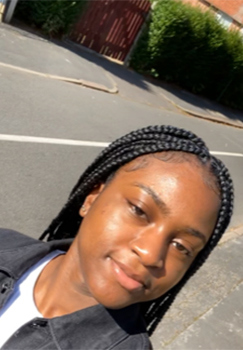
Attending the BSH Annual Scientific Meeting 2022 was a great pleasure!
The scholarship I received funded my travel, accommodation, food and general expenses for the three days.
I was inspired to see so many healthcare professionals sharing knowledge on their research with the primary aim of improving healthcare.
It was also fascinating to see the innovative products companies had created to improve the delivery of care. I was particularly interested in the biopharmaceutical company Global Blood Therapeutics, which raised awareness of sickle cell disease and their newly introduced drug that targets one of the primary causes of red blood cell sickling.
I also attended a scientific talk by Dr Carolyn Millar, Update on diagnosis and management of von Willebrand Disease: what are the current controversies?
I was encouraged by the fact that management strategies are constantly being revised as the body of knowledge within the scientific community improves.
It was also interesting to consider the impact of a diagnosis on the patient, such as the impact on their medical insurance, which Dr Millar briefly touched on.
Regarding my poster presentation, it was a huge encouragement to me to discuss my findings with those senior to me and answer their questions whilst discussing potential future research. One of my highlights was discussing my research with the members of Haemochromatosis UK.
Considering that my research was focused on this iron overload disease, meeting people diagnosed with haemochromatosis who also participate in research and work closely with those whose treatment was affected by Covid-19 really put my research into perspective and added great value. I perceived the potential impact of my research findings from this encounter.
The conference was a great opportunity to network. I made new friends and found potential partners to collaborate with on future research, and the ASM scholarship made it possible for me to attend. Thank you to the BSH!
Paul McLaughlin, Clinical Specialist Physiotherapist in Haemophilia and NIHR/HEE Clinical Doctoral Research Fellow, Royal Free London NHS Foundation Trust
I would like to express my thanks to the BSH for awarding me a travel scholarship to attend the 2022 Annual Scientific Meeting in Manchester.
I applied and received this scholarship as I was privileged to have been an awardee for the BSH/NIHR AHP Researcher of the Year. It gave me the opportunity to travel to Manchester for the Presidential session on Sunday, 3 April, to receive my award.
I wanted to attend in person as I felt it was a great platform and chance to make the role of allied health professionals in haematology more visible. I hope that doing so will encourage others to be more confident in sharing their research activities.
Sion Williams, ST6 in infectious diseases and GIM, University Hospitals Birmingham
Thank you so much to the British Society for Haematology for awarding me this travel scholarship to attend the ASM.
I am a trainee in infectious diseases. My reason for attending the conference was mainly to make links with my colleagues in haematology and to see how we might strengthen our working relationship looking after haematology patients with infection.
As a trainee in infectious diseases, I have found delegates from the field of haematology to be incredibly welcoming and receptive.
I am presenting a poster on the use of AmBisome prophylaxis in high risk haematology patients. During the poster walk, I had numerous interesting and fruitful discussions with other delegates about the real challenges of keeping these vulnerable patients safe, whilst at the same time acting judiciously with our use of anti-microbials. I feel we bridged important ground between the aim of reducing the development of drug resistance, and safeguarding our patients from the potentially toxic side effects of powerful drugs.
One piece of original research I found particularly interesting was an original science project presented as a poster by James Boncan from Queen's University Belfast. The research looked at using a novel molecule purified from snake venom as a potential candidate for the treatment of acute lymphoblastic leukaemia (ALL), Purified phospholipase A2 from Pseudechis australis snake venom - A novel anticancer agent for the treatment of precursor-B acute lymphoblastic leukaemia. It was an exciting "proof of concept" piece of work showcasing how we might look to discover potential drugs in the future.
I come away from the conference feeling more than ever that haematology and the infection specialities are interlinked and that patient care will be best served by developing deeper working relationships.
In a scientific and professional environment where we are ever more specialised, there is a natural tendency for specialists to limit their sphere of concern to their own field. However, what patients need are the various diverse specialists caring for them to work more closely together, and to take an interest in each other's work and also each other's perspectives, to be more collegiate and understanding and less adversarial.
Attending this conference has greatly helped me work towards that ideal, and I'm sure more fruitful working with my colleagues in haematology will ensue, both with projects and with patient care.
Stephen Hibbs, Haematology Registrar, Barts Health NHS Trust
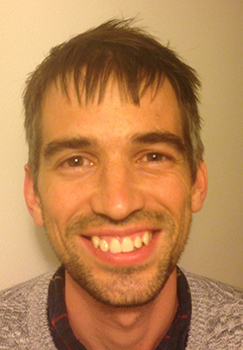
I'm grateful to the BSH for the scholarship to pay for my funding for train fares and hotel accommodation for the ASM.
For the ASM, I contributed in the following ways:
- Co-organised and co-chaired the Blood stories session.
- Co-organised and co-chaired two virtual sessions: Blood stories part 2 and Haematology at the extremes.
- I played the piano for the Faculty dinner.
- I was a co-presenter of an ePoster.
In addition to the sessions I helped to lead, some of the highlights for me were:
a) The Meet the Expert (MtE) sessions. I attended four (haemostasis, global haematology, haemophagocytic lymphohistiocytosis (HLH) and marginal zone lymphoma). These were excellent and engaging discussions. A new project has emerged from the global haematology MtE session, in which I hope to be involved.
b) Discussions with some of the industry and charity stalls. For example, a discussion of a new bone marrow training project with BD and around finding foreign language patient information with Myeloma UK.
c) I found the opening performance of Hidden Pain by Alidor Gaspar (A Star) very moving and a fitting way to move forward with the tone of the meeting.
Karen Desay, Biomedical Scientist, NHS Blood and Transplant
I was very grateful to receive an abstract scholarship from the BSH to attend the 2019 ASM in Glasgow. It gave me a platform to present my research in front of and be questioned by world-renowned experts in the field. I came away with new ideas, a sharpened focus, and a renewed vigour to continue research on genotyping haemoglobinopathy patients to reduce rates of alloimmunisation.
As a biomedical scientist, I don't have any patient contact. This conference expanded my horizons beyond the lab and gave me a greater appreciation of the clinical aspects of disease and the applications of our work. It has informed all of my subsequent writing and teaching on my topics of interest.
I particularly enjoyed the informal nature of the Meet the Expert sessions. They provided stimulating discussion and a fantastic opportunity to ask questions you might not usually ask in a large auditorium.
The conference also highlighted the cutting edge of clinical science. Dr Alexis A. Thompson, Head of Hematology at Lurie Children's Hospital of Chicago and Professor of Pediatrics at the Northwestern University Feinberg School of Medicine, presented the latest results from clinical trials on gene therapy in haemoglobinopathy patients. It represents a really exciting advancement which could transform treatment of these patients.
I also enjoyed the Novartis Sponsored Symposia entitled Artificial intelligence to reimagine haematology treatment.
It's always best to keep abreast of upcoming changes – the future could look very different!
I'd really recommend the BSH ASM to all scientists and clinicians alike, and I look forward to seeing what is in store next year.
Dr Amelia Fisher, ST4 Haematology Registrar; NIHR Academic Clinical Fellow in Genomics, Leeds Teaching Hospitals NHS Trust, University of Leeds
The British Society of Haematology Abstract Scholarship enabled me to attend the BSH Annual Scientific Meeting 2019 to present the poster, Reducing inappropriate blood testing in haematology inpatients: A multicentre quality improvement project.
During a very enjoyable day in which I was also a speaker for the Crucible Prize session, I attended the National Institute of Health Research (NIHR): Better blood research session.
As an NIHR academic clinical fellow trainee, it was brilliant to hear how all grades of haematologists are being engaged by NIHR to bring haematology research and audit not just to teaching hospitals but to any hospital with willing participants.
This idea has been embraced by HaemSTAR, as highlighted in the Trainees propelling blood research talk by David Tucker. I have been fortunate to be a member of HaemSTAR, and David gave an excellent summary of how we are encouraging trainee participation in audit and research across the country.
One speaker I found particularly inspirational was Dr Charlotte Bradbury. She spoke about being a Young consultant initiating blood research, a position I hope to find myself in in future.
From my experience as a Haematology Registrar in Leeds and a member of HaemSTAR, I was aware of the FLIGHT trial[1] that Dr Bradbury has led. To hear about the challenges of setting up this trial, from finding the right research question to ask, ethics, funding (especially when developing research involving a generic drug), and collaboration, was fascinating. Her experiences also demonstrated how hard work pays off – this was a good example of resilience in science!
Before this session, I had not given much thought to the fact patients could consent to two optional blood tests for translational research during the trial. As someone with a keen interest in genomics, I can see why Dr Bradbury chose to include this as part of the trial because there is a limited amount of genomic data available for ITP patients. The development of translational research to find the underlying mechanisms for disease could prove invaluable for developing more effective therapeutics.
At the evening poster moderation session, it was a pleasure to present my poster to moderators and be involved in discussion with them with regards to some of the challenges involved in quality improvement.
Challenges can include continuity of care, adapting a protocol for use at centres with different patient requirements and techniques to encourage the sustainability of changes.
I was pleased to receive feedback that the project was interesting, and the moderators agreed that it is important to rationalise the blood testing we do in haematology. This feedback has encouraged me to go ahead and write up the study results for submission for publication.
Reference
1. Pell J., Greenwood R., Ingram J., Wale K., Thomas I., Kandiyali R., Mumford A., Dick A., Bagot C., 7 Nichola Cooper, Hill Q., Bradbury C.A., Trial protocol: a multicentre randomised trial of first-line treatment pathways for newly diagnosed immune thrombocytopenia: standard steroid treatment versus combined steroid and mycophenolate. The FLIGHT trial, BMJ Open: first published as 10.1136/bmjopen-2018-024427 on 18 October 2018.
Dr Shasha Khairullah, Haematology Trainee, University of Malaya
This year was my first BSH Annual Scientific Meeting, and hopefully, it will not be my last. I gained a lot in terms of the most recent advances in clinical and laboratory haematology.
This year's focus was more on benign haematology, which I appreciated, as I find this section of haematology more difficult to comprehend in comparison to malignant haematology.
The Pitfalls Day was a comprehensive overview of what is required of a trainee, and I benefited a lot from it.
I have a special interest in thalassaemia and, therefore, was pleased to hear lectures from Dr Alexis Thompson and Professor John Porter on the success of gene therapy in sickle cell disease and β-thalassaemia[1]. It is definitely a big step towards finding a cure for these debilitating chronic conditions.
I thought the best session was the MacFarlane-Biggs lecture by Professor Mark Crowther from McMaster University on antiphospholipid antibody syndrome (APLS) and the reversal of anticoagulants. He was brilliant at pointing out that a definitive diagnosis of APLS remains elusive and confirmed my prior learning on the management of this potentially devastating condition. It is, in fact, remarkable that so little progress has been made in APLS management, despite the advances in other haematological conditions.
The chimeric antigen receptor (CAR) T-cell lectures were inspiring, bringing hope for refractory conditions, although, of course, the costs preclude us from adopting this therapy widely in Malaysia at present.
The speakers, on the whole, were very knowledgeable and were fantastic at delivering their topics. There was adequate breadth and depth of the topics covered.
I would like to thank the BSH for the opportunity to present two posters on thalassaemia at the meeting. One on biomarkers of ineffective erythropoiesis in non-transfusion dependent b-thalassaemia; and one unique case report of moyamoya in a-thalassaemia.
I was very privileged to meet several well-known researchers in this field during the poster session.
I enjoyed my stint at the Glasgow BSH in April 2019 and my brief exposure to Scottish culture and hospitality. I would like to thank the committee for making this trip possible.
Reference
1. Thompson A.A., Walters M.C., Kwiatkowski J., Rasko J.E.J., Ribeil J.A., Hongeng S. et al. Gene therapy in patients with transfusion-dependent beta-thalassemia. N Engl J Med. 2018;378(16):1479-93.
Tricia Tay, Medical Student, University of Manchester
When I saw Dr A.V. Hoffbrand well up in tears on receiving his lifetime achievement award, I too welled up in tears to receive this invaluable opportunity of being awarded this scholarship to attend the BSH's 59th Annual Scientific Meeting.
I am grateful for the opportunity to present on behalf of my team on the treatment of natural killer/T-cell lymphoma in Singapore. As a medical student, it was a sheer delight to attend and present a poster at my first haematology conference.
With this scholarship, I have received invaluable feedback on our study and areas of improvement for our future projects. Observing how other presenters shared their presentations and subsequently presenting at this conference has improved my presentation skills.
It has improved my confidence in presenting, and stepping out of my comfort zone to seek constructive feedback on the poster and study design. It has also been pivotal in shaping the future of our study as we begin writing the article for publication.
In addition, this meeting has enhanced my understanding of the wider field of haematology and lymphoma. The session on Making sense of haematology for senior medical students and other professionals was a great session to build a strong foundation in the basics of haematology before the conference started.
We covered a range of topics that foundation doctors should be competent in: from reading full blood counts to dealing with haematological emergencies.
Interprofessional working was at the heart of the small group teaching as we applied our experience and knowledge to answer the questions with highly supportive tutors.
Many participants felt they were not sufficiently prepared for haematology in most of their curricula. We brainstormed how to tackle the stigma and improve the knowledge of our peers because haematology is vital in every speciality.
I am interested in education and research in haematology. The session, How to future-proof yourself in haematology, improved my understanding of how trainees can participate in research and education.
At the end of the day, patients value the clinician in front of them more than the research ongoing in the laboratory or in front of the computer, and it is the clinician's role to bridge the gap from bench to bedside.
This conference has also provided the opportunity to meet supportive mentors keen to teach and inspire the next generation of haematologists.
Attending the ASM felt like I was standing on a cliff – we are at the edge of change in haematology and healthcare in the United Kingdom and the world. I would highly recommend anyone to attend this conference.
I would also like to thank Dr Richard Byers, Haem-pathologist at the Manchester Royal Infirmary, for the initial inspiration in haematology and Dr Tiffany Tang, Haem-Oncologist at the National Cancer Centre Singapore, for the opportunity to conduct this study and present on behalf of the team in Singapore.
Dr James Adam Austin, Postdoctoral Research Associate, University of Liverpool
Firstly, it was rewarding that my research was recognised to merit a travel scholarship that enabled me to partake in the BSH conference and join the showcase of excellent research occurring within and outside the UK.
It was my second consecutive year of attending the BSH conference and another great opportunity to promote and absorb current trends in haematological research.
As a post-doctoral researcher at the University of Liverpool, my expertise is in myeloid leukaemia and the malignant properties of the oncoprotein CIP2A. CIP2A is overexpressed in many cancers and is almost always associated with poor clinical outcomes[1].
Through attending the BSH meet, I was able to seek out works of interest to help develop my research ideas. The abstracts chosen by the BSH catered for a wide variety of research genres, and the quality of the presentations enabled a concise dissection of the key messages. It provided an efficient overview of haematology themes and enhanced the context of my research within the field.
Throughout the conference, I was in close proximity with experts in the field, which provided a great opportunity for in-depth discussion and a feel of current opinion within haematology.
It also provided assurance of the future direction of my research. This year I was impressed by the top-scoring abstract talks in the first 'Acute leukaemia' session, which touched on the hot topic of cancer metabolism. Reprogramming of energy metabolism in cancer is emerging as a means of survival in many leukaemias, including myeloid and lymphoblastic leukaemias[2–5]).
The presentation entitled Targeting metabolic vulnerabilities and aberrant signal transduction pathways in paediatric T-cell acute lymphoblastic leukaemia (T-ALL), presented by Laura Anselmi, was of particular interest, linking commonly mutated genes in T-ALL to metabolic alterations. Many of these changes rewired cellular metabolism towards glycolysis and involved many well-established cell signalling pathways, including AKT and mTORC1 signalling. These metabolic changes were relied upon by these cells and therefore present new vulnerabilities to treating residual disease. The data presented was easy to follow and had clear implications for the future treatment of these diseases.
Attending the BSH conference, I gained a wealth of additional information and contacts from which to strengthen future research. As such, I will aim to regularly attend the meeting in the future.
References
1. Lucas, C. M., Harris, R. J., Giannoudis, A., Copland, M., Slupsky, J. R. and Clark, R. E. (2011) Cancerous inhibitor of PP2A (CIP2A) at diagnosis of chronic myeloid leukemia is a critical determinant of disease progression. Blood 117, 6660–6668.
2. Chen, W.-L., Wang, J.-H., Zhao, A.-H., Xu, X., Wang, Y.-H., Chen, T.-L., Li, J.-M., Mi, J.-Q., Zhu, Y.-M., Liu, Y.-F. et al. (2014) A distinct glucose metabolism signature of acute myeloid leukemia with prognostic value. Blood 124, 1645–1654.
3. Kuntz, E. M., Baquero, P., Michie, A. M., Dunn, K., Tardito, S., Holyoake, T. L., Helgason, G. V. and Gottlieb, E. (2017) Targeting mitochondrial oxidative phosphorylation eradicates therapy-resistant chronic myeloid leukemia stem cells. Nat. Med. 23, 1234–1240.
4. Galicia-Vázquez, G. and Aloyz, R. (2019) Metabolic rewiring beyond Warburg in chronic lymphocytic leukemia: How much do we actually know? Crit. Rev. Oncol. Hematol. 134, 65–70.
5. Knoechel, B. and Aster, J. C. (2015) Metabolic mechanisms of drug resistance in leukemia. Cell Metab. 22, 759–760.
Early-Stage Research Start-up Grants
Early-Stage Research Start-Up Grants are available from 7 November annually.
Apply for an Early-Stage Research Start-up Grant.
The reports below may have had information redacted to ensure the confidentiality of sensitive research information or grant applications. The complete reports will be available once the sensitive content has been published.
Amy Christian, Healthcare Scientist Assistant, Royal Bournemouth Hospital
 The Early Stage Research grant enabled me to proceed with my project plan to investigate immune microenvironmental changes in Waldenström Macroglobulinaemia patients after BTK inhibition.
The Early Stage Research grant enabled me to proceed with my project plan to investigate immune microenvironmental changes in Waldenström Macroglobulinaemia patients after BTK inhibition.
This project had been planned for a while but could not start due to the pandemic and limited staff resources and funding.
Therefore, this pilot study would not have been possible without the generous grant from the British Society of Haematology, as the grant money funded all the reagents required for the practical elements of this analysis.
Read Amy Christian's full report.
Eleni Ladikou, Haematology Specialty Registrar and Honorary Lecturer, University Hospitals Sussex
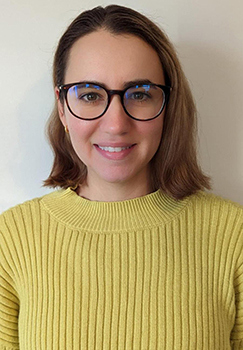
I am deeply grateful to the British Society of Haematology for the Early-Stage Research Start-up grant provided during my PhD. The funding enabled me to conduct essential experiments using patient samples, which were critical to the success of my research.
I successfully established a unique artificial 2D bone marrow model, called the bone marrow adhesion system (BMAS), which served as a drug-testing platform to try and identify novel anti-adhesion therapies for acute myeloid leukaemia (AML).
50% of AML patients relapse and exhibit poor long-term disease-free survival. This unmet clinical need is underpinned by the adherence of AML cells in the protective niche of the bone marrow microenvironment (BMME) where they are protected by cell-mediated drug resistance (CAM-DR). The ability to disrupt this adhesion, and push AML cells into the peripheral blood (PB) where they are more susceptible to chemotherapy, could unlock new and exciting therapeutic strategies.
While many in-vitro co-culture systems had previously been developed for AML, none measured AML cell adhesion in a multi-cellular system. Following extensive optimisation, using different bone marrow cell types with different AML cells (both cell lines and patient-derived cells) I successfully developed the BMAS model.
BMAS replicates the adhesive and protective properties of the BMME using stromal cells (HS-5 cell line), endothelial cells (HUVEC cells), and osteoblasts (hFOB 1.19 cell line).
The platform enabled me to test novel therapies aimed at detaching AML cells from the protective bone marrow niche and I was able to identify anti-CD44 as a therapy that can reduce adhesion and increase AML sensitivity to chemotherapy.
Additionally, I was able to isolate BMAS persistently adherent AML cells and use RNA sequencing to transcriptionally characterise them. This led to the identification of a novel target, FAK, as a key contributor to AML cell adhesion in the bone marrow niche.
Following this discovery, I was able to show that Defactinib, a FAK inhibitor, also prevented AML adhesion and that dual targeting of the FAK and CD44 pathways was the most effective approach for disrupting AML cell adhesion.
Without the early start-up grant, none of this work in developing the BMAS would have been possible.
Following on from this work I successfully secured a PhD studentship grant from the Sussex Cancer Fund which will enable continuation of this exciting project. The student started in October 2024, and I have been awarded an honorary contract as a lecturer at Brighton and Sussex Medical School, which will enable me to continue directing this research whilst I return to the clinical training programme.
Kevin Rouault-Pierre, Senior Lecturer, Barts Cancer Institute
The BSH ESR grant has been instrumental in completing a recently published work,[1] which was presented at key meetings in the field of haemato-oncology: ESH-MDS, ASH (Myeloid workshop and biology of MDS session), the MDS Foundation Annual Congress and the French Club of Hematopoiesis.
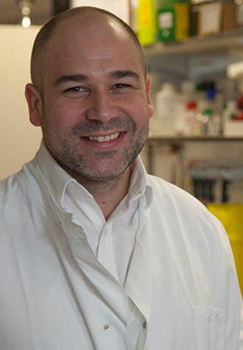
The aims of the grant were:
- to characterise aberrant transcripts in SF3B1-MDS
- to validate these aberrant transcripts in validation cohorts and surrogate models
- to assess the functional impact of these aberrant transcripts in normal and malignant primary haematopoietic cells
Building upon this recent study elucidated a promising treatment avenue for patients afflicted with myelodysplastic syndromes and anaemia. I am collaborating with Dr. Onima Choudhury, a clinical scientist at the University of Oxford, UK. We are seeking funding to develop a Phase 1B clinical trial. This trial will aim to evaluate, through a dose escalation approach, the efficacy and toxicity of Vitamin B5 in SF3B1-MDS.
Reference
1. Mian, Philippe et al. Vitamin B5 and succinyl-CoA improve ineffective erythropoiesis in SF3B1-mutated myelodysplasia. Science Translational Medicine Vol. 15, No. 685, March 2023
Daniel Hodson, Honorary Consultant Haematologist, University of Cambridge
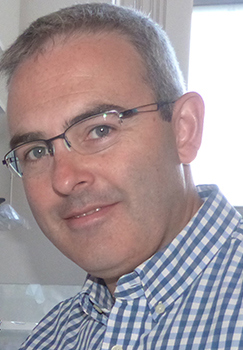
The Early Stage Grant allowed me to develop a set of unexpected but exciting findings that arose in the lab related to identifying large numbers of potential micropeptides translated from previously unrecognised small open reading frames (smORFs) within the human genome.
This project was joint funded by the British Society of Haematology, the Addenbrooke’s Charitable Trust and the RoseTrees Trust. These grants allowed me to retain an extremely talented junior clinical academic, Dr Joanna Krupka, by bridging her salary between grants for twelve months. This was essential to keep the momentum of the project and to retain an excellent and skilled bioinformatician within my research group.
During this time, Dr Krupka completed extremely complex computational analysis to prioritise the most promosing smORFs. This allowed us to design and construct a targeted CRIPSR library, which we deployed across five lymphoma cell lines and in non-malignant human B cells grown ex vivo.
These experiments have provided compelling evidence for the biological functionality of large numbers of previously unknown micropeptides within human lymphoid cells.
Dr Henry Wood, Clinical Fellow, King's College London
The grant was critical to enabling me to develop a novel mass cytometry panel to study human monocyte/macrophage populations in acute myeloid leukaemia (AML).

The funds paid for the purchase of antibodies and reagents used in the panel, custom metal conjugation of antibodies, and acquisition of data from stained samples on the Helios mass cytometer at the NIHR Biomedical Research Centre Flow Core at Guy's Hospital.
The mass cytometry panel was developed successfully through multiple optimisation steps using a range of frozen, fresh, cultured and stimulated samples from different haematopoietic tissues to assess the efficacy of the antibodies and titrate them appropriately.
Once optimised, the panel was used to assess paired blood and bone marrow samples from 5 normal donors and 20 AML patient samples (10 recorded as FAB M0-2 and 10 FAB M4-5) alongside umbilical cord blood controls.
The resulting data demonstrate biologically relevant monocyte/macrophage and immature haematopoietic cell populations with a high degree of consistency within normal samples, although preserving the expected differences between peripheral blood, bone marrow and umbilical cord blood.
The data revealed significant variation in the monocytic populations present in different AML samples, which were not always consistent with the previously assigned FAB classification.
The samples can be broadly categorised into primitive, monocytic, mixed (primitive and monocytic) or intermediate 'monoblastic' phenotypes. These categories provide a basis on which to explore the behaviour of AML samples when challenged with chimeric antigen receptor (CAR) T-cells and may be predictive of the severity of the inflammatory response.
Dr Christina Pina, Lecturer in Biomedical Sciences, Brunel University London
 The funding received was critical for my installation as a new Lecturer in Biomedical Sciences at Brunel University London, College of Health, Medicine and Life Sciences.
The funding received was critical for my installation as a new Lecturer in Biomedical Sciences at Brunel University London, College of Health, Medicine and Life Sciences.
It bridged my previous fellowship work at the University of Cambridge into my first established academic position. It also allowed me to recruit a talented MPhil (Res) student, Ralph Samarista, to undertake laboratory work whilst I got settled into the combined teaching, research and administrative commitments of my new post.
This student's recruitment was particularly critical during the Covid-19 pandemic, which placed a strong onus on teaching responsibilities with adaptation to remote and, later, hybrid teaching and extensive undergraduate student support.
Furthermore, charity-based funding opportunities that have historically supported work in the haematology and leukaemia fields were significantly reduced and, in many cases, suspended during the last two years, and the BSH funding was critical to sustain my research activity.
At an institutional level, my early establishment as an externally-funded researcher in the leukaemia field supported my nomination as the Cancer Cluster Lead in the newly-established Centre for Genome Engineering and Maintenance. It prompted a college-level financial commitment to upgrade the existing Novocyte flow cytometer analyser from 5 to 15 channels to enable my research.
More recently, my sustained research activity proved critical to a successful college matched-funded application to the Wolfson Foundation for the acquisition of a cell sorter.
Scientifically, the funding allowed me to analyse individual and combined contributions of epigenetic methylations and the unfolded protein response (UPR) in acute myeloid leukaemia (AML) and to explore the therapeutic potential of combined DNA demethylating agents and UPR modulators.
I had previously identified these two pathways as the main candidate mediators of AML dependency on the MAT2A enzyme, which catalyses the synthesis of S-adenosyl-methionine, the main methyl donor in the cell.
I have now shown that combined targeting of DNA methylation and activation of the pro-apoptotic arm of the UPR can cooperate in eliminating AML cells from different genetic backgrounds, both cultured AML cell lines and patient samples.
I will now aim to extend these results in vivo to confirm their translational therapeutic potential.
Dr Lara Roberts, Consultant Haematologist, Kings College Hospital

The BSH grant provided essential funding to complete an observational study of haemostasis in patients with chronic kidney disease, predominantly funded by Kidney Research UK.
Without the additional funding, the full evaluation of haemostasis would not have been possible.
This work illustrated that patients with CKD exhibit concomitant features of hypercoagulability and platelet dysfunction on global tests of haemostasis.
Read Dr Roberts' full report.
Dr Richard Burt, Senior Clinical Research Fellow, University College London

The BSH grant has been enormously helpful in my career development as a clinician-scientist.
Following the completion of my PhD on the acute lymphoblastic leukaemia (ALL) microenvironment in Professor Fielding's lab, I was very keen to continue research in this area. However, before obtaining the BSH grant, I was not in a position to apply for an intermediate fellowship as I required evidence of output from my PhD, preliminary data for the intermediate fellowship and evidence of obtaining grants independently.
The BSH Early Stage Research Grant enabled me to complete the benchwork required for a high-impact publication in Blood from my PhD, produce the preliminary data required for the intermediate fellowship application and show evidence of obtaining a competitive independent grant.
Without the BSH grant, it would have been much more challenging to have the time and budget for consumables to complete the required work to get to the next stage of my career as an early clinician-scientist.
The overarching hypothesis of the work was that surviving cells post-chemotherapy in B-cell acute lymphoblastic leukaemia (B-ALL) reside in a protective niche, which alters their metabolic state and favours chemotherapy resistance.
The objectives of the work are to:
- Determine whether B-ALL cells are rescued from chemotherapy-induced oxidative stress via transfer of mitochondria in in vivo models.
- Establish patient-derived xenograft (PDX) models of B-ALL for use in intravital imaging.
- Compare niche formation in a B-ALL PDX model using intravital imaging across different genetic sub-types both before and after chemotherapy.
Using a B-ALL xenograft murine model, I confirmed my in vitro findings that B-ALL cells are rescued from oxidative stress induced by chemotherapy by residing in a protective bone marrow niche.
I was able to show that part of the protective mechanism within the niche is the transfer of mitochondria from bone marrow stromal cells to B-ALL cells, as demonstrated by the presence of murine mitochondrial DNA in human B-ALL cells.
The transfer of mitochondria to B-ALL cells enables them to resist oxidative stress induced by DNA damaging chemotherapy agents (e.g. Daunorubicin, Cytarabine). Importantly, this protective mechanism can be inhibited by microtubule damaging agents (e.g. Vincristine, Nocodazole) as the transfer occurs between cells via microtubule containing tunnelling nanotubes. This provides a strong scientific rationale for giving microtubule damaging agents with or prior to DNA damaging agents in B-ALL treatment.
The work was published in Blood, and there are plans to test the approach in a randomised fashion in the proposed UKALL15 trial.
Dr Holger Auner, Clinical Senior Lecturer and Honorary Consultant in Haematology, Imperial College London
This BSH award contributed to the successful application for a Cancer Research UK (CRUK) Small Molecule Drug Discovery Award that will be activated in 2019 and will focus on validating a potential new therapeutic target to overcome proteasome inhibitor resistance.
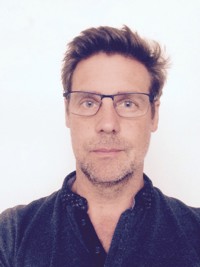
My research group works on aspects of intracellular protein homeostasis (proteostasis) in cancer cells and non-transformed cells, with a particular interest in multiple myeloma. The ultimate goal of our work is to find ways to disrupt proteostasis in malignant cells while largely sparing non-cancerous cells.
This aim builds on the proposition that cancer cells and, in particular, myeloma cells are highly dependent on the mechanisms that coordinate protein degradation and synthesis. This notion is supported by the clinical success of inhibitors of the proteasome, the main effector of intracellular protein degradation.
The BSH grant allowed us to complete a set of experiments that formed a key part of a project that has now been completed, with a manuscript under review (May 2018).
The grant also enabled us to conduct a set of preliminary experiments that supported a successful grant application with an industry partner and another grant application submitted to a UK organisation.
While the experiments funded by the BSH grant formed part of a larger work programme, the results of these experiments became important components of both the submitted manuscript and the grant applications, providing critical support for our conclusions and hypotheses.
Dr Rhys Morgan, Research Fellow, University of Bristol, School of Cellular and Molecular Medicine. 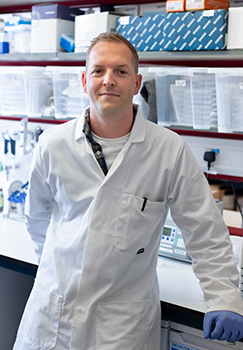
Wnt/b-catenin signalling is an evolutionary conserved signalling pathway critical for normal development and heavily implicated in human cancer. The central mediator, b-catenin, is frequently overexpressed in acute myeloid leukaemia (AML), where its expression is linked with inferior patient survival. Furthermore, well-characterised experimental models of AML development have demonstrated b-catenin to play a pivotal role in leukaemogenesis, rendering the protein an ideal therapeutic target.
The stability, subcellular localisation and transcriptional activity of the central mediator b-catenin is dictated heavily by proteins interactions. To date, much of its molecular characterisation has been performed in epithelial cells. However, b-catenin's haematopoietic interactome is likely to vary from its epithelial interaction network given its less prominent cell adhesion role (adherens junctions) in blood cells and the relative scarcity of activating Wnt mutations (APC, Axin and b-catenin), which are frequent in solid tumours but rare in haematological malignancy.
Pertinent to the molecular targeting of b-catenin to disrupt its pathological role in AML is the prior characterisation of its interacting partners in leukaemia cells.
My BSH early-stage research start-up grant has allowed me to assess the feasibility of performing b-catenin interactome studies in leukaemia cells for the first time. Specifically, we have trialled the process of co-immunoprecipitating (co-IP) b-catenin protein from both leukaemia cell lines and primary AML patient blast samples, followed by mass spectrometry analysis.
Obtaining research funds from major grant funding bodies would have been a considerable challenge, given the perceived level of risk associated with our experimental approach. As a junior research scientist, I would have also struggled in more competitive funding schemes, given my relative inexperience in comparison with more senior co-applicants in the field.
However, our now optimised experimental strategy has proved successful. And the BSH grant has provided me with the novel and interesting data I require to build a more substantial and long-term research bid.
Global Haematology Scholarships
Four Global Haematology Scholarships are available each year. Two to travel to the UK from a low to middle-income country (LMIC) and two from an LMIC to the UK. They are available from 1 July each year.
LMIC to UK
Dr Abebaw Wodajo, Hawassa University College of Medicine and Health Science, Ethiopia
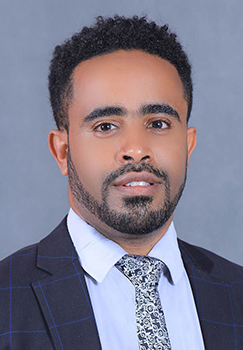
For years, it was deeply disheartening to witness patients at my institution endure the burden of being referred three hundred kilometres away, just to access basic haematopathology diagnostic tests like bone marrow aspirates, trephine biopsies, and other specialized procedures.
As a resident and consultant, I have seen countless patients lose their lives before even receiving a definitive haematologic diagnosis due to the lack of expertise in interpreting peripheral blood smears and performing bone marrow aspirations and biopsies.
The crux of the problem stems from the lack of specialised training in haematopathology among our anatomic pathologists. This has led to uncertainty in performing bone marrow sampling and significant inconsistencies in interpreting blood films, exposing a critical shortfall in our haematopathology services.
I was determined to bridge these gaps and embarked on a self-directed journey of learning, attending online webinars and exploring resources independently. However, the turning point came with the transformative opportunity provided by the BSH Global Haematology Scholarship, which opened new doors for practical hands-on training at King’s College Hospital, London.
This invaluable programme granted me a four-week, hands-on observership, under the mentorship of Professor Cessay Mensour, a distinguished consultant haematologist. During this time, I immersed myself in the study, diagnosis, and interpretation of peripheral blood films, bone marrow aspirates, and trephine biopsies across an array of benign and malignant haematologic conditions.
Engaging in diagnostic challenges with haematology registrars felt like solving thrilling medical puzzles, as we examined blood film and bone marrow slides without prior clinical information, later discussing our findings together under a multiheaded microscope.
Beyond the diagnostic exercises, I participated in numerous multidisciplinary team meetings alongside consultants, gaining invaluable insights into tackling complex haematologic cases. By the end of my observership I achieved my goal of refining my examination and interpretation skills for blood and bone marrow studies.
I wasted no time in implementing change upon returning home. I submitted a detailed proposal to my department and designed tailored teaching sessions for fellow pathologists, residents, and lab. assistants. More significantly, I performed and interpreted my very first trephine biopsy with confidence. My training bore fruit as I reported my first trephine biopsy case, a patient with aplastic anaemia marking the dawn of this vital service at our institution and ending the need for referrals.
An exciting development followed: Dr. Cessay and his colleagues agreed to collaborate with my institution by offering second-opinion diagnoses for complex cases and facilitating continuous learning through webinars. This partnership aligns perfectly with the BSH Global Haematology Scholarship’s vision to build haematology capacity worldwide. Together, we are paving the way for a brighter future in haematopathology services at my institution and across the nation.
Dr Onyinye Eze, Enugu State University of Science and Technology Teaching Hospital, Nigeria
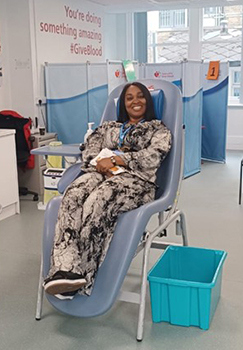
I am writing to provide a detailed report on the training I received through the British Society for Haematology (BSH) sponsorship, which allowed me to observe the world-class transfusion services at NHS Blood and Transplant (NHSBT).
This comprehensive six-week training aimed to address the critical challenges in transfusion medicine that my home institution in Enugu, Nigeria, faces. The training was particularly significant given the high burden of diseases such as malaria, postpartum haemorrhage, sickle cell disease, and cancers in Enugu, all of which demand efficient, safe, and reliable blood transfusion services.
In my capacity as a consultant haematologist working at a busy teaching hospital in Enugu, I have witnessed numerous transfusion-related challenges, including:
1. Inconsistent blood availability: Blood shortages are a recurring issue, leading to avoidable deaths, particularly in cases of postpartum haemorrhage, sickle cell crises, severe malaria, and cancer treatments that require blood transfusions.
2. Suboptimal blood safety standards: The reliance on paid blood donors and insufficient infectious disease screening pose a high risk of transfusion-transmitted infections (TTIs) like HIV, hepatitis, and malaria.
3. Inadequate blood management protocols: In Enugu, there are no established protocols for Patient Blood Management (PBM), resulting in unnecessary transfusions, which further strain the already limited blood supply.
4. Absence of haemovigilance systems: There is no structured system for monitoring and reporting adverse transfusion events, making it difficult to assess the safety and effectiveness of transfusions.
5. Limited knowledge and training: There is a significant gap in knowledge and training for clinicians, nurses, laboratory scientists, and other healthcare professionals involved in transfusion services, resulting in inefficient practices that compromise patient safety.
Addressing these challenges requires specialised training and the implementation of best practices in transfusion medicine. The BSH-sponsored NHSBT training was crucial and gave me the knowledge, skills, and insight necessary to initiate improvements in our transfusion services.
During the six-week observership, I had the opportunity to engage in a variety of activities at NHSBT's Colindale and Manchester sites, shadowing leading experts in transfusion medicine and observing cutting-edge technologies and procedures.
Dr Mohammad Abdullah Az Zubayer Khan, National Institute of Laboratory Medicine and Referral Centre, Bangladesh

When I was a child, it was painful and frightening to see my neighbours living with regular blood transfusions.
Now I am a haematologist, I am anguished to see approximately seven thousand thalassaemia major or intermedia babies born each year in Bangladesh, most of them unregistered.
The plights of thalassaemia babies and their families in a resource-poor country always pains me. Most of them are from the poorest section of society. Government support has been minimal.
Recently the Bangladeshi government has paid particular attention to developing integrated management of thalassaemia and haemoglobinopathies. This includes newborn screening, mass public awareness, modernisation of diagnostic and blood transfusion facilities, a holistic treatment approach and so on.
The NHS is the best example of integrated healthcare facilities in the world and is an ideal place for the observership made possible through the BSH Global Haematology scholarship.
From the community clinic in East Ham Thalassaemia Centre to the haematology patients’ facility at the Royal London Hospital, from the blood transfusion facility at the John Radcliffe Hospital to newborn screening centres in Great Ormond Street Children's Hospital and the Central Middlesex Hospital, I have been able to gather experience suggesting ways to accomplish the Bangladeshi goal.
Thank you BSH for giving me this opportunity.
Dr Shanika Vitharana, Lady Ridgway Hospital for Children, Sri Lanka
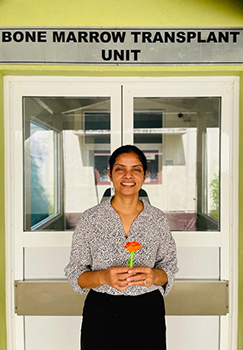
The paper flower I hold in the photograph is a precious gift I got from an eight-year-old girl, “T.A."
We performed the matched sibling donor transplant for aplastic anaemia on her, using the knowledge and confidence I gained from the training at Great North Children’s Hospital, Newcastle upon Tyne. This is the most valuable gift I can give to the BSH for giving me an opportunity to train at one of the best institutions in Europe, if not the world.
I am from Sri Lanka and work for the one and only government-funded paediatric transplant centre in the island. The centre is new, and our expertise in transplantation is limited. We have a long waiting list of patients who cannot afford a transplant in India or more locally, particularly in the private sector.
In conclusion, this was a great experience, and I will be using it to broaden the horizons of my career and uplift the haematopoietic stem-cell transplantation services in Sri Lanka. I can assure you that there will be many patients like "T.A.” who will benefit from the experience given to me by the BSH. THANK YOU!!!
UK to LMIC
Dr Martin Gonzo, University of Greenwich at Medway, UK

The University of Zimbabwe (UZ) Medical School runs MSc Haematology and BSc (Hons) Medical Laboratory Sciences (MLSc) degree programmes within the Department of Medical Laboratory Sciences. Most scientists working in diagnostic haematology in Zimbabwe graduate from this institution and I had the opportunity to visit it on a BSH Global Haematology scholarship.
The MLSc programme faces resource and staffing challenges, which I helped alleviate by undertaking a non-remunerated lectureship assignment.
My visit aimed to enhance the teaching and learning of haematology in Zimbabwe. A further aim was to initiate collaboration between the UZ medical school and the University of Greenwich where I am currently based as a senior lecturer in Biomedical Science.
I delivered lectures to first, second and final-year undergraduate students and helped improve teaching approaches for the blood transfusion, haematological techniques, immunology and haematology modules. These modules are taught in the first, second and fourth years of the MLSc programme. I also had an opportunity to review and feedback on research project work for my students and identified the potential to establish research collaborations in haematology.
I was able to share my knowledge and experience in curriculum development. I now contribute to the delivery of online lectures to students at UZ, which is challenging due to internet poverty. I hope to work with the Department of Medical Laboratory Science to explore ways of making virtual learning a realistic approach.
During my visit, the department organised a tour of the haematology/pathology laboratories at the hospital attached to the medical school. I also visited the National Blood Service headquarters where blood collection, processing and testing take place. The tours allowed me to investigate the possibility of collaboration that will help improve knowledge exchange in haematology practices.
Following this visit, I intend to continue strengthening the relationship between the two institutions by offering virtual lectures. My non-remunerated voluntary lectureship position will enable me to contribute to advancing haematology learning in this developing country.
Funding permitting I intend to undertake another visit to UZ to teach, assess and supervise research projects for haematology students. I will also explore exchange opportunities with the University of Greenwich to enable effective knowledge transfer.
Daniel Hodson, Honorary Consultant Haematologist, University of Cambridge
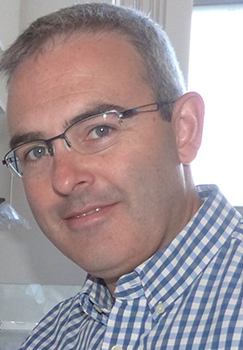
The Cambridge Lymphoma Biology International Symposium took place on the 17th and 18th of September at the Cripps Conference Centre, in Magdalene College, Cambridge.
The aim of the meeting was to promote interaction and networking of lymphoma translational biology researchers to foster networking and scientific collaboration.
This meeting is the only one of its kind held within the UK to focus on the translational biology of lymphoid malignancies. Having run this meeting three times, it has now established itself as a focal point for the face-to-face meeting of members of the lymphoma biology community.
The meeting provided an invaluable opportunity to develop new (and reaffirm existing) friendships and collaborations across the international lymphoma research network. These collaborations, which span the
UK, Europe and North America are essential for the performance of the highest quality translational science in the UK and are built on the friendship and trust that arise from small face-to-face meetings like this.
The meeting met these aims based on several criteria:
1) conference registration reached the capacity of the conference venue 2)outstanding list of expert speakers
3)overwhelmingly positive feedback from delegates and requests to run the meeting again in 2026
Lucy Cook, Consultant Haematologist, Imperial College Healthcare NHS Trust
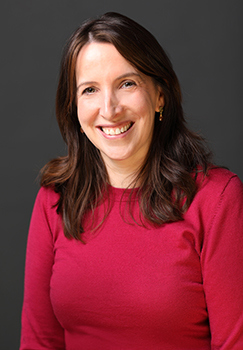
We hosted HTLV2024, a meeting in London of ~300 delegates attending from countries including the UK, USA, Brazil, Peru, Lebanon, Japan, Australia, Germany, France, Belgium and Spain.
Adult T-cell leukaemia/lymphoma, which is caused by infection with HTLV-1, currently has dismal outcomes and few long-term survivors. The aim of the meeting was multidisciplinary and brought together clinicians (haematologists, neurologists, paediatricians, obstetricians), basic scientists, public health doctors and patients. Current challenges were discussed and new evidence and proposals for future work were presented.
The meeting was organised as a day of workshops covering topics: basic science (animal models, molecular virology); clinical prognostic markers; international collaborations; elimination of mother-to-child infection and public health.
There were distinguished invited speakers such as the UKHSA chief scientific officer, a Director of WHO, and a representative from Brazilian Health Ministry. The following 3 days included invited oral presentations (UKHSA, WHO and patient representatives), three invited keynote addresses, 60 oral presentations selected from peer reviewed abstracts and 2 dedicated posters sessions which were exceptionally well attended.
Support from the BSH allowed us to run the meeting in London, and reduce costs to clinicians and scientists attending from LMICs, as well as support patient representatives to attend.
Thank you to the BSH for awarding me the Student Elective Scholarship, which allowed me to undertake my medical elective at Pontificia Universidad Católica in Santiago, Chile.
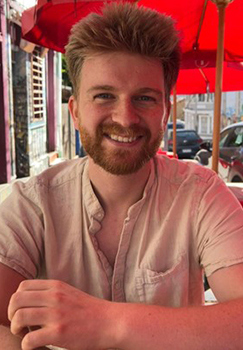
This experience offered invaluable clinical and cultural experiences that have deepened my insight into a career in haematology. Over five weeks, I was immersed in a haematology and oncology department that balances high standards of care with the complex realities of a dual public-private healthcare system.
One of the most striking observations during my placement was the age distribution of patients with haematological malignancies. In contrast to the UK, where many such conditions predominantly affect older adults, a significant proportion of patients I encountered in Santiago were in their twenties and thirties.
This demographic shift reframed the emotional and social dimensions of care: young patients confronting life-changing diagnoses while often balancing careers, families, or educational commitments. Their stories left a lasting impression and underscored the need for holistic, empathetic care in oncology.
The structure of the Chilean healthcare system is split between public (Fonasa) and private providers, which shapes clinical decision-making regarding available resources and services.
Witnessing the integration and friction between these systems was eye-opening. Patients often moved between sectors based on financial capacity and treatment access. I gained a deeper appreciation of how socioeconomic factors, insurance coverage, and national policy influence diagnostic timelines and therapeutic choices. This insight will inform my future practice, especially in understanding how to advocate for equitable care.
A unique aspect of the placement was the focus on malignant haematology. Many patients in the public system presented with advanced disease stages, often due to delayed presentation and access challenges.
I was struck by the nuanced balance clinicians maintained between evidence-based protocols and practical limitations of the system, especially in diagnostic imaging and laboratory support, often having to wait between six to eight weeks for monitoring CT CAP scans to be reported.
This context sharpened my appreciation for flexible, patient-centred care models.
Cultural immersion was another key aspect of this placement. Communicating in Spanish—with support—challenged me to think carefully about my language, tone, and body language. I also gained insight into how cultural beliefs shape patient attitudes toward disease and treatment.
In summary, this elective has been profoundly informative. It has broadened my clinical insight into haematology and oncology with a more global perspective. I am deeply grateful to the British Society for Haematology for supporting me in pursuing this experience.
The Student Elective Scholarship, which covered my elective costs in haematology at the Manchester Royal Infirmary (MRI), has allowed me to do so much.

I have further developed my interest in the speciality, as well as my knowledge of core haematological conditions within a very friendly and supportive environment.
I was able to observe a whole range of procedures in adults and children. These included lumbar punctures, intrathecal chemotherapy, line removals and bone-marrow biopsies. Being a tertiary centre, the MRI has been a fantastic place to undertake my elective and has allowed me to directly compare my time here to previous haematology placements within district general hospitals.
I saw patients who had had CAR-T therapy as well as allogenic haematopoietic stem-cell transplants (HSCT), which was something I hadn't seen before.
I attended various clinics and ward rounds within the subspecialities a career in haematology offers: immune thrombocytopenic (ITP) clinics, sickle clinics, paediatric leukaemia maintenance clinics, adult and children bone-marrow transplant clinics and lymphoma clinics.
Alongside the placement, I completed the first cycle of a clinical audit of thalassaemia patients for the clotting team, which involved looking at clinical documentation. This built my confidence in completing an audit. My audit uncovered further things that needed looking into so I felt I had some positive impact during my time.
Overall this elective placement offered a well-rounded insight into what a career in haematology can offer, and it has certainly cemented my passion to pursue it in the future.
I would like to start by thanking the British Society for Haematology greatly for their generous contribution towards my medical elective in haematology at Juntendo University in Japan.
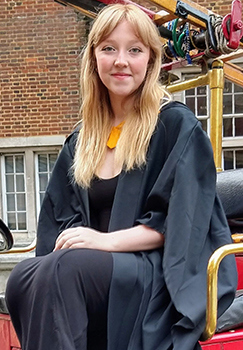
During my time at the university, I have found haematology to be a very interesting yet challenging speciality. At Imperial College London, we receive a large amount of haematology teaching during our pathology course but opportunities for clinical rotations are hard to come by. I have an interest in haematological malignancies, which I was eager to explore further during my elective. This rotation was my first experience of haematology on the wards.
My aims for my elective were to observe haematology on the wards and apply my prior medical knowledge, whilst also exploring the healthcare system of another country.
During my two-week placement at Hongo Hospital in Tokyo, I had the privilege of working with two different haematology teams. I noticed that all the patients I encountered had haematological malignancies or were experiencing oncological emergencies resulting from such conditions.
My previous exposure to haematology at university involved a much broader range of conditions, with a greater focus on haemophilias. It was interesting to discuss these differences in disease prevalence and teaching with the doctors on the wards.
Each day consisted of morning and afternoon ward rounds. I was very impressed with the continuity of care. Every morning, the team would discuss and design treatment plans with their patients, and revisit them in the evening to review progress made.
Many of the patients remained under the team’s care throughout my placement. This built a really strong rapport between the team and their patients and allowed me to observe how treatments impacted patients over time. It was wonderful to see how patients' experiences and conditions could change significantly day-to-day.
Over the two weeks of my elective, I saw a variety of procedures, including bone marrow biopsies, stem cell transfusions, and bone marrow analyses. It was amazing to witness these procedures and to see firsthand how they affected patients over several days.
This experience has significantly enhanced my confidence in understanding haematology in a clinical context. It has improved my ability to interpret blood results for haematological pathology, deepened my knowledge of the management of haematological malignancies and emergencies, and further solidified my interest in the speciality.
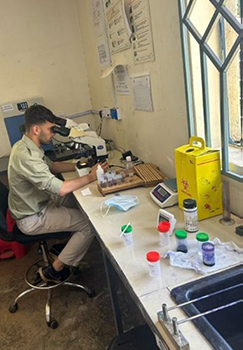
Patients came into the clinic with a range of ailments. We looked after people who had wounds that needed sterilising and dressing, pregnant women who required intravenous rehydration and children with malaria. The clinic was equipped with a simple lab and three treatment rooms so the care that could be offered was somewhat limited, yet the service it provided to the local villagers was priceless.
I took part in home visits with the TRMC team to provide medical care to patients who were unable to make it to the clinic through illness, frailty or the difficulty of the terrain. We would walk through the villages to reach our patients and do the best we could with what we had. I saw patients with tuberculosis, malaria, severe hypertension, major diabetic complications and a vaso-occlusive crisis secondary to sickle cell disease.
There was simply nothing we could do for some patients as the timeframe for intervention had already passed. This was something that I really struggled with.
The highlight of my time with the TRMC was the medical health camp we ran. We were able to tend to the health needs of more than three hundred patients in one day. A local school was used as a makeshift clinic and pharmacy with a triage station just outside.
Many patients had come with malaria or sickle cell disease, conditions that I have seldom seen in the UK. During the camp, my placement partner tended to a patient with sickle cell disease who he suspected had malaria. The clinic staff did not think the patient had malaria, but my colleague was insistent, and the patient ultimately tested positive for malaria on a rapid diagnostic test.
A plan was then made to take the patient to the hospital. At the RESCH, we joined Dr Ochola, the only medical doctor in the whole hospital, for his ward rounds. We saw patients admitted with malaria and sickle cell crisis.
We also discussed some of the challenges the hospital faced such as the lack of a blood bank and anti-D immunoglobulin for rhesus-negative mothers. I was lucky enough to spend time with the laboratory team and diagnosed malaria using a microscope and a slide. Something I had previously only read about in textbooks.
I learned a lot during my time in Kenya and took back medical knowledge and experience that will benefit my career and the patients I serve. However, equally as important were the non-medical lessons.
No matter where in the world you go and whatever differences we perceive amongst ourselves, we are all unified in our desire for a healthy life for our loved ones.
I am grateful to the British Society for Haematology for awarding me a Student Elective Scholarship.
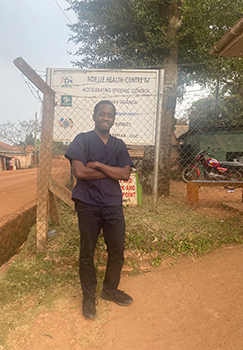
I am a final-year medical student at the University of East Anglia in Norwich. This summer I was fortunate enough to carry out my elective at the Mildmay Hospital and Ndejje Health Centre in Kampala, Uganda.
Uganda holds a place in my heart as my parents' country of origin. Since I started medical school I have been eager to experience healthcare there.
I am developing a real passion for haematology and seeing how disorders of the blood impact all our organ systems. The elective in Uganda allowed me to deepen my understanding of blood disorders affecting the sub-Saharan population (eg sickle cell disease and HIV) and experience healthcare in a resource-diverse setting.
The first three weeks of my placement were spent at Mildmay Hospital, a centre in Kampala renowned for its dedication to public and private care in the local area. Many of the conditions I observed are rare in the UK and I was able to clerk, examine and learn from an entirely different patient demographic to those in Norfolk.
Mildmay also hosts a renowned internationally accredited laboratory. The laboratory staff showed me a host of blood samples under the microscope and how various tests were performed to provide a comprehensive clinical picture.
My fourth week involved a week at Ndejje Health Centre. This regional government hospital demonstrated the value of healthcare in a setting with limited resources, where the patients faced numerous challenges.
I was in awe of the work the staff carried out daily and the deep understanding they had of a host of conditions. They often utilised second, third or even fourth-line treatment options for patients unable to afford medications or facing barriers to adherence.
Overall, this bursary gave me an opportunity to explore my passions and broaden my perspective on not only haematology, but also tropical medicine and global health. I am looking forward to applying what I have learned in my future clinical practice and to transitioning with this into my final year of medical school.
Thank you again to the BSH for providing the funding for this once-in-a-lifetime experience.
The BSH Student Elective scholarship enabled me to embark on an enriching medical elective in the Haematology Department at the Sir Anthony Mamo Centre, Mater Dei Hospital, Malta. This is Malta's largest public healthcare facility.

This opportunity has been instrumental in shaping my early career, providing firsthand experience in the daily lives of haematologists and their patients.
During my six-week placement, I fully immersed myself in the various aspects of haematology care. I participated in daily ward rounds led by junior doctors and consultants. I attended outpatient clinics, including specialised bone marrow transplant clinics conducted by visiting consultants from London, and observed numerous procedures in the Day Care Unit, including bone marrow biopsies.
Additionally, I attended multidisciplinary team meetings and gained practical insights by observing blood film analysis in the laboratory.
The Maltese healthcare system is like the NHS in being publicly funded and free at the point of care for citizens. It presented a unique environment to observe differences in healthcare delivery. The comparative perspective was invaluable, enhancing my understanding of international healthcare systems and their operational nuances.
One of the most rewarding aspects of my elective was experiencing the diverse elements of haematology care and engaging with patients at various stages of their treatment journeys. I witnessed the development of long-term relationships between patients and healthcare providers and the camaraderie within the medical team. Following patients throughout my time in Malta underscored the importance of continuity in patient care.
The elective also presented its share of challenges. I encountered the emotional difficulty of breaking bad news and the complexities of managing diagnostic uncertainty. These experiences were crucial in honing my professional resilience and empathy, key attributes for healthcare professionals.
It was a privilege to be welcomed by the Haematology Department at the Mater Dei Hospital. I am very grateful to the BSH for the grant that facilitated the elective.
In conclusion, my placement at the Mater Dei Hospital has given me valuable insights into a career in haematology and the cultural dimensions of healthcare, both of which will greatly inform my future medical career.
I am so thankful to the British Society for Haematology for providing a grant to travel abroad for my elective.

I am a final-year medical student at Bristol and was able to go to Cambodia for four weeks to carry out my elective at the National Paediatric Hospital (NPH) in Phnom Penh.
During medical school, I had very limited exposure to haematology. Through my elective, I gained a better understanding of haematology as a speciality and the conditions that affect Cambodian children.
The prevalence of thalassemia is around 30-40% making it a common condition I saw in everyday practice. I saw many children with beta-thalassemia who came in regularly for blood transfusions and through them I learnt of government-funded healthcare insurance.
Even though many Cambodians pay monthly for this insurance, costs still pile up for medical care. I couldn’t help but compare how easy it is to access healthcare in the UK and how much we take our healthcare system for granted. Neither patients nor healthcare professionals have to worry about costs.
I unfortunately didn’t see as much haemato-oncology as I would have liked as it was linked with the oncology department and haematology was mainly linked with immunology. I was still able to see many acutely unwell patients, mainly with dengue infections that were worsened by their thalassaemia.
I also sat in on many outpatient clinics where I saw many thalassemia, anaemia and chronic immune thrombocytopenia patients.
I attended teaching sessions run by the department on conditions like Kawasaki disease, which often involved looking at guidelines from Australian Hospitals. I saw different haematological case presentations at the hospital, such as a severe case of Henoch-Scholein Purpura which unfortunately went undiagnosed until the child presented with severe gastrointestinal haemorrhages.
Many of the children we saw lived in rural areas. We saw children with more severe manifestations of diseases, as accessing large healthcare institutes meant travelling more than six hours to the nearest hospital capable of investigating and treating their illnesses.
I’m so grateful to the BSH for providing me with this amazing opportunity to experience both the educational and cultural aspects of Cambodia and to the staff in the Haematology Department at the NPH in Phnom Penh for having me!
I would like to start by sincerely thanking the BSH for their generous grant, which made my medical elective possible. Without their support, I would not have had the invaluable opportunity to expand my knowledge and grow in my journey toward becoming an NHS doctor.
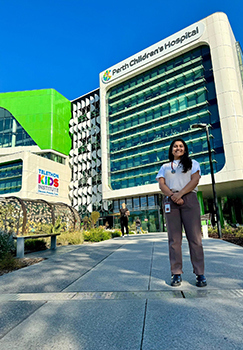
During my medical elective at the Oncology and Haematology department of Perth Children's Hospital, I worked closely with a team of healthcare professionals who provided me with valuable insights into the complex world of paediatric oncology and haematology.
One of the key aspects of my elective was attending daily handovers and ward rounds. These sessions helped me understand the complexities of managing paediatric cancer patients, whose ages ranged from just a few months to sixteen years.
The wide age gap brought unique challenges. For instance, communicating with very young children who couldn’t express their feelings verbally required careful observation and an understanding of non-verbal cues.
On the other hand, older children were often more vocal about their emotions and struggles, particularly their feelings of missing out on key moments of adolescence. This required a more empathetic approach, to address their concerns and provide emotional support to them and their families.
Observing the management of oncological emergencies such as neutropenic sepsis was particularly impactful. Watching the ABCDE approach in action during these critical situations was especially memorable.
Seeing the coordinated response of the healthcare team highlighted the importance of swift action and communication in improving outcomes for high-risk patients. The way the team systematically addressed each aspect of the patient's condition will stick with me and serve as a vital reference as I prepare to manage emergencies in my practice when I begin working as a doctor next year.
I also joined doctors in educational sessions. We explored the latest leukaemia management protocols from the Children's Oncology Group, which provided a fresh perspective to compare with the NICE guidelines from the UK. This comparison helped me appreciate the differences in treatment approaches and the importance of staying up-to-date with global standards in paediatric care.
Attending weekly tumour board meetings provided a valuable learning experience. I received training from microbiologists on interpreting slides under the microscope. This experience was particularly helpful as the topic is not extensively covered at university.
Throughout my elective, I was able to perform supervised physical examinations on children who had experienced cardiac and neurocognitive side effects due to chemotherapy.
During a particular haematology clinic, I observed a difficult conversation between the healthcare team and a family about stem cell treatment and umbilical cord preservation. The experience taught me a great deal about the nuances of communication in sensitive situations, as well as the ethical considerations involved.
In conclusion, my elective was an invaluable part of my medical training. It expanded my clinical skills, enhanced my communication abilities, and deepened my understanding of oncology and haematology. This experience will undoubtedly influence my future career and contribute significantly to my ongoing medical education.
For my elective, I spent four weeks rotating within the internal medicine department at Chong Hua, a private hospital in Cebu City, Philippines.

I gained valuable exposure to various medical specialities, including haematology/oncology, cardiology, respiratory medicine, gastroenterology, rheumatology, neurology, and critical care.
I spent most of my time with the internal medicine interns (FY1 equivalent) and residents (registrars), attending various speciality ward rounds and teaching.
It was interesting to compare postgraduate medical training in the Philippines to the UK. The Philippines follows an American-style system, where doctors complete four years of undergraduate training followed by four years of medical school. They then do a one-year postgraduate unpaid internship, which is equivalent to FY1 in the UK, before applying for residency (speciality training).
Attending case presentations and grand rounds, I found that the knowledge expectations for trainee doctors were different from the UK.
Doctors had fantastic knowledge of pathophysiology and pharmacology, which lent itself well to research-heavy specialities like haematology. I definitely left feeling like I needed to brush up on a few things!
The highlight of the elective was my time in the haematology/oncology unit, where I observed the diagnosis and treatment of various solid and haematological malignancies. I was able to see bone marrow biopsies and portacath insertions, as well as chemotherapy administration.
Many aspects of diagnosis and treatment were similar to the UK, so it was helpful to see what went into the day-to-day running of a haematology/oncology unit. Being able to follow haematology patients from bone marrow biopsy to treatment was fulfilling and consolidated my desire to pursue a career in haematology.
I also had the opportunity to attend departmental conferences on updates in chemotherapy regimens and case presentations of 'charity' patients, who are unable to afford Chong Hua's standard fees.
Although the Philippines has a government-led healthcare insurance scheme called Philhealth, patients still have to shoulder significant costs if undergoing surgery or chemotherapy for cancer. This was definitely a culture shock after training in the NHS, where patients do not need to factor in cost when deciding on what type of treatment they should undergo.
Overall, doing my elective in a private hospital in a developing country was an interesting insight into the politics of healthcare.
I am very grateful that the BSH Student Elective Grant allowed me to spend three weeks on the Haematological Oncology ward at the Universitaetsklinikum (University Hospital) Heidelberg.
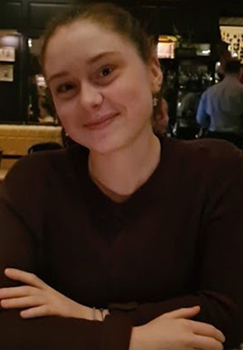
The patients on the ward had a variety of haematological malignancies and were admitted for high-dose chemotherapy, consolidation therapy, or due to complications such as fevers or graft versus host disease.
If there were concerns of infections or neutropenic sepsis, due to the immunocompromised state of these patients, antibiotics would be rapidly started and septic screens performed to identify potential sources of infection.
One of the more interesting cases was a patient with chronic myeloid leukaemia that had developed into meningeal leukaemia. The patient experienced neurological manifestations, including right-hand weakness and right-eye palsy. Treatment was therefore administered intrathecally, and I could see improvements in the patient’s symptoms over time.
I spent time with two German final-year medical students on their practical year. This is a whole-year apprenticeship in various specialities, to gain practical experience.
I was impressed that they were well integrated into the MDT. They would do blood rounds in the morning, then clerk new patients and do other jobs on the ward for the rest of the day. They were very confident with practical skills and would get to know the patients, setting them up well for starting work as a doctor.
I improved my practical skills by helping to take blood from central venous lines and ports, observing how port needles were inserted and assisting in lumbar punctures.
By taking histories, examining patients and documenting cases, I improved my medical German and gained confidence interacting with patients in German.
I also practised doing ECGs and interpreting them. I occasionally took blood cultures and measured blood gases. These activities gave me an insight into the German healthcare system and medical training.
I attended ward rounds and lunchtime tumour boards to learn more about the complicated therapy regimes that patients received. Many were involved in clinical trials, as Heidelberg is at the forefront of much exciting cancer research.
During my spare time, I explored the historic centre and university buildings of the city, as well as the medieval castle and surrounding mountains. This part of my elective was very valuable.
If I were to return, I would spend some time in clinics, labs and the haematology ICU, to get insight into different aspects of the speciality.
I could also improve my practical skills and further my interest in haematology as a speciality, as I saw many interesting cases and learned how these were treated.
The University of Malaya Medical Centre is a busy, government hospital providing a mixture of free and paid-for services.

I chose Malaysia as English is widely spoken, especially among doctors, which made it easier for me to make the most of the placement.
The population of Malaysia is extremely diverse in ethnicity and wealth, with both urban and rural populations. Furthermore, government-funded healthcare is limited, and I was interested to see how healthcare operated in such a region.
I chose haematology as I had no exposure to it in medical school and I was keen to explore the speciality further.
There were lots of different clinical opportunities on offer. I followed ward rounds and spoke to patients. I saw a petechial rash due to extreme thrombocytopenia and observed a bone marrow biopsy, which I had not seen before. I also spent time in the outpatient clinics, including the long-term follow-up of post-transplant patients.
The conditions on the haematology ward were mostly haemato-oncology cases with different types of leukaemia and lymphoma being the most prominent.
One particularly complex case was a woman who'd had a previous diagnosis of acute myeloid leukaemia. She was later admitted with a pulmonary embolism, which caused an acute deterioration in her health.
The elective broadened my horizons within medicine and exposed me to a completely new healthcare system. In Malaysia, only first-line medications are funded, and hearing doctors discuss costs with patients was novel and tricky. It was challenging to see lots of patients unable to afford the best treatments for themselves and their loved ones.
Overall, this elective was a fantastic experience, the teams were welcoming, and I was able to integrate. It allowed me to explore haematology as a medical speciality, something I would not have been able to do without this grant.
I would like to give a huge thank you to the British Society for Haematology for enabling me to go on this unique learning and culturally enriching experience.
The grant from the British Society of Haematology allowed me to learn about common haematological conditions in Thailand at Vachira Phuket Hospital.

When planning my elective, the main objective was to learn about diseases that I had not been exposed to during medical school, particularly haemoglobinopathies prevalent in Southeast Asia.
As I carried out my elective, I gained a new appreciation for haematology as a complex, multidisciplinary speciality, managing a spectrum of pathologies from mild bleeding disorders to life-threatening oncological emergencies.
My weeks were organised so that I could observe clinics, practical procedures and ward rounds. I engaged in teaching, reading, discussing literature and attending conferences.
Coming into my elective, I was most looking forward to learning about thalassemia, the most common inherited disorder in Thailand. I had the opportunity to attend thalassemia clinics weekly. I talked to patients with different forms of the disease, including the more severe forms like transfusion-dependent beta-thalassemia.
Patients discussed the implications of having, what they termed, an ‘invisible’ medical condition. Often, they had to justify to their employers why they needed time off work to receive monthly blood transfusions. The psychological distress from having to plead for time to receive transfusions was the greatest aspect of the disease burden for some patients.
Additionally, some patients struggled with compliance with their iron-chelating medication. From talking to patients, the inconvenience of taking the iron-chelating medication daily, as well as not fully comprehending the complications of acquired haemochromatosis, was a major factor driving lack of compliance. Painful joints were a common side-effect affecting the day-to-day life of patients and adding to the disease burden.
One aspect of the elective I valued was reviewing patients from presentation to the initial stages of management. Being with the patient from the start of their journey allowed me to build strong rapport and develop empathy with patients.
I became familiar with the journeys of patients with diffuse large B-cell lymphoma (DLBCL), the most common subtype of lymphoma in Thailand. When discussing DLBCL treatments with my supervisor, I learned about the effectiveness of the rituximab, cyclophosphamide, vincristine and prednisolone regimen.
However, the patients had to deal with the lifestyle impacts of being immunocompromised; many patients lived with large families or worked in agriculture or tourism, putting them at risk of infection.
I met many patients twelve months following DLBCL treatment and remission in the clinic. Most patients returned to their normal lives, demonstrating the impressive prognosis for this aggressive malignancy.
As well as attending clinics and procedures like bone marrow aspirations, I was able to attend a conference by a leading haematologist. The conference focussed on plasma exchange, a treatment that is affordable in Southeast Asia. I learned that plasmapheresis has transformed the management of thrombotic thrombocytopenic purpura, improving mortality rates considerably.
My haematology elective was an exceptional and memorable experience. I appreciate the healthcare professionals at the Vachira Phuket Hospital for providing an interesting and well-organised elective.
I am hugely grateful to the British Society for Haematology for the opportunity to undertake my elective in the Haematology Department at the Balapitiya Hospital, Sri Lanka.
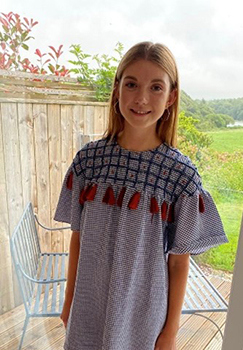
Having previously spent time in a tertiary centre in the UK, I was able to draw comparisons between practice there and a small district hospital in Sri Lanka.
During my placement I was able to observe patterns of haematological conditions in Sri Lanka and how various conditions were managed. NICE guidelines were often followed, with certain modifications based on the resources available.
The element I found most surprising was the substantial number of blood films done, due to the limited availability of other blood tests such as haematinics. Another difference to the UK was the huge number of staff on the wards and the large number of available beds.
The commonest conditions managed by haematologists were nutritional anaemias, which I was also surprised about since this is largely managed by primary care in the UK.
The commonest genetic condition in Sri Lanka is beta thalassemia. It was interesting to learn how screening programmes have been introduced in certain areas of the country.
I have an interest in paediatric haematology and I spent time on paediatric inpatient wards and outpatient haematology clinics. This provided me the opportunity to observe ward rounds which had many similarities to the UK. Both the communications between doctors and note-taking were carried out in English rather than Sinhala.
I was able to attend Ayurvedic clinics, which were eye-opening. These traditional methods of medicine are deeply integrated into the government-funded healthcare system and provide a very holistic approach.
Although I was sceptical about aspects of ayurvedic healthcare, I saw how the preventative approach including exercise, yoga, meditation and healthy diets contributed to Sri Lanka having a life expectancy greater than many neighbouring Asian countries.
Although Ayurvedic medicine is a completely separate concept from Western medicine, there are elements of the holistic care provision that have made me reflect on my future practice. With many haematological conditions being life-long, thinking about the impacts of the condition on the mind is vital going forward in my career.
Overall, this experience has taught me how varied haematology is as a speciality. I have learnt about the provision of healthcare in Sri Lanka and seen comparisons with, and differences from, the UK.
Thank you for giving me to have this opportunity.
May I take this opportunity to thank the British Society for Haematology for awarding me a Student Elective Scholarship. This prestigious award facilitated my elective at PASO Medical in Melbourne, Australia.
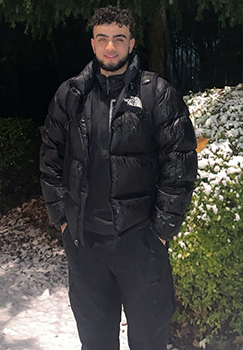
My professional journey in haematology is fuelled by a deep interest in childhood leukaemias, rooted in my personal experience of overcoming acute lymphoblastic leukaemia as a child. This unique perspective has fuelled my commitment to contributing meaningfully to haematological research and advancements in patient care.
Throughout medical school, I always believed haematology was underrepresented as a speciality, hence my desire to partake in a haematological elective.
My exposure to clinical trials had been fairly limited. With help from my supervisor, Dr Ramin Behzadigohar, I gained first-hand experience in haematological clinical trials. I believe I have developed a better understanding which will aid further research I wish to undertake.
After reflecting on personal experiences, I decided to research whether location affects the incidence of leukaemia. Surprisingly, Australia has declining rates of all types of leukaemia, in contrast to other developed countries where the rates of acute myeloid leukaemia have been increasing.
The decreases in Australia may have been partly driven by the following: reducing the exposure to environmental risk factors such as chemicals, particularly among children and pregnant women; abstaining from high-risk parental behaviours, such as cigarette smoking; and increasing the intake of folate and vitamin supplementation during the preconception period or pregnancy.
I was also interested to see why childhood acute lymphoblastic leukaemia (ALL) showed significantly better prognosis than adult ALL. It appears that induction failures, deaths in remission and bone marrow relapses increase significantly with age.
ALL patients of increasing age carry high-risk potential for genetic alterations which confer resistance to conventional chemotherapy. Furthermore, conventional chemotherapy approaches have generally yielded unsatisfactory results in older patients with ALL as a result of excessive induction mortality.
Through my six-week elective with the help of BSH, I experienced a new landscape that will undoubtedly shape my future professional development and contributions to the field.
I am grateful for this opportunity, which allowed me to achieve my aims and objectives. I look forward to continuing my work with BSH as a student representative on the Education Committee and seeing what the future holds!
My elective placement was in London. I spent six weeks in the haematology department at Hammersmith Hospital, and one week in the neurology department at the Royal London Hospital. The BSH Student Elective Scholarship supported the haematology component.

I asked my haematology elective supervisor for exposure to the range of subspecialities and the clinical academic work in the department.
I took part in a mixture of shadowing ward rounds, clerking and examining patients, attending clinics, observing and assisting with procedures such as bone marrow aspirates and trephine biopsies. I also attended the laboratory to learn how to interpret blood and bone marrow films.
Some of the clinics I attended involved patients in clinical trials for novel therapies to treat chronic (>six months), treatment-refractory immune thrombocytopenia (ITP). These therapies targeted T cells rather than B cells, as it is increasingly appreciated that a range of pathophysiologies underlie ITP, apart from the classical autoantibody-complement mediated lysis of platelets.
The BSH grant also provided funding for the Haematology highlights for the UK meeting. This two-day meeting summarised some of the current worldwide research in haematology and was very informative. For example, I learned the importance of JAK2 variant allele frequency in the prognostication of polycythaemia vera, which is rarely used in clinical practice.
Overall, this experience has strengthened my resolve to pursue haematology as a career and I am very grateful to the BSH for supporting me.
I had the opportunity to rotate with the Leukaemia service at the Memorial Sloan Kettering Cancer Center in New York. It provided several observations worthy of reflection and I hope to expand on some of these in this report.

Differences, in my opinion, are the drivers of change and growth. They make us challenge our practice, beliefs, and understanding of things.
At the individual level, we could reason that medicine—physiology, pathology, and clinical reasoning—transcends geographical boundaries and remains much the same. However, just like language and culture, there is nuanced evolution in its practice.
Pre-rounding entailed the residents and medical students checking in on all their patients before the ward rounds start at 8am with the MDT, which includes a consultant (referred to as attending), a registrar (fellow), two IMT-trainee equivalents (residents), two FY doctor equivalents (interns), a pharmacist, a social care worker, the patient’s nurse, and a medical student.
I felt that I could truly connect with my patients and build a meaningful rapport during these early hours. I also did the most learning during pre-rounding.
Over the course of my rotation, the four or five patients I followed viewed this time as the most comforting. They could relay all their concerns and ask questions of the most junior team member without worrying about taking up the time of the entire team.
Sometimes, these were complex questions about social care planning or the number of chemotherapy cycles. I could only reassure and promise to pass on the message to find an answer.
At other times, patients would mention how their pain was still not under control. Concerns could be as simple as requesting their diuretics at an earlier time or understanding their antibiotic plan, which I could easily address.
Some patients just wanted a listening ear where they would talk about how uncomfortable hospital beds were or how much they missed home food.
Medical school placements are often highly structured, to cover as much ground as possible. Our rotation time is often strictly divided between attending ward rounds or clinics, teaching and simulation sessions, and shadowing in surgeries or procedures. With considerable emphasis on exams, our learning focuses increasingly on what is seemingly ‘high-yield’. The human aspect is often overlooked, despite it being core to the true art of medicine.
Spending time with my patients, when they would be dispirited after having spiked yet another fever, delaying their discharge, or sharing the happiness that followed as they had been fever-free for more than forty-eight hours, has taught me more than I could have learned from reviewing flowsheet data.
This was one of the most profound experiences from my elective. I came to understand how knowing the patient, by spending time with them and thoroughly reviewing their history, significantly enhances the patient experience and our ability to deliver high-quality care.
During my rotation, I also came to greatly value the idea of ‘lunch and learn’. Every day at 1pm, we would have a teaching session or afternoon conference intended for the house staff (the residents). Sometimes the topics were related to theoretical clinical medicine. At others they covered subjects like public health, sustainability, or artificial intelligence.
In the midst of bustling clinical activity, tucked away in a small room with plastic cutlery and the pleasant containers that disposable plates made, focusing for an hour on the research and evidence of a particular topic provided great inspiration and allowed us to think about common problems from an expert’s perspective.
One afternoon, we heard from Dr Urvi Shah, an expert in myeloma who had a keen interest in nutrition and its impact on cancer susceptibility and outcomes. This is an underfunded and often underemphasised area of research due to the innate difficulty of carrying out research studies confounded by numerous variables and biases.
During the hour-long talk, I gained a deeper appreciation of the need to understand the ecological crises we now face if we wish to prevent the medical crises the spillover will ensure. This talk has inspired my interest and efforts in sustainability-related quality improvement projects at my local institutions.
In summary, this month-long rotation contributed to my personal and professional growth in many more areas than I could have anticipated. I hope that I will be able to remember these experiences and learnings and carry them forward as I progress in my medical journey, and that I will continue learning from the patients I will have the honour of caring for.
I am grateful to the British Haematology Society for awarding me a Student Elective Scholarship, which enabled me to undertake a three-week elective at Great Ormond Street Hospital (GOSH) in the Haematology and Oncology department.

During my elective I attended daily ward rounds, where I observed patients undergoing a variety of treatments for haematological malignancies, including acute lymphoblastic leukaemia (ALL), acute myeloid leukaemia (AML), and Burkitt's lymphoma. I reviewed patient notes and presented a summary at the weekly board round with the multidisciplinary team.
In the day case unit, I observed the process of gaining consent for chemotherapy and the administration of intrathecal methotrexate, which is a common component of treatment regimens for leukaemia.
I witnessed a bone marrow aspiration procedure, a routine practice for monitoring patient progress during treatment. It was particularly interesting to observe the preparation of slides to ensure the visibility of marrow particles under the microscope.
I also attended a teaching session for haematology senior house officers (SHOs) and registrars. This session focused on AML and highlighted the increased risk of developing AML, particularly acute megakaryoblastic leukaemia (AMKL), in children with trisomy 21.
I participated in an outpatient clinic dedicated to the long-term follow-up of patients with ALL. This clinic emphasised the long-term side effects of chemotherapy, an aspect of treatment I had not previously considered.
I learned about the significant impact of side effects on post-treatment quality of life. For instance, vincristine, commonly used in treatment, can cause neuropathy, affecting patients' mobility, exercise ability, and school performance.
These clinics are essential for providing holistic care and mitigating the risk of cardiovascular disease later in life.
Furthermore, I had the opportunity to sit in on non-malignant haematology clinics, where I encountered conditions that were either unfamiliar or entirely new to me, eg Diamond-Blackfan anaemia (DBA). This rare form of anaemia has an incidence rate of one in five hundred thousand live births and has limited research into treatment options.
Thank you again to the BSH and the oncology and haematology teams at GOSH for providing me with such an enriching and invaluable experience over these three weeks.
By undertaking a diversity of projects during my medical training, I hope to learn from academics at the forefront of translational research, equip myself with multi-disciplinary techniques and develop a broader perspective of the current research landscape.
In summer 2024 I joined the Shangaris Laboratory at King’s College London (KCL), which is developing prenatal therapy for Sickle Cell Disease (SCD).
SCD is a global health issue caused by missense mutations in the beta-globin gene, leading to the formation of sickle-shaped haemoglobin following deoxygenation. This morphological change in erythrocytes is associated with haemolytic anaemia, vaso-occlusive crises, and potentially fatal organ dysfunction.
With the incidence of SCD expected to rise above four hundred thousand births per year by 2050, improving therapeutic strategies is critical, not only to enhance patient quality of life but also to address the significant economic burden it poses.
The project was particularly exciting as it aligned with my interests in foetal development, stem cell biology, and regenerative therapies.
Targeting the haematological system is complex, involving immunological and oncologic risks, as well as specific tissue donation requirements. To address these challenges, the lab explores direct gene therapy delivery to the premature foetal liver, a rich source of proliferative progenitor cells, to enhance therapeutic efficacy and optimize immunological tolerance.
The project provided a valuable learning experience in tailoring therapies to meet the unique needs of the developing blood system.
To prepare, I immersed myself in the theory, ethics, and practicalities of gene therapy, studying the foundational work that has led to its recent clinical applications. Attending lab meetings with collaborating researchers deepened my understanding of gene editing development and the promising potential to apply gene therapy in the clinic to conditions such as epidermolysis bullosa.
These meetings also helped me develop essential research skills, particularly in presenting and promoting data.
In the lab, I encountered new techniques for microfluidic nanoparticle development, allowing me to appreciate the interdisciplinary components essential to translational research and therapeutics development.
With convenient tropism for the liver, ionizable lipid nanoparticles (LNPs) are a prominent non-viral vector candidate for novel gene therapies. I practised LNP formulation and characterization methods, including Qubit fluorometry, dynamic light scattering, and flow cytometry.
I have become more confident in the steps of optimising product development, reviewing the literature and getting advice from collaborators to assist in troubleshooting.
Visiting London exposed me to a forward-thinking research environment, where the close relationship between research and healthcare, particularly between KCL and Guy’s Hospital, is prioritised.
I appreciated learning about other projects in the Shangaris Lab, particularly those investigating immunological processes associated with placental development.
The experience has inspired me to consider further involvement in pregnancy health research, where I can work closely with patients to achieve significant outcomes.
This scholarship has allowed me to explore a major haematological pathology and gain experience in therapeutic development and biomaterials, while supporting my interests in foetal health and regenerative medicine.
I hope these experiences will guide me in leading impactful and sophisticated projects in the future.

Throughout my four-week visit, I spent time in the clinical and diagnostic departments, where I saw various diseases, observed several different procedures, and attended teaching sessions and meetings.
This was a very valuable learning experience as I was exposed to many aspects of haematology and oncology that we get little exposure to in medical school.
As an overview, some interesting conditions I saw on the wards were: diffuse large B-cell lymphoma (DLBCL); angioimmunoblastic T-cell lymphoma (AITL); suspected VEXAS syndrome; multiple myeloma; haemophilia; extra nodal NK/T-cell lymphoma; several types of leukaemia and many other conditions!
One of the most interesting conditions was Adult T-cell leukaemia/lymphoma (ATLL). This is a T-cell malignancy, which is not common in the UK but is significantly more so in Japan. The cancer is caused by a retrovirus known as HTLV-1, which is endemic in south-western Japan, and spreads through breast milk, blood, sexual contact and childbirth.
The virus has a long latency, and only 2-5% of individuals infected with HTLV-1 will develop ATLL in their lifetime. I saw some blood films of this disease where the characteristic ‘flower cells’ are present, which describe the many nuclear convolutions and lobes. This was fascinating to learn about.
Additionally, I saw several procedures take place such as lumbar punctures, bone marrow aspirations and bone marrow biopsies. It was interesting to see these happen, with doctors explaining what they were doing, why they were doing it, and the importance of it, I really learned so much.
They also taught me about haematopoietic stem cell transplantation, eg. autologous and allogeneic transplants, and also cord blood transplantation.
I had a few afternoons where I met with palliative care doctors to see how palliative care in Japan differs from the UK – in Japan it is strongly connected to the haematology and oncology departments.
We discussed attitudes to death and dying in Japan vs the UK to understand cultural differences. One of the doctors was creating an app to help simplify several aspects of palliative care in Japan, and greatly valued my insight.
It was so insightful to learn about Japanese culture in terms of the hospital, the healthcare system, and also the culture more generally – the hospital food in the canteens was amazing!
Overall, I am very grateful to the BSH for helping me fund this wonderful opportunity, as well as to the Jikei University Hospital for providing a well-organised elective. I hope to carry forward these positive experiences into clinical practice.
I chose to spend four weeks of my medical elective volunteering in Kampala, Uganda focusing on paediatric oncology at the Uganda Cancer Institute (UCI).

I participated in two projects.
The first involved auditing the pathology records for solid tumours and lymphomas processed at UCI in 2023. I reviewed paediatric oncology paper files and then created a database of information based on these files, which I coded.
Data was used to determine:
1) turnaround times in biopsy requests, and tissue sampling
2) the most common presentations in UCI in 2023
3) the degree of mismatch between final diagnosis and morphological and IHC diagnosis
4) the most common IHC stains used (to inform appropriate resource allocation)
The second project focused on the UCI tumour boards. We conducted a survey of the clinicians to determine their satisfaction with the current boards. We then conducted eight semi-structured interviews to gain further information.
We came up with recommendations for changing the referral process and presented our findings to UCI. We are currently working on a new referral/report form and re-auditing the tumour boards.
We had a very strict deadline of what to achieve each week to stay on track. The team also had to communicate well to ensure compliance with our supervisors' instructions.
The projects have made a difference to the care of children with cancer in East Africa.
Through the first project, clinicians at UCI have a much more robust understanding of which cancers are most commonly diagnosed and which are typically missed. We were able to inform their decisions on which investigations (immunohistochemistry stains) to order.
Through the tumour board project, we helped shape the pathway of referring a child to be discussed, ensuring the prioritisation of patients who would most benefit from discussion by the multidisciplinary team.
We also helped improve the efficiency of the tumour board meetings by changing time allocations, the number of patients discussed, and the format of meetings, allowing more children to be discussed. The reporting form led to greater accountability and made it easier to follow up decisions, which we hope will improve outcomes for children.
I improved my research skills significantly during the elective, particularly those in qualitative research. I have become much more confident in conducting and analysing survey results, conducting semi-structured interviews (which was a completely new skill to me!), and presenting my findings to clinicians.
I also got to spend time in clinic and the wards at UCI and have been able to learn a lot more about late-stage presentations of cancer in young children, and how cancer is managed in a low-resource setting.
Thanks to the generosity of the British Society for Haematology, I was privileged to undertake a six-week elective in the Sir Anthony Mamo Oncology Centre, at the Mater Dei Hospital in Malta.

I shadowed a fantastic team of doctors and healthcare professionals, participating in ward rounds, attending outpatient clinics, and observing MDT meetings with histopathology and microbiology consultants. I also spent time in the Day Unit, observing and assisting with bone marrow biopsies and other procedures. These experiences enhanced my clinical skills and deepened my understanding of haematological practices in a different healthcare setting.
An experience that stood out for me was attending the bone marrow transplant clinic, a collaboration between Mater Dei Hospital and a visiting consultant from the Royal Marsden in London. Since all transplants for Maltese patients are conducted in the UK, the clinic offered valuable insights into pre- and post-transplant care and the challenges patients and their families face when receiving treatment abroad.
This experience was particularly meaningful as a few weeks before my elective I had been matched as a donor for a bone-marrow transplant, through the Anthony Nolan charity. The clinic provided me with a unique perspective on the transplant process from both the patients' and donors' viewpoints.
Outside of the hospital, I had the chance to explore Malta’s rich history and culture, visiting ancient temples, catacombs, and historic churches, as well as enjoying the island’s beautiful beaches.
Overall, I had a fantastic and enriching experience during my elective, for which I am deeply appreciative to the British Society of Haematology for their support and the opportunities provided by the Student Elective Scholarship.
I would like to start by thanking the British Society for Haematology for supporting my five-week elective at the Instituto Português de Oncologia (IPO) in Lisbon. This is one of the major oncological specialist centres in Portugal.

My time in Lisbon was split between the haematology team, which looked after patients with various types of blood cancers, and the pathology department, which formed part of the backbone of the diagnostic services.
Through attending clinics, I was able to see how patients presented at different stages of their conditions, from new presentations to patients who had been in remission for years. During these clinics I experienced some of the differences between the health systems in Portugal and the UK.
Following up on some of the new patients allowed me to see fine needle aspirations, bone marrow aspirations and trephines. The pathologists who analysed the samples explained their analysis and the various features of the different diseases.
I found it particularly exciting to see many of the features under the microscope that I had been taught about in textbooks. I then saw these samples being processed in various laboratories, including cytogenetics, cytology and flow cytometry. This allowed me to better understand different diagnostic services.
When I returned to the haematology team I saw how treatment was initiated for these patients, and how complications of the treatments, such as febrile neutropenia, were managed. This was highly insightful as it was the first time I had seen patients with such complications.
Throughout my elective experience, all the doctors and staff were very supportive and keen to teach me about the various facets of haemato-oncology and pathology. I am very grateful to them.
To conclude, this was truly an exciting and informative opportunity to explore the world of haemato-oncology and pathology. I would like to thank the BSH again for supporting my elective and giving me this experience.
I am grateful to the British Society for Haematology for awarding me the Student Elective scholarship, which allowed me to spend my elective at the Royal Devon University Hospital in the Haematology Department.
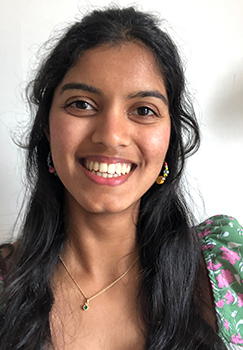
I chose this hospital as I knew that it dealt with a variety of conditions and was well suited to teaching. It is also in a financially accessible location.
I chose haematology as it is a field that interested me, but I was aware that I did not know a lot about it. I was eager to join the team and learn more about this fascinating career.
During my elective, I participated in a number of activities including ward rounds, clinics and morphology meetings.
Clinics were the perfect place to learn and I met patients with different conditions. Some appointments were follow-ups and some were first presentations. I got to take some histories but also learned a lot about communication. It was enriching to observe clinicians breaking bad news, giving information, communicating uncertainty and exploring the patients’ ideas, concerns and expectations.
I saw a range of conditions from bleeding disorders to cancers. We explored what the potential diagnosis of cancer meant, the weight the word carries and the anxiety it brings with it.
It was really useful to have one-to-ones with clinicians as they could quiz me on what my approach would be to certain presentations, and I learned a lot from it.
I attended morphology meetings where clinicians looked at blood films and bone marrows and discussed the findings. Having almost no experience with morphology, this was a huge learning curve for me. I had to learn to identify basic components and pathologies on film, like tear-drop cells or blasts.
I spent a large proportion of my time in Day Case, where patients came for their infusions. This allowed me plenty of time to take histories and learn about different conditions and treatments from the patients themselves.
Lastly, over the course of my fifth year, a colleague and I conducted an audit and were fortunate enough to have it accepted for a poster presentation at the BSH Annual Scientific Meeting.
It was the first conference I ever attended and it was great to present my poster to an enthusiastic audience. I also really enjoyed the talks, especially the ones from the Crucible Prize. I learned a lot about the impact AI might have on the future of haematology and how Brexit impacted access to medications.
To conclude, this elective was a great learning opportunity. It has taught me a lot about communication, different diseases and morphology. Additionally, I got an insight into the life of a haematologist which has inspired me to pursue this speciality as a career.
I am extremely grateful to the British Society for Haematology for the opportunity to undertake my elective in the Haematology Department at the National Hospital in Colombo, Sri Lanka.

During my placement I attended many ward rounds, where I was able to see clinical presentations you wouldn’t come across in the UK. For example, I saw a patient who had unfortunately been bitten by a snake. This led to an interesting discussion with the haematology team about the prevalence of snake bites in Sri Lanka, the haemostatic issues that can arise and what is done to manage them.
I had the opportunity to shadow clinicians in many different areas of haematology, from haem-oncology to paediatric haemophilia clinics.
During the haemophilia clinic I learnt what to consider when assessing children with haemophilia and how to clerk patients when there is a language barrier, which were valuable learning experiences.
I noticed that there are some barriers to accessing treatment in Sri Lanka due to being a low- to middle-income country. Prophylactic treatment is harder to get for all patients and is often dependent on donations.
Despite these challenges, there was still a great focus on utilising the MDT to deliver the best possible care, with physiotherapists and nurses also present in the clinic.
Throughout the three weeks, I was engaged in many interesting case-based discussions.
I found one on the epidemiology of inherited anaemias and how it varies in Europe and South Asia (hereditary spherocytosis is more common in northern Europe and thalassemias in south Asia) particularly interesting. Beta thalassemia is the most common inherited anaemia in Sri Lanka, with carrier rates very high in certain areas so it was interesting to hear about how carrier screening is used in these high-risk areas.
My elective in haematological cancer clinical trials at Peninsula and Southeast Oncology (PASO) in Melbourne was perhaps my most invaluable medical placement thus far. I recognise the privilege I had of being a part of patients’ cancer journeys, especially in the context of clinical trials.
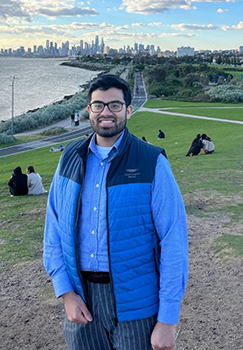
At PASO, patients are offered a variety of cancer treatments tailored to their disease and holistic needs. Whilst many patients are offered standard treatment, PASO is also one of the leading clinical trial centres in the state of Victoria.
I was able to take a history and examine patients referred by their GP with abnormal blood tests, which significantly reinforced my clinical and diagnostic skills. Following this insightful experience, I can confidently recognise and describe physical signs such as splenomegaly and lymphadenopathy.
I also entered the new world of clinical trials. I was able to observe the various pre-screening, ongoing assessments and follow-up of a phase 1a/1b clinical trial looking into the safety and efficacy of a dual inhibitor of CDK4/6 and Pim, in patients with relapsed or refractory B-cell Non-Hodgkin’s Lymphoma, CLL/SLL and AML.
This trial is designed in two parts, with dose escalation and expansion respectively, to determine the safest and most efficacious method of drug administration for patients. I now greatly appreciate the importance of evidence-based care.
Having had the opportunity to speak to patients undertaking trials, and having researched the Australian healthcare system, I was able to reflect upon the differences in healthcare between the UK and Australia.
Whilst the NHS can provide free-for-all and equitable care, several patients I spoke to during my elective were opposed to this idea and were happy to be in a partially subsidised healthcare system. Their reasons were access to faster treatment, along with the feeling of taking ownership of their health. I noticed how actively involved the vast majority of patients were in their management.
In addition, I recognised the massive commitment from patients who made time to regularly attend the study centre for ongoing monitoring of drug effectiveness and side effects.
The screening of patients before entering the study was more thorough than I could have conceived. Investigations like blood and urine tests, bone marrow/trephine biopsy, physical examination, echocardiogram/ECG and 12-weekly PET/CT scans all formed part of the pre-screening and ongoing assessment.
I also observed the exceptional skill involved in sensitively obtaining informed consent in a manner that made patients feel empowered. This is a skill I want to demonstrate as a doctor, as I feel it is very easy to adopt the classical paternalistic doctor-patient relationship, which medicine needs to shift away from.
I am extremely grateful to Dr Ramin Behzadigohar and the team at PASO for providing me with this opportunity, and I hope to take the skills and reflections I have undertaken forward into my career.
Thanks to the British Society for Haematology, I carried out a six-week elective with the haematology team at Broomfield Hospital.
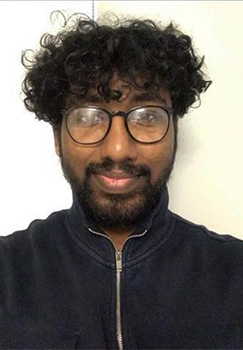
During my placement, I gained experience in pre-clinical revision, practical tasks and academic activities. This gave me a better insight into haematology than I had encountered during previous placements.
I was involved in the daily ward rounds with the MDT, where I observed how patients were seen and assessed, and their subsequent management plan.
When discussing treatments, I was regularly quizzed by the registrar on the conditions, allowing me to revise the knowledge gained during my pre-clinical years.
In addition, I improved my practical skills by carrying out histories and performing examinations on fascinating patients.
Another part of my elective was attending weekly clinics with the consultants. Here I gained exposure to a range of haematological conditions. One especially noteworthy case involved a patient with stage 4b lymphoma who made an extraordinary recovery through chemotherapy.
Sharing this difficult journey with the patient was deeply inspiring and highlighted the transformative influence this speciality can have on patients' lives.
I attended a bone marrow biopsy clinic, where patients were tested for conditions such as multiple myeloma and myelodysplastic syndrome. The nurse very kindly explained to me how the procedure worked, including the techniques involved.
I also spent some time with the day therapies team, gaining an understanding of the various medications used and the side effects to monitor for. This gave me the chance to improve my practical procedures, eg cannulation, a vital skill that I initially found challenging.
On top of this, I was able to delve into academic work. One project involved an audit focused on improving the services provided to patients with primary and secondary erythrocytosis.
I was tasked with collecting data including patients' target haematocrit levels, treatment regimens, and complications encountered. With assistance from other members of the clinical team, I was able to complete the project by the deadline and will soon present the results at a conference.
There is much more to write about: teaching sessions, journal clubs, and the multiple new conditions I encountered, such as VEXAS syndrome.
It would be unjust not to express my gratitude to Dr Pavel Kotoucek, who was kind enough to organise this elective for me, and also to the incredible haematology team at Broomfield Hospital. They created a deeply enriching and valuable learning environment, making my time here a gratifying experience.
I extend my sincere gratitude to the British Society for Haematology for its invaluable support during my undergraduate dissertation project. By offering student elective scholarships to students worldwide, the BSH makes science and medicine more accessible and inclusive.
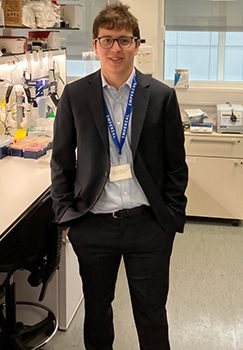
I completed my dissertation with the Mucosal Immunity and Infection group at Imperial College London's St Mary's Campus. I had the privilege of being among the last students in the prestigious and historic Medical School Building.
My project focused on modified nucleic acids in mRNA vaccines and therapeutics. Modified nucleic acids are chemically altered bases with properties different from their natural counterparts. Over one hundred and seventy nucleic acid modifications have been identified, affecting various properties of RNA, including stability, structure, and interactions with proteins. Modifications that remove the hydroxyl group from the 2'OH position of the ribose ring enhance mRNA thermostability by preventing alkali-induced transesterification. Furthermore, some modifications mask RNA from innate immune sensors, attenuating inflammatory and interferon responses.
The discovery of the N1-methyl-pseudouridine (m¹Ψ) modification, pivotal to the development of SARS-CoV-2 mRNA vaccines, earned Katalin Karikó and Drew Weissman a Nobel Prize. Clinical trials have shown that m¹Ψ-modified SARS-CoV-2 mRNA vaccines induce more potent adaptive immune responses than unmodified mRNA counterparts. This is because m¹Ψ modification attenuates innate immune recognition, achieving a balance between vaccine adjuvance and translation efficiency. Attenuating innate immune responses is even more important in mRNA-based protein replacement therapies to avoid autoimmunity and side effects. Therefore, I investigated several modified bases lacking the 2'OH group of the ribose ring to improve thermostability and translation efficiency.
However, the absence of the 2'OH group in ribose-ring-modified bases causes steric clashes in T7 RNA polymerase (T7 RNAP), hindering transcription efficiency during mRNA production and making it challenging to synthesize sufficient mRNA for in vivo studies.
Therefore, my primary aim was to recode template sequences to improve in vitro transcription (IVT) yield with modified bases for further in vitro studies. To achieve this, I developed a high-throughput scan investigating different motifs in mRNA sequences and employed several bioinformatic methods. My focus was primarily on optimizing the template for erythropoietin (EPO), which has important applications in treating renal anaemia.
Overall, the project was a great success, culminating in a first-class honors dissertation report and presentation. I thank my supervisors, Prof. Robin Shattock and Dr. Kostas Paschos, for providing this wonderful opportunity to learn more about mRNA vaccines and therapeutics.
Receiving the BSH Student Elective Scholarship allowed me to embark on an enriching elective at the Moffitt Cancer Center in Tampa, Florida. This opportunity has been invaluable in shaping my academic and professional trajectory.

During my six-week elective, I was privileged to work with the Bone Marrow Transplant and Cellular Therapy team at Moffitt, under the supervision of Dr. Sayeef Mirza, MD, MPH. Moffitt has world-leading expertise in this area, having conducted over five thousand stem cell transplants and more than one thousand CAR-T cell therapies.
This setting provided me with unparalleled exposure to cutting-edge therapeutic modalities and numerous clinical trials.
I took part in sixteen inpatient rounds, eight tumour board meetings, two grand rounds, and nearly thirty outpatient clinics.
I engaged with a diverse team of physicians, pharmacists, nurses, and advanced practice providers (APPs). I was impressed at the dedication, clinical acumen and teamwork demonstrated by all the staff I interacted with.
Prior to the elective, I had six weeks of exposure to haematology at an NHS hospital that delivers fewer bone marrow transplants and does not deliver CAR-T cell therapy. My experience in the U.S. deepened my understanding of the complex care pathways involved in haematopoietic stem cell transplantation (HSCT) and CAR-T cell therapy.
I now have a greater appreciation for graft vs host disease (GvHD), induction/maintenance regimens, and anti-microbial prophylaxis.
The scholarship enabled me to attend the American Society of Clinical Oncology (ASCO) Annual Meeting in Chicago, where I presented a poster at the medical student and resident forum. This was a significant milestone in my academic career, which allowed me to engage with haematologists and oncologists conducting clinical trials and translational research.
I found the presentation of the Lisocabtagene maraleucel (liso-cel) in patients (pt) with R/R mantle cell lymphoma (MCL): Subgroup analyses by number of prior systemic lines of therapy (LOT) and by response to prior Bruton tyrosine kinase inhibitor (BTKi) from the TRANSCEND NHL 001 MCL cohort (TRANSCEND-MCL) trial results particularly interesting, as it provided insights into the latest advancements in the use of CAR-T cell therapy in mantle cell lymphoma.
I was able to make lots of connections and strengthen prior friendships.
Being in the United States provided me with a unique perspective on the differences and similarities between the UK and US healthcare systems, particularly in the field of oncology. The experience has broadened my horizons and equipped me with a more global understanding of the practice of haematology and oncology.
Living in Tampa for six weeks was an enriching cultural experience. It allowed me to interact with patients and healthcare professionals from a diverse array of backgrounds.
I am immensely grateful for the support provided by the BSH Student Elective Scholarship. This opportunity has advanced my clinical knowledge and inspired me to pursue a career dedicated to improving outcomes for patients with cancer.
I look forward to applying the insights and skills gained from this experience to my future career and would be happy to talk further about my experiences with any interested medical students.
I am thankful to the British Society for Haematology for awarding me a Student Elective Scholarship. This funded my placement at the renowned Aga Khan University Hospital (AKUH) in Karachi with the Paediatric Palliative team (PPT). The team specialises in delivering quality-of-life care to children with life-limiting and terminal illness.

My time was split between shadowing the team led by Dr Resham, Pakistan’s first haematology-oncologist sub-specialising in palliative care, and conducting a research project with the same team to understand the experiences of parents whose children had leukaemia.
AKUH is a centre of excellence in patient care and research throughout Pakistan and the wider region. It is uniquely placed to offer high-standard holistic care to its patients and is the first in Pakistan to offer a paediatric palliative service. I wanted to take this opportunity to understand the realities of living with haematological malignancy for other families.
While shadowing I was able to see leukaemias and lymphomas of different varieties, and reflect on the unique psychosocial impact that results from haematological malignancies.
Due to the availability of novel agents and improvements in bone marrow transplantation techniques, there is often a focus on curative treatments, even in advanced disease states. This made communication about prognosis challenging, requiring the PPT to navigate a delicate balance between managing expectations and remaining hopeful.
In the daycare setting, I observed the administration of chemotherapy and procedures like bone marrow biopsies. This experience underscored the need for early integration of palliative services that can assist with the management of treatment-related side effects.
In clinics, I observed how parents, overwhelmed by the aggressive nature of treatments, can resign themselves to the belief that suffering is unavoidable, which stops them seeking support when complications arise.
Doing qualitative research on patient and family experiences of leukaemia in the Pakistani cultural context allowed me to gain a perspective on how people in collectivist societies cope. Families often pool resources and rely on a wide network of relatives and community members to manage the demands of a leukaemia diagnosis.
This communal approach not only alleviates some of the financial pressure but also provides a robust support system. It was important to consider religious practices alongside medical treatment. Facilitating this helped ease parents' anxieties and build trust.
I learned a lot during this placement, about healthcare and about the kind of doctor I want to be.
At medical school, the importance of compassion is taught to us mostly as a tool for trust and rapport building during consultations. The palliative team showed me that compassion is not a fleeting feeling to help soften the blow of bad news, but a lifelong commitment to asking yourself how to be of service to others.
I am so grateful to the BSH for allowing me such a formative experience early on in my career.
I am grateful to the British Society for Haematology for awarding me a Student Elective Scholarship. This funded a placement at the renowned Aga Khan University Hospital AKUH(N) in my home town, Nairobi. I had long admired the hospital for its commitment to patient care and innovative research.

I had not had any clinical experience in Nairobi and was looking forward to seeing the Kenyan healthcare system. During the elective, I had the privilege of working alongside esteemed medical professionals within the Departments of Haematology & Oncology and Pathology.
I attended ward rounds where I observed patients undergoing treatment for various haematological malignancies. These included acute myeloid leukaemia (AML), acute lymphoblastic lymphoma (ALL), non-Hodgkin lymphoma (NHL), multiple myeloma and myeloproliferative neoplasms (MPN). I also saw non-malignant conditions such as sickle cell disease and venous thromboembolism. I actively contributed to discussions about diagnoses, treatment plans, and patient management.
In the out-patient clinics, patients often presented late, with various clinical signs and symptoms. This enabled me to practise my history and clinical examination skills and appreciate findings such as splenomegaly and lymphadenopathy.
I attended didactic morphology sessions and bone marrow reporting sessions. I shadowed the laboratory technicians as they processed blood films and reviewed these along with the resident doctors in Clinical Pathology.
I attended interactive case-based learning sessions and lectures with postgraduate residents in the AKUH(N) programme. I also attended governance sessions such as haematology multidisciplinary meetings and mortality and morbidity meetings, which gave me insight into how clinical quality is maintained.
One of the profound impacts of the scholarship was the chance to interact with patients benefiting from healthcare subsidies and welfare programs.
The Haem-Onc Department at AKUH(N) recently launched a subsidised acute myeloid leukaemia induction chemotherapy package. This package has made treatment more accessible and affordable for patients from disadvantaged economic backgrounds and increased the number of patients getting high quality and life-changing treatment.
Interacting with these patients fostered an increased sensitivity to the unique challenges that patients face, and it reinforced the importance of delivering equitable and patient-centred care.
Lastly, the grant facilitated my participation in a clinical audit, which will influence future patient care and may form the basis of a hypothesis for future study. This project further cemented my interest in clinical research.
As I reflect on the transformative journey made possible by the scholarship, I am immensely grateful for the opportunity to take this significant step forward in my medical career.
I want to thank my supervisor Dr. Anne Mwirigi for her support, and the entire department for a memorable learning experience. I am inspired to pay this support forward by committing myself to excellence in patient care, continuous learning, and contributing meaningfully to the field of medicine.
I would like to thank the British Society for Haematology for awarding me a Student Elective Scholarship. I spent my medical elective at the University of Benin Teaching Hospital (UBTH) in Nigeria. This was an interesting experience as I got to visit my parents' country of origin.

I was intrigued to learn more about the Nigerian healthcare system and culture. I moved between different rotations including paediatrics, internal medicine, obstetrics and gynaecology, with an overlap of haematology in each rotation. I also explored Benin City.
I gained a lot of valuable communicative and hands-on experience. I saw how the doctors conducted morning reviews of their patients, on top of ward rounds and providing emergency services.
I was exposed to a wide variety of clinical presentations prevalent in Nigeria, such as malaria and sickle cell anaemia.
I will be carrying forward these positive experiences into my clinical practice. This experience allowed me to witness the positive aspects and the current challenges facing Nigeria.
Thanks to the British Society for Haematology’s Student Elective Scholarship, I was able to complete a haematology-based elective in Sri Lanka. I spent the elective in Elpitiya Base Government Hospital, with weekly Ayurveda clinics in the local village.

My hospital placement was spent in paediatrics, obstetrics & gynaecology. It allowed me to see a vast range of haematological conditions, along with their presentation and management.
I have a personal interest in obstetric haematology and my current university research project is in this field. I was especially keen to see how post-partum haemorrhages were managed.
I was surprised to find NICE guidelines and BSL algorithms peppered throughout the wards. The similarities to UK hospitals extended to how ward round notes were written. These similarities make sense, given the history of British rule in Sri Lanka. Of course, there were differences, eg the recommended use of a sandbag as an alternative to bimanual compression of the uterus during a postpartum haemorrhage.
I particularly enjoyed attending the Ayurveda clinics. This traditional practice of medicine is very popular in Sri Lanka. It focuses on the mind, body and soul and their interactions and imbalances within diseases.
The clinics were run by a female doctor every week and were attended by many locals. Most patients were given a form of oil for their symptoms. Although I was sceptical at first, it was undeniable that many patients returned for more herbal medicine due to the relief of their symptoms.
I particularly enjoyed the practice of pulse-reading diagnosis, which split people into vata, pitta or kapha pulses. As intrigued medical students, many of us had our pulses read and were shocked at their medical accuracy.
The whole experience of these clinics reminded me of the importance of treating a patient holistically, suggesting non-pharmacological interventions such as meditation and breath-work, and believing in the power of something that is not fully understood.
This medical elective has been the trip of a lifetime. I extend my deepest gratitude for the opportunity provided by the British Society for Haematology.
The British Society for Haematology Student Elective Scholarship has been a great benefit as it gave me the opportunity to carry out my medical elective in Bangkok, Thailand. I have learnt a great deal from the one month I spent attending placement at King Chulalongkorn Memorial Hospital on my haematology rotation.

One of the biggest differences I noted in Bangkok compared to the UK was that which was expected of the medical students.
In the UK, we have skills and competencies we are expected to complete, but this is all under supervision. Medical students are limited in what they are permitted to do. At Chulalongkorn, the medical students were encouraged to run their own clinics and perform minor procedures.
My day began with a debrief among the haematology doctors in the microscope room, which involved an hour of studying slides down a microscope and discussing what the specimens showed. I had never been given the chance to use a microscope before, and it was an enlightening experience to learn what each of the dials did, how to focus on an image, etc.
I had only ever seen cells on a computer screen before and it was interesting to learn how to diagnose different blood cancers using a microscope.
The doctors were all very kind, taking me under their wing during the ward rounds and happy to explain anything I was confused about.
Many of the patients we visited on ward rounds were critically unwell, having been moved to the intensive care unit (ICU). This meant that I didn’t get the opportunity to speak to many of them. Regardless, my placements in the UK hadn’t given me much chance to attend the ICU and my elective allowed me to familiarise myself with this crucial part of the hospital.
To conclude, this elective was a truly exciting and novel opportunity to experience healthcare in a country with a different culture and customs. I am extremely grateful to the BSH for providing me with the funding to carry out this medical elective abroad.
With the help of the British Society for Haematology's Student Elective Scholarship I was able to carry out an elective in haematology at the Mater Misericordiae University Hospital (the Mater) in Dublin, Ireland.

I was interested in experiencing a different country’s healthcare system, while exploring a speciality I had an interest in, but little experience of.
My elective consisted of a variety of interesting clinical activities in which I took part directly. I was an involved member of the team in daily ward rounds. I assisted in carrying out bone marrow trephines and sat in on specialist haematology clinics. These events greatly expanded my clinical knowledge.
The most memorable experience of my elective was during my time in the hospital's haematology lab. I was able to view slides created from the bone marrow trephines of patients I had seen. From this I could see the physical diagnosis, which the patients would ultimately receive.
The haematology registrar was also very kind in taking me through interesting cases he had collected. I was allowed to explore the slides to enhance my use of the microscope, as well as working on differentiating between normal and abnormal variants of haematological disease from Neutropenia to Diffuse Large B-cell lymphoma (DLBCL).
The team I was with in the Mater were very accommodating and fantastic to work with and learn from. I received teaching at all times and during every aspect of daily clinical life, from all levels of medical staff.
Alongside my clinical experience, this scholarship allowed me to experience a different city. Dublin is a very vibrant and busy city. I spent time exploring local parks, pubs and tourist attractions. Special highlights were taking walks down the Grand Canal on sunny days and eating New York style pizza from Bambino.
I would like to again thank the staff of the haematology department at the Mater for their time and effort in accommodating me. I would also like the thank the British Society for Haematology for awarding me this scholarship.
Due to the support of the British Society for Haematology, I was able to expand my horizons about haematology and the challenges haematologists face.

I joined the Newcastle haematology team at the Freeman Hospital and the Royal Victoria Infirmary for four weeks. These have a strong focus on stem cell transplants. It was very interesting to see the wide range of patients and new trials taking place.
Newcastle is a larger centre than where I am based. I was able to see more than eight allogeneic transplant patients, with conditions such as sickle cell disease. I was also introduced to CAR T-cell therapy.
By speaking to current F1s and F2s I realised that haematology is something not many medical students experience. I think this has set me up perfectly to appreciate how to manage complex patients. Hearing about patients' struggles in dealing with their chronic diseases highlighted to me the importance of holistic care.
As part of the team, I joined ward rounds and clinics. I saw patients with lymphoma and myeloproliferative disorders, as well as pre and post-stem cell transplant cases. I discovered how varied the job can be as it includes apheresis, lab work, bone marrow biopsies and matched unrelated donor meetings.
One thing that stands out was accompanying a registrar to do a bone marrow biopsy on a patient and then taking this straight to the lab for diagnosis.
The satisfaction of being able to do a lot of the processes was really appealing. I had the opportunity to undertake a QI project alongside a peer, exploring senior house officers' confidence in managing CAR-T/bone marrow transplant (BMT) patients.
I was also privileged to attend some paediatric clinics and ward rounds; this is something few medical students get to do, especially as there are only 11 paediatric stem cell transplant centres in the UK. This opened my eyes to other areas of haematology.
It was interesting to see the similarities and differences in the stem cell transplant clinics between adults and paediatrics. Not only the different chemotherapies and immunosuppressant medications but also how different patients cope and their management strategies.
One consultation that stood out to me was a six-month post-transplant young boy. He was desperate to go back to school but was unable to do so due to graft-versus-host disease, requiring an increase in his immunosuppressant medication.
Following a ward round, a consultant said that if you don’t have a breakdown as a registrar on inpatient haematology then you probably aren’t right for the job. It shows me the responsibility and the hardships that I might face in the future but also the privilege of playing a role in our patients’ lives.
I am extremely grateful to the BSH for the opportunity given to me by the grant. I'm also grateful to the haematology teams at the Freeman Hospital and Royal Victoria Infirmary as this is an experience I will never forget.
I’m so grateful for the grant from the British Society for Haematology, which enabled me to have a career-shaping four weeks at Great Ormond Street Hospital (GOSH).

One of the places I saw haematology at play was in transplant medicine. It was amazing to see ventricle assist devices in use as the bridge between severe heart failure and transplant.
I saw the seriousness of needing accurate anticoagulation and haematology input when parents were counselled about the risk of clot formation and the potential for subsequent embolic events whilst waiting for a transplant.
Furthermore, I got to think about ABO and human leukocyte antigen compatibility when the clinical nurse specialists made decisions about accepting each organ offer. Interestingly, recent research done at GOSH has shown that ABO matching may be less crucial for children under two, depending on their concentration of ABO antibodies.
I enjoyed sitting in on benign haematological clinics and seeing conditions I’ve not seen before such as haemophilia. I also enjoyed seeing scientific advancements in haematology such as CAR T-cell therapy making such a difference to patients.
It was fascinating to see bone marrow biopsies being performed and then going into the lab to see the cells under the microscope.
I was privileged to be able to hear the stories of patients with acute lymphoblastic leukaemia (ALL) and how they coped with the highs and lows of the journey.
When I saw ALL diagnoses being given it was a reminder of how foreign most of the language we use in medicine is to people. It struck me that not only are we doing that for the adults in the room but also for the child. Part of delivering diagnoses is explaining some of our jargon to parents and relating this to their children.
If not planned, timed and executed well, the first understanding of leukaemia and cancer a child can have is from observing the understandably emotional reaction of their parents. I can’t imagine how scary that must be for the child, something worth considering when I may deliver bad news in the future.
The most poignant takeaway I have from this placement is how powerful hope is. Medicine, or rather treatment for illness, offers a sometimes imperfect and incomplete version of hope but it is one of the best parts of being a doctor.
Being able to tell a family that there is treatment, or even better that treatment has worked, is the biggest privilege of the job. I loved seeing patients who had been treated in their early childhood and who were now 16/17 and going to university.
On the contrary, when you have to deliver the worst news and remove all sense of hope it is beyond devastating, especially with children. I feel fortunate to have had these experiences so early on in my career to see medicine in its entirety.
I would again like to thank the BSH for enabling this elective experience!
I would like to thank the British Society for Haematology for their generous scholarship that enabled me to spend four weeks with the Haematology and Haemato-oncology department at the Mater Dei Hospital in Malta.

This is the largest tertiary teaching hospital on the island, with the most extensive haematology ward. The Sir Anthony Mamo Centre sees the vast majority of routine referrals as well as emergency presentations for general haematology and haemato-oncology.
The placement has given me extensive outpatient clinic exposure, providing an insight into both the acute and chronic presentations in haematology and their management in the inpatient and outpatient settings.
With its unique demographics, Malta has a comparatively high proportion of patients with thalassaemias (especially beta-thalassaemia).
Malta has also been of great interest to immunologists, with, interestingly, one of the highest incidences of leucocyte adhesion deficiency in the world. I was given the opportunity to attend the annual immunology clinic and witness how closely haematologists and immunologists work together in managing complex cases of primary immunodeficiency.
It was an incredible opportunity to learn more about conditions such as common variable immunodeficiency, the secondary complications that arise and rare causes of agammaglobulinemia. I also observed discussions about navigating the care of patients with potentially novel variants (American College of Medical Genetics class variants of unspecified significance) in immunologically significant loci.
The Maltese healthcare system works in close association with the NHS. Much of the genetic profiling and sequencing of haematological malignancies is conducted at Great Ormond Street Hospital, and bone marrow transplants often take place at the Royal Marsden Hospital.
One of the key learning points I have taken away from this placement is the expanding role of genetics and genomics in informing treatment and predicting prognosis. Indeed, haematology as a speciality has always been in the vanguard.
The discovery of the t(9;22)(q34;q11) BCR-ABL proto-oncogene translocation in chronic myeloid leukaemia in 1982 paved the way for the use of Imatinib (and now second and third-generation tyrosine kinase inhibitors). This dramatically increased the overall survival of BCR-ABL positive chronic myeloid leukaemia and acute lymphoblastic leukaemia.
With advances in exome and genome sequencing, it is possible to sequence malignancies in a clinically useful timeframe, allowing its use as a diagnostic profiling test. It also provides important information about the cancer genetics that can inform responsiveness to chemotherapy or biological therapy regimens.
I am grateful for this placement, for introducing me to the expanding role of genetics and genomics in haematology and the wider speciality of oncology.
To further this interest, I have become involved in a project with the Clinical Genetics Team at Great Ormond Street Hospital. I am in the process of conducting a review bringing together the haematology and genetics exposure I have seen during my elective placement.
It has been a privilege to be welcomed by the fantastic Haematology department at the Mater Dei Hospital, I am forever grateful for their guidance and support.
I would like to thank the British Society for Haematology for this grant, which allowed me to undertake a six-week elective.

During my elective, I worked alongside Dr Busuttil and the haematology team at Mater Dei Hospital in Malta. It is the main hospital for the island, so I saw the full range of haematological care, from informing patients of falsely reported normal full blood count results to seeing lymphoma patients undergo palliative chemotherapy.
While I spent most of my time on the intensive haematology ward or in general haematology clinics, I gained exposure to two new areas of haematology.
Firstly, I sat in bone marrow transplant clinics with Dr Ethell from the Royal Marsden.
Malta does not provide transplants locally but has an agreement for their patients to be treated for free in the UK. This created some practical problems for these patients, who would often arrive at appointments with a long list of questions.
Consultations often involved much more than explaining the process of a bone marrow transplant. Questions included: issues with passports and planes; who, when and how their families could visit; and even differences in laws and Covid-19 restrictions.
Secondly, I had the opportunity to undertake bone marrow biopsies and lumbar punctures for intrathecal chemotherapy administration. These are skills I had rarely seen during my studies but had the chance to focus on during this extended placement.
I would like to thank my supervisor Dr Busuttil for his support and the rest of the haematology team at Mater Dei Hospital for making my elective period one to remember.
I was fortunate enough to be supported by the British Society for Haematology for an elective in haematology at King’s College Hospital (KCH), London.

The Haematology department at KCH is large and varied. It is a national centre for haemophilia and thrombosis, the largest UK centre for sickle cell disease and bone marrow transplants, and one of the largest CAR-T centres in Europe.
This elective offered me an invaluable experience, at the start of my career, to learn more about the working life of haematologists and their patients.
I spent time with each of the main haematology teams at KCH (myeloid, lymphoid, CAR-T and transplant). I visited the wards as well as attending clinics. The long placement time allowed me to follow patients through their stay and treatments.
I enjoyed seeing in-person treatments I had only read about. It was quite amazing to observe a patient receive their 68ml of CAR-T cells that had travelled the world after a ~£150,000 production process.
I also visited some of the diagnostic and research labs, as I wanted to experience the laboratory as well as the clinical aspects of work as a haematologist.
Visually diagnosing myeloid disorders or confirming remission through a microscope was a satisfying process. It allows haematologists to maintain expertise over the whole patient journey. It also benefits patients through improved continuity of care, another strength of haematology I observed through years of consultants treating the same patients.
I felt privileged to observe clinics led by world experts in their specialities, with patients travelling from all over the UK to hear their advice.
I saw some wonderful aspects of the job, including long-term relationships with patients, the breadth and depth of the staff's medical knowledge and research-led practice. I also experienced a few challenges, most notably breaking bad news – particularly when treatments fail and few options remain.
Seeing the consequences of potentially lifesaving treatments was eye-opening, particularly regarding the neurotoxicity of CAR-T that left several patients in the intensive care unit for weeks.
The need for improved treatments with fewer side effects and further options after disease recurrence was evident. Equally evident was the commitment of the department to research, with a highly active clinical trials unit and staff keen to recruit patients to trials where they might benefit.
In a year where many medical students’ elective plans were scuppered, I was very grateful to have been hosted by this excellent department and supported by the BSH. This experience has greatly benefitted my understanding of haematology as a speciality and career. It remains my plan for the future.
This grant supported me in carrying out an eight-week medical elective with the Haematology department at the Aberdeen Royal Infirmary in Scotland.

The scholarship provided me with an excellent opportunity to build upon the pre-existing knowledge I gained in my pre-clinical years. I gained experience in the many nuances of haematology, a speciality I have long been interested in but have had limited exposure to during my time as a medical student.
I was able to attend several ward rounds on the haematology ward. Not only did this provide an insight into the many acute ways that patients can become haematologically unwell, but it facilitated my growth as a medical student as I was encouraged to talk to and examine patients with clinically interesting histories and signs, respectively.
I also attended many haematology outpatient clinics with a variety of consultants dealing with general haematology, malignant haematology and haemostasis. It expanded my knowledge of haematology immensely and provided me with much greater insight into the different conditions that haematologists contend with.
In addition, I was also able to attend the local blood transfusion service centre for a morning. Here I met a patient undergoing a peripheral stem cell collection. I was given a tour of the centre and received some teaching from the haematology consultant there.
I also spent time in the haematology lab, on two separate occasions, with a consultant and a registrar. It gave me a new appreciation of the processes of analysing blood films.
These activities are not something I would have been able to gain exposure to during any other part of my medical school journey, so it was a real bonus having the opportunity to do so during my elective.
My elective was not exclusively clinical. I carried out a project focusing on the outcomes of smouldering myeloma patients. It enabled me to become much more proficient in concepts such as progression-free survival, overall survival and Kaplan-Meier graphs. Not only did it help me grow as a holistic clinician and allow me to become more comfortable with these concepts routinely utilised in haematology, but it also allowed me to give something back to the department by helping them carry out that research.
Unfortunately, a summary is not enough to do this elective justice as I also attended registrar teaching, ward teaching, pathology meetings, multi-disciplinary team meetings, shadowed the on-call registrar and even spent an afternoon in the Royal Aberdeen Children’s Hospital speaking to some acute lymphoblastic leukaemia patients there.
Nevertheless, I have immensely enjoyed and benefited from having carried out this haematology elective. I am extremely grateful for the support the BSH provided. It has encouraged me to view haematology in a completely new light, and I eagerly await my next opportunity to partake in haematology again.
Due to the generous contribution of the British Society for Haematology, I was able to compare the work of haematologists in the highly-specialised department of Oxford Healthcare Trust with the relatively resource-poor and politically-complicated setting of the Augusta Victoria and Makassed hospitals, Jerusalem, two hospitals serving the Palestinian community of the West Bank.
In Oxford, I worked with Dr Ramasamy's team on a project looking at bone health in myeloma. It gave me insight into how the multidisciplinary team work together to produce research and inform evidence-based medicine.
They spent time to enable me to understand the different processes involved in data collection, clinical practice and writing. I saw how haematology treatments are developing (particularly for multiple myeloma) so that disease is increasingly controlled, and long term management of symptoms is required.
The Augusta Victoria, I suspect, provided a truly unique experience as it is a specialist oncology and haematology centre serving a community fraught with political complications. Whilst it has many resources not available in truly developing countries, monetary restrictions limit the care available.
The patients travel from all over Palestine. However, movement is restricted by the borders and checkpoints separating their land from Israel.
The week before I arrived, no patients had been allowed to travel from Gaza due to the recent bombings. When they reached the hospital, their situation had progressed, and often, the given diagnosis was incorrect.
Patients in need of bone marrow transplants required transfer to the local Israeli hospital, Hadassah. However, this is also barred by the government, so two patients who had been worked up and prepared for bone marrow transplant had to have their expectations managed and treatment altered to fit the limitations of the medications available in the Augusta Victoria.
The doctors and nurses do an excellent job managing the situation presented to them daily, dealing with relative shortages in staffing, facilities and medication.
Further, what made it so unique was the excellent tuition of Doctor Morabito, an Italian haematologist heading the department for a year. He is helping develop the haematology service and will hopefully get a bone marrow transplant service in place by the end of 2019.
He tutored me in diagnostic techniques, the interpretation of blood films, spectroscopy, and much, much more! So whilst I learnt huge amounts about their life and medical practice from the friendly staff welcoming me wherever I went, I also saw haematology in practice.
Makassed is a general medical hospital and more representative of the facilities available to the Palestinian population. Whereas the Augusta Victoria manages to provide a clean, quiet and generally effective hospital service, Makassed is busy, often dirty, and frantic. The staff did not hold back in telling me about problems they face.
Again, the staff were friendly, and spending a day in endocrine, rheumatology and neurology clinics allowed me to see a massive range of disease presentations.
It was an informative and rewarding elective which allowed me to explore a beautiful country, learn about the political situation and explore many aspects of medicine.
I feel committed to helping medical services in Palestine in the future and have enrolled in Arabic lessons.
Firstly, I would like to thank the British Society for Haematology for generously funding my elective.

I spent my elective period at UCL Cancer Institute under the supervision of Dr Marc Mansour and Dr Simon Richardson. The Mansour laboratory has extensively studied the mechanisms of leukaemogenesis. And novel therapies in T-cell acute lymphoblastic leukaemia and acute myeloid leukaemia.
I was involved in a project investigating PRDM16 as a putative oncogenic driver of normal karyotype acute myeloid leukaemia (NK-AML). Cytogenetic analyses are currently used to stratify AML patients into different prognostic groups. However, in 40-50% of AML cases, no chromosomal abnormality is visible by conventional karyotyping.
Molecular analyses have recently identified several recurrent, distinct mutations in NK-AML patients. These include activating mutations such as internal tandem duplications of the receptor tyrosine kinase FLT3 gene (FLT3-ITD), point mutations of the RAS protooncogenes, mutations altering genes encoding transcription factors (AML1, CEBPA), and mutations interfering with tumour suppressor pathways such as NPM1.
Identification of these mutations can provide insight into the mechanisms that promote and maintain NK-AML. And not only aids risk stratification in this cytogenetically heterogenous group but also guides therapeutic decisions.
PRDM16 is a zinc finger transcription factor and also encodes for histone methyltransferases that maintain heterochromatin integrity. It plays a critical role in the regulation of hematopoietic stem cells and is, therefore, a prime candidate for leukaemogenesis.
High PRDM16 expression is a significant predictive marker for poor prognosis in paediatric and adult AML patients and correlates with other known mutations in adult AML. Furthermore, it is preferentially overexpressed in NK-AML.
I completed an ongoing screening of NK-AML patient samples for PRDM16 expression as part of the project. It involved preparing RNA from the biobank, making cDNA libraries, and performing quantitative PCRs, which allowed for the identification of monoallelic cases and differentiation between short and long isoform expression. This work allowed us to investigate the correlation between PRDM16 expression and clinical outcomes, particularly disease relapse.
In addition, to elucidate the mechanism of PRDM16, I helped to characterise 2 AML cell lines – 1 PRDM16+ NPM1 WT and 1 NPM1+ – by performing Western blot analysis for PRDM16 on nuclear, cytoplasmic, and whole-cell extracts. I also performed shRNA knock-down experiments in both cell lines and assessed PRDM16 expression and cell viability. Finally, I was able to commence making an NPM1 knock-in cell line using CRISPR-Cas9 genome editing techniques.
This elective gave me the opportunity to spend time with both clinicians and scientists, allowing me to gain insight into the current challenges and questions asked in malignant haematology and the molecular biology strategies available to answer them.
Furthermore, I was able to build on skills from my PhD in an entirely new field. Overall, my elective most certainly did meet and exceed expectations.
I would like to express my sincere gratitude to Dr Marc Mansour and Dr Simon Richardson for their supervision and support and to the rest of the Mansour lab for allowing my elective period to be thoroughly enjoyable and memorable.
Firstly, I would like to thank the British Society for Haematology for the scholarship they have awarded me. It allowed me to visit the country of Sri Lanka and meet patients suffering from serious diseases and their families. This experience will certainly change the way I practise medicine in the future.
 Had it not been for this bursary, I would not have had the opportunity to study in Sri Lanka, and therefore I could not be more grateful. I studied in the southern state of Sri Lanka, in Galle, splitting my time between Karapitiya teaching hospital and various community clinics and medical facilities, allowing me to fully experience a completely different healthcare system.
Had it not been for this bursary, I would not have had the opportunity to study in Sri Lanka, and therefore I could not be more grateful. I studied in the southern state of Sri Lanka, in Galle, splitting my time between Karapitiya teaching hospital and various community clinics and medical facilities, allowing me to fully experience a completely different healthcare system.
I chose to do this report on haematological malignancies in Sri Lanka. After some initial research, I found that after accidental death, haematological malignancy is the second most common cause of death in the entire country, making it an important public health concern for Sri Lanka.
Furthermore, although Sri Lanka has some public funding for healthcare, there are limited resources, which makes charity assistance a necessity, particularly with regard to patient support. However, in the southern province of the island, there is very little charity support for paediatric patients suffering from leukaemia. The northern province has its own charity, so I was intrigued to speak to patients and their families and find out their personal experiences.
I first spent two weeks with paediatric hospital inpatients, going on the oncological specialist ward rounds that visited the unit and then speaking to the families of the patients on the ward.
It struck me how much of a role the parents play in the wards here. It is essential for there to be a family member with every patient, and they are much more intricately involved in the patient care than we see in Great Britain. The parents would be with the child all day during their stay on the wards. Ensuring their needs were met and acting as the responsible adult for each child.
A lot of the treatment for leukaemia is carried out as a hospital inpatient in Sri Lanka. Therefore, the child will spend a great deal of time in hospital. As mentioned, the parents are vital in the child's care and, therefore, it is a great difficulty for the whole family to be caring for the child whilst in hospital.
I learned that there is a large paediatric haematological malignancy unit in the country's capital of Colombo. That means that for patients who live outside of one of the large cities, families may need to travel to one such facility and spend a long time there caring for the child, with relatively little charitable support compared with what we experience in Great Britain.
Furthermore, the time spent on the wards really helped develop my scientific understanding of haematological malignancies, and their chemotherapeutic treatments, in the paediatric population, which is something I have never had much experience with before. It was invaluable for my learning. I now understand what these patients truly go through on a day-to-day basis which is so important to see first-hand to fully appreciate the immensity of it.
I spent the following two weeks on community medicine posts, which focused on serious paediatric conditions, prioritising haematological malignancies. Here, my focus was much more on the family experience of the disease and the treatment and care they received. The thing that struck me most about this period of study was the difficulty experienced by parents if they are worried that their child may be showing signs of illness.
There are no publicly-funded GPs. Instead, children receive basic health checks whilst at school. Doctors visit larger schools at grades 1, 4, 7 and 11, giving the children vaccinations and an overview health check.
However, even in these situations, it would be difficult to pick up signs of a haematological malignancy unless the child verbally discussed any complaints themselves.
Other than the school checks, the only ways a parent can get their child seen would be to pay for a private general practitioner - which many patients do not have access to. Or to queue up at the hospital from the early hours and hope to see a general paediatrician who can examine the child thoroughly.
However, it can take hours to be seen by a doctor in this way. Arriving at the hospital at 9 am, the corridors would already be filled with patients and families hoping to be seen by a doctor. Other than the access to care, most families reported feeling incredibly lucky to be treated at such an amazing facility and had nothing but praise for the care they had received.
This elective has truly changed my future in medicine.
It has taught me not only a great deal about the scientific and medical intricacies of treating haematological malignancies in paediatrics. But it has also truly opened my eyes to a healthcare system that has such a core role for the patient's family. And I feel very lucky to have witnessed this first hand.
Thank you to the BSH for giving me this opportunity and helping to shape my future career.
Firstly, I would like to say a tremendous thank you to the British Society for Haematology for awarding me a Student Elective Scholarship, without which my elective would not have been possible.

For my elective, I travelled to Seoul National University Hospital (SNUH) in South Korea to undertake a placement in paediatric haematology, a speciality in which I have been interested throughout my time at medical school.
As one of South Korea's leading tertiary hospitals with a 300-bed children's hospital, SNUH was an attractive location for me to gain a breadth of experience in both specialist and core haematology.
During my placement, I was supervised by Professor Kang Hyoung Jin, who has a specialist interest in the development of novel treatments for refractory leukaemia. I integrated into his team and attended handover, ward rounds and clinics, weekly radiology meetings, pathology meetings and journal clubs.
I was also given the opportunity to attend clinics for benign haematology. I was able to learn about the clinical trials they were undertaking and the process that this entails, both administratively and clinically.
During my elective, I completed two literature review projects that I presented at departmental meetings. The first review was centred on the key genetic mutations in acute myeloid leukaemia, their effect on prognosis and potential for targeted therapies. The second review concentrated on key haematological tumour antigens and related immunotherapies. It was a very useful opportunity for me to read about certain areas of malignant haematology in depth, allowing me to gain a good overview of promising future directions in these fields.
With South Korea being so culturally and socially different from the UK, I had to adapt to difficult communication and differing patient expectations.
The approach to offering investigations and discussing disease with patients was also very different from my previous experiences, with a focus on explaining pathology in detail. It was interesting to see how this changed patient experience of healthcare.
I was able to appreciate the remarkable work ethic and time management skills of the clinical team, from attending to over fifty patients in a single ward round to seeing patients in clinic with a turnover of five minutes.
I experienced challenging and educational medicine while learning how to holistically manage complex and very unwell paediatric patients.
Paediatric oncology with interest in haematology at the Royal Hospital for Children in Glasgow was a four-week venture into the Schiehallion ward.
Under the supervision of Dr Ronghe, I was able to diversify my learning between the three specialities that share the ward: oncology, haematology and transplant medicine.
Partaking in ward rounds and clinics of these three specialities and visits to the lab and apheresis unit at Gartnaval Hospital, I was able to see a vast amount in four weeks.
In addition, I completed two projects: the first was an audit of paediatric neuroblastoma patients. To complement this, a spreadsheet program to provide dates for a treatment plan for paediatric patients with neuroblastoma.
The core outcomes of my elective were to learn how paediatric medicine differs from adult medicine and contribute to the field by completing an audit. During completion of these educational outcomes, I would learn through exposure to different scenarios how a paediatric doctor fulfils his duty of care to his patients. Observing the interplay of various health professionals would, in turn, add to my growing understanding of what it means to be a health professional.
My supervisor, paediatric consultant Dr Ronghe, listened to my goals and ensured I could access the right people and facilities to achieve them.
He introduced me to consultant haematologist, Dr Kenneth Douglas, who explained the challenges of treating paediatric neuroblastoma. It became my audit subject.
Treatment is guided by the SIOPEN trial, which dictates whether the patient receives the N7 or COJEC chemotherapy. Peripheral blood stem cell (PBSC) transplant is a critical component in the treatment of neuroblastoma patients, as this ensures adequate populations of progenitor blood stem cells remain in the patient's bone marrow.
These cells are collected after chemotherapy once the bone marrow has had a chance to recover. However, the limited success of PBSC collections is thought to be contributed to by the design of the trial. My audit, therefore, centred on gathering data on which mobilising chemotherapy achieved the most successful PBSC collections.
In addition to my audit project, another doctor provided me with a brief on a second project. He stated a need for a program that effectively planned each stage of the treatment protocol for the SIOPEN trial. What resulted was a program that required one date for starting chemotherapy.
The code was such that an alteration in any of the dates - for example, a delayed chemotherapy treatment due to line sepsis - would result in the rescheduling of all other dates to the new timetable. In this way, a plan was available to both the healthcare team and the patient's parents.
I was proud of the final product, as when I took on the project, I was not confident in using Excel to this end. I used my initiative and, at the same time, gained an understanding of trial design that will benefit me in interpreting the complex details of some trials.
Delving into this audit, I developed my understanding of a new area of oncology. Neuroblastoma is an example of the malignancy of embryonic stem cells. I understand now why blastoma type cancers are prevalent in children and how they are treated differently. This linked to the necessity of PBSC transplants in the treatment protocol.
Learning about PBSC transplants provided a link between oncology and haematology, my special interest. Autologous transplants are different to allogeneic transplants as the aim is to encourage regrowth of the patient's native immune cells, in contrast to using the graft vs host effect to attack cancer cells.
Transplant and oncology specialities work together efficiently, and communication is aided by sharing the same ward. MDTs are held daily, and care is highly-coordinated. I noted, in particular, how tightly care was coordinated. And how this translated into benefit for the patient and their family. Parents were kept so well informed; in essence, the doctor-parent relationship was the basis for a greater trust placed on the doctor than I had seen before.
The weight of responsibility on the doctors was intense. Occasionally, the doctors' room was a place for consolation following conversations on dolorous topics with parents. The doctor must inform the patient's carers in such a way as to allow them to make decisions that may result in the death of their child. The parent places trust in the doctor's knowledge, their opinion, and in the speciality as a whole.
It was humbling to have even a minor role in the care of any patient. The privilege of treating any sick patient is an understanding I never want to lose hold of in my career. Taking responsibility for the care of a human in the most vulnerable period of their life is a humbling experience.
The weight of the responsibility can be shared among the team members. Everyone in a team has a different background and views, but in Schiehallion, I saw them brought together by their duty of care for their patients. The strength of a team comes from the safety they feel in their job. The confidence to make decisions does not come entirely from knowledge and experience but from the assurance received from being part of a dependable and cohesive team.
Ideally, I would have liked to have completed my paediatric block before my elective. It would have given me a greater appreciation of just how different a paediatric speciality is, compared to adult medicine.
I feel the most enjoyable aspect of an elective is the freedom to explore the areas you are passionate about without the restrictions placed on you to complete cases and coursework.
I am a student who works best with minimal guidance, and the audit work and Excel program I designed were examples of my best work. I had a task and a deadline. I planned as best as I could and got the job done.
The confidence I have gained from looking back at my work and seeing that I have made a difference - seeing what I can do when I grasp opportunities - will be something I wholeheartedly take forward in my fast-approaching professional life.
As part of my PhD, I focused on the role of a subset of natural killer (NK) cells - CD56bright NK cells - following IL-2 therapy. The elective period was principally spent learning new techniques and applying them in the context of a new scientific area of interest - the role of NK cell exhaustion in melanoma - in a collaborative laboratory environment.

It enabled me to explore further a field of interest (cancer immunotherapy) whilst also giving me more laboratory experience in a different system and a greater understanding of the translation of therapies from bench to bedside.
The Bhardwaj Research Laboratory has extensively studied the tumour microenvironment in melanoma to understand whether the cellular dysfunction seen in T cells is also present in natural killer (NK) cells.
In particular, these studies have focused on the immunoregulatory protein T cell immunoglobulin and mucin-domain containing molecule 3 (Tim3), a mediator of exhaustion in T cells, understanding its role in NK cells and whether exhaustion of this cell subset contributes to disease progression. These cells reduce their cytokine secretion in the context of melanoma, and this project was to further investigate the profile of such putatively exhausted cells.
I also had the opportunity to spend time with clinicians and others in the translational pathway to more fully understand how these treatments were moving from bench to bedside and to observe their effects on patients.
The sheer speed of development of new therapeutics and the very impressive remission rates using such drugs is remarkable. The effects on patients are extremely dramatic, both in terms of life-lengthening and quality of life.
In addition, I was able to spend time becoming familiar with new forms of personalised medicine, for example, the use of tissue biopsy. And humanised mouse models of tumour growth to characterise the genetics and test therapies or particular drugs in the context of their specific disease.
At present, the model is not fast enough to impact directly upon the individual patient's care, but in the future, the use of such techniques may revolutionise cancer care.
This elective gave me a fantastic opportunity to develop my PhD skills and knowledge in a new area.
Already having some skills developed in those years helped enormously, as I was able to immediately perform a number of experiments and pick up other techniques quickly. Working in a different environment from my PhD was also helpful to really understand how various laboratories engage with the science, and the different research regulatory and academic environment was interesting to experience.
Overall, my elective most certainly did meet and exceed expectations. I am delighted to have gained a poster from the research period. I was made extremely welcome in the laboratory, and overall, it must be said, that New York City is a great place for both academic and social collaboration.
I would like to express my sincere gratitude to the British Society for Haematology; the University of Cambridge Clinical School (Hawkins Award); Queens' College, Cambridge; the Royal College of Physicians; the British Medical and Dental Students' Trust and the Gilchrist Trust for funding this amazing opportunity. And to Elena Gonzalez-Gugel and Nina Bhardwaj for their supervision, support, and for making this possible.
Firstly, I would like to thank the British Society for Haematology for sponsoring this period of elective study.
I carried out my elective in the state of Kerala, tucked away in the southwestern corner of India. I chose Kerala as my elective location as it is the place of my parents' origin, and from previous visits to India, it is somewhere I can identify with culturally.
I was intrigued by the 'Kerala model' of development, which has seen the state achieve the best living conditions in India. With only 3% of India's population, this diminutive state excels in indicators of social development such as low levels of infant mortality and population growth; the highest levels of literacy in the country, particularly among females; and higher life expectancy relative to the whole Indian population.
These statistics are even more impressive considering such indicators are comparable to many developed countries despite Kerala's per capita income being much lower. I wanted to explore the basis for the state's impressive health standards and compare it to the UK's National Health Service.
Unfortunately, Kerala is reported to have the highest number of cancer patients in the country. I wanted to study whether cancer care was proficient in Kerala, so I decided to visit the Regional Cancer Centre (RCC) in the state capital, Thiruvananthapuram.
The RCC is an autonomous scientific institution sponsored jointly by the government of Kerala and the government of India, which prides itself on being an internationally recognised centre providing state-of-the-art care.
I also had a specific interest in haematological malignancies and was allocated to observation in the Medical Oncology department. I was expected to attend the morning ward round, where the majority of patients were diagnosed with acute myeloid leukaemia (AML), acute lymphoblastic leukaemia (ALL) or non-Hodgkin lymphoma. Just as in the UK, all three are present in the top twenty types of cancer.
The ward looked barren, the only cooling was from ceiling fans, and there were no curtains between patients' beds.
The ward round consisted of a senior resident and a nurse working in a pair, reviewing the female and male bays, during which time each of the three consultants would pop in at various periods to check on their patients.
The senior resident would check any outstanding blood results, palpate for any new lymphadenopathy, look inside the mouth for fungal infection, and auscultate the chest for signs of respiratory disease.
Once the rounds were completed, I was afforded the opportunity to observe patients receiving lumbar punctures and administration of intrathecal methotrexate as part of their chemotherapy regimen. The residents were amicable and keen to explain the intricacies of the various chemotherapy protocols.
I was briefed about routine investigations such as blood tests and what important parameters to look out for. I was able to observe how diagnostic methods were being employed in the laboratory. Bone marrow studies helped identify possible chromosomal translocations, and flow cytometry classified various cell populations that were used to identify types of leukaemia.
I was also shown newer techniques required in the identification of the Philadelphia chromosome, such as fluorescence in situ hybridisation (FISH) and spectral karyotyping (SKY).
During the afternoons, I was expected to attend outpatient clinics. These were undoubtedly the highlight of my trip. The outpatients' department consisted of two consulting rooms with a room dedicated to procedures adjacent to them.
The rooms were swelteringly hot, and there were no facilities for cooling. Each room was smaller than a standard NHS consulting room, and personnel were split, with consultants being in one room seeing follow-up patients and junior doctors in the other clerking in new patients. There would always be three doctors in each tiny room working simultaneously and up to 10 people in a room, including patients, nurses and relatives.
I was overwhelmed by the turnover of patients within the department; one could argue it is up to three times as efficient as an NHS outpatient clinic despite a complete disregard for patient confidentiality.
On my first day, I was handed a pile of new patient notes and asked to call in patients to be clerked while being supervised by one of the postgraduate doctors. I found it extremely challenging to clerk patients in my native language, Malayalam. Even though I was reasonably fluent in conversing with the local population, asking questions or explaining complicated medical concepts was a struggle. Fortunately, my supervisors often came to my rescue.
There are vast differences in practice between the UK and India regarding communication from caregivers. I was present when bad news was broken to a patient about a cancer diagnosis in what seemed like an insensitive manner, without the classical 'warning shot' we are taught at medical school. The patient felt understandably devastated and, being the breadwinner from a modest farming family, was fearful about the cost of treatment. Fortunately, at RCC, cancer treatment is subsidised by the Indian government, with more funding available for those on a lower income.
There has been much discussion over the role of Ayurveda in cancer treatment. It is an ancient Indian system of medicine involving therapies based on complex herbal compounds, prayer, meditation and nutritional supplements as a means of healing from cancer.
According to Cancer Research UK, there is no scientific evidence to prove Ayurveda can treat cancer. Experts at RCC I spoke to corroborated this conclusion and further went on to mention how some patients try alternative treatments first due to their perception of the financial burden a cancer diagnosis may create, which then fail, resulting in patients presenting late, at a stage when their disease cannot be cured.
Overall, I enjoyed my trip to Kerala. The weather was fantastic, the people were a joy to work with, and the food was delicious and cheap!
I was exposed to a wide variety of clinical presentations, and I was able to gain a lot of valuable hands-on experience.
Being thrown into the deep end by being asked to communicate in a different language, and diagnose and work out appropriate treatment strategies, proved to be an important character-building experience. I will definitely be carrying forward these positive experiences into my clinical practice.
Sebnem Uysal Ates, Paediatric Special Interest Group Annual Symposium
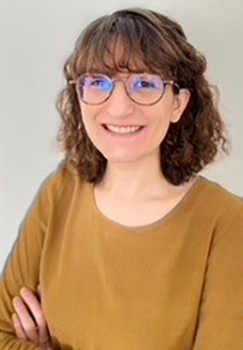
I am a haematology trainee in North East England with a paediatric background and a special interest in paediatric haematology.
The Paediatric SIG Annual Symposium provides updates on various topics each year. 2025 included CAR-T cell therapies. These are my main interest and the symposium gave me a great insight into recent updates and ongoing trials.
It was especially helpful to learn about the updates and challenges in AML CAR-T cell therapies and research.
The gene therapy section explained the logic and process of this new promising therapy. The importance of selecting patients correctly was highlighted. The area of whole genome sequencing was explained very clearly.
The immune thrombocytopenic purpura (ITP) session clarified the patient groups who would need treatment regardless of their platelet count.
The meeting helped us meet with colleagues who have gone through paediatric haematology training together.
I was fortunate enough to receive a Trainee Educational Bursary to attend the Paediatric Special Interest Group meeting in London. This coincided with my paediatric rotation.

It is not always possible to attend these sorts of meetings due to the cost of travel, but it was made possible by this grant. The teaching on the day helped cement some of the knowledge learnt on the rotation and gave a fascinating view into up-to-date developments in the field.
I really enjoyed the day and appreciate the funding that helped me attend this meeting.
I found the new acute myeloid leukaemia therapies -cord transplant and granulocytes - very interesting. The advantage of cord transplant is ease of stem cell collection, which is less likely to cause graft versus host disease.
I am an adult haematology trainee in the East Midlands deanery. I would like to thank the British Society for Haematology for funding me to attend the BSH Paediatric Haematology Study Day held in January 2023.
Adult haematology trainees get little exposure to paediatric haematology in our routine training. This study day was extremely useful in understanding current practice and advances.
It was great to hear about the UK studies. I was particularly interested in CAR-T in acute lymphoblastic leukaemia (ALL). The speaker spoke about CAR-T in relapsed settings. It is currently licenced in the UK to treat patients up to 25 years old with refractory B cell ALL, in relapse post-transplant or in second or later relapse.
Another interesting topic was anticoagulation in paediatrics, which has been a challenge for many years due to a lack of randomised control trials for the use of direct oral anticoagulants (DOAC)s.
Dr Rob Wynn presented a brilliant lecture on cord blood transplants, and the protocols and advantages of using it. It is rarely done nowadays. Dr Wynn presented his centre's data, which was very promising.
The talks on whole genome sequencing and its importance were discussed in great detail.
The latest advances in sickle cell disease treatment were excellently explained by Dr Subarna Chakravorty.
I gained insights from ASH 2022, including updates and exciting evidence of gene therapy.
I really want to thank the BSH team for awarding me a BSH Trainee Educational Bursary. I attended the 2023 BSH internal medicine training (IMT) Day in London in October 2023.
It was a well organised programme for IMT trainees planning their career in haematology.
I had the opportunity to meet many new IMT doctors, haematology researchers, trainees and consultants from different hospitals across the UK. We were able to exchange our experiences and share our knowledge and thoughts. I must say it was a great networking opportunity.
I really liked the comprehensive way lectures were delivered and the group discussions were amazing. These discussions and lectures were really motivating towards the haematology specialty training pathway.
In conclusion – I must say the BSH IMT day 2023 was an amazing learning and networking time and should be attended by IMT doctors who are planning for haematology specialty training.
I would like to thank the BSH for awarding me a Trainee Educational Bursary.

I enjoyed my experience attending the ST3 Induction Day at the University of London on 1 July. It was a well organised induction program for new haematology ST3 trainees.
During the day, I had the opportunity to meet many new haematology trainees and consultants from different hospitals across the UK. We were able to exchange our experiences and share our knowledge and thoughts.
Many different haematologists delivered interesting topics on the induction day. I really enjoyed the morphology session, which gave me hands-on experience of operating a microscope. I also got the chance to review many blood films.
I personally feel that transfusion and haemostasis are difficult subspecialities in haematology. I am pleased that the lectures broadened my knowledge and reminded me of the importance of transfusion and haemostasis in our daily clinical practice.
Furthermore, the Essential Survival Skills lecture opened my eyes and gave me a broader knowledge of handling issues during the on-calls.
In conclusion, this was a focused and helpful induction for the new haematology trainee, with many interesting lectures and practical sessions. Once again, I am very grateful to the BSH for giving me the opportunity to attend the induction day.
Travel Scholarships
Deadline for general travel scholarships: 31 January and 31 July.
ASH and EHA Travel Scholarship deadlines vary by year.
I am most grateful to the British Society for Haematology for awarding me a General Travel scholarship, which allowed me to attend the AACR Special Conference in Cancer Research: DNA Methylation, Clonal Haematopoiesis and Cancer in San Diego, California, US.

The four-day conference celebrated twenty-five years of research and brought together established researchers, who initiated work in the field decades ago, and scientists who are new to it, but doing incredible research with the latest technologies and the knowledge available.
I was invited to present a poster at the conference and give a ten-minute talk about our work at the Rasmussen laboratory. It focused on study models, the development of high-throughput tools such as pooled CRISPR-based screens, and the use of these tools to assess and understand how cancer therapies drive the expansion of mutated haematopoietic stem and progenitor cells (HSPCs), which could lead to therapy-related neoplasms.
Using high-throughput CRISPR screens, we discovered that the selective EZH2 inhibitor EPZ-6438 drives the expansion of preleukaemic hematopoietic stem cells with mutation in Asxl1[1].
Discussions generated after the talk and during the poster session allowed me to assess the interest in our study and provided ideas for further work.
In addition to presenting our work, I heard more about basic and translational research in the field and learnt first-hand about the work each internationally renowned scientist does.
Connections made during this conference will help me in deciding the next steps in my career as a researcher and may open the door for some exciting collaborations down the line.
One of the most interesting talks was given by Prof. Kathrine Y. King. Whilst the link between clonal haematopoiesis, myeloid neoplasms, coronary heart disease and atherosclerosis is well-established, Prof. King established that the two most commonly mutated genes in clonal haematopoiesis have an opposing effect on the development of Alzheimer’s disease (AD). While Tet2 provided protection against AD, loss of Dnmt3a caused accelerated development of the disease [2].
Overall, the conference was a great experience to have as a final-year biomedical science PhD student wanting to work in the field of haemato-oncology and translational research. I am grateful to the BSH for selecting me for the General Travel scholarship and the opportunity to attend the conference.
References:
1. Budriunaite, I., Crawley, P. E., Knatko, E. V., & Rasmussen, K. D. (2025). Abstract PR007: High-throughput CRISPR screens uncover selective EZH2 inhibitor EPZ-6438 driving expansion of preleukemic hematopoietic stem cell with mutation in Asxl1. Cancer Research, 85(3_Supplement), PR007. https://doi.org/10.1158/1538-7445.DNAMETHYLATION-PR007
2. King, K. Y. (2025). Abstract IA017: Dnmt3a and Tet2-driven clonal hematopoiesis have opposing effects on the pathogenesis of Alzheimer's disease. Cancer Research, 85 (3_Supplement), IA 017. https://doi.org/10.1158/1538-7445.DNAMETHYLATION-IA017
Kate Orf, MRC Clinical Research Training Fellow, UCL
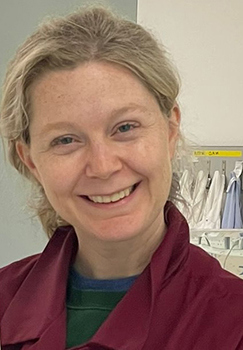
I am very grateful to BSH for supporting my attendance at the Keystone Symposia for Precision Genetic Engineering in Killarney, Ireland.
The award allowed me to present my PhD work on gene editing in immunodeficiencies, and meet other PhD researchers and world leaders in the field.
The conference was fantastic.
Many leaders in industry who are transitioning their therapies to patients were involved.
Hearing from them about commercial and regulatory challenges helped me strategise ways to bring my PhD research to patients.
I particularly enjoyed hearing about in vivo gene editing, where I believe the field is heading, from many researchers and industry leaders including Tessera, Jennifer Adair and Pietro Genovese.
The discussion around equality in accessing genetic engineering led by Jen Adair was also thought-provoking.
The new collaborations established will benefit my research which is aimed at transitioning gene editing therapies from the lab to the clinic.
First and foremost, I would like to thank the British Society for Haematology for supporting my attendance at the 18th International Congress on Myelodysplastic Syndromes (MDS 2025).

As a physician–scientist whose research focuses on MDS and CMML, it was an invaluable opportunity to attend a conference dedicated entirely to MDS, rather than encompassing the full range of haematological diseases. This allowed for an exceptionally focused and up-to-date scientific programme.
At the conference, I presented our work in the form of a poster, which was selected for guided poster viewing. The presentation summarised findings from our North-West England CMML cohort, along with validation analyses in two international collaborative cohorts.
The meeting also offered a platform to reconnect with colleagues from across the MDS research community. I had the pleasure of meeting collaborators and friends from across the UK, France, Italy, Spain, the US, Canada, and Germany, and was fortunate to establish several new connections that may lead to future collaborations.
Among the highlights, I was particularly struck by the keynote delivered by Professor Matteo Della Porta, who addressed the integration of clinical and genomic data through AI-based approaches.
While I was impressed by the potential of these models, I noted that approximately 10% of cases remained unexplained by his algorithms, highlighting the need for continued optimisation in this field. Moreover, we are still some way from the true implementation of these models in clinical practice.
From a more translational research perspective, one of the most impressive talks was given by Dr Daniel T. Starczynowski, who presented compelling evidence that age-related gut barrier dysfunction permits microbial metabolites (notably ADP-heptose, produced by gram-negative bacteria) to enter the bloodstream and drive the expansion of pre-leukaemic haematopoietic stem cells.
This was a powerful example of mechanistic research that draws together multiple lines of investigation into a coherent and impactful narrative.
Overall, MDS 2025 was a highly productive and inspiring conference. I returned energised to continue ongoing projects, explore new ideas, and contribute more actively to scientific communities and working groups in the field. I am sincerely grateful to the BSH for enabling early-career researchers like myself to attend such meaningful and formative meetings.
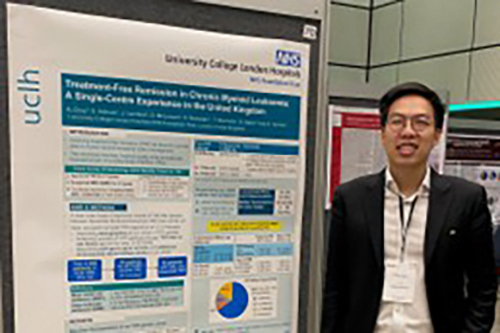
I am extremely grateful to the BSH for supporting my attendance at the 26th Annual John Goldman Conference on Chronic Myeloid Leukaemia (CML): Biology and Therapy in Prague, the Czech Republic. The conference was a well-organised three-day event bringing together leading international CML experts.
Through the General Travel Scholarship, I had the opportunity to present a poster: Treatment-Free Remission in CML: A Single-Centre Experience in the United Kingdom.
The poster presented real-world retrospective data on CML patients who attempted treatment cessation. We reported the success rate of treatment-free remission (TFR) and described cancer-associated gene variants in our patient cohort. I was able to discuss my work with other clinicians from across the globe, which inspired further ideas for my project to carry out in the near future.
The programme had many presentations covering predictive biomarkers, genomics in CML and recent clinical trial updates.
My knowledge of CML definitely expanded by hearing about the latest clinical and scientific research updates. The programme also sparked my motivation and interest to be involved in research as a clinician, when the chance arises.
The session that I found the most engaging was a debate on Frontline Asciminib Therapy. It consisted of two talks on the arguments for and against first-line asciminib for CML, putting cost as an issue aside.
The session went through the primary results from the recent ASC4FIRST trial. This was the first study to compare asciminib to current standard-of-care tyrosine kinase inhibitors (TKIs) in the frontline setting[1]. It showed statistically significant superior efficacy, toxicity profile and tolerability compared to current standard-of-care TKIs. This could potentially translate to improved candidacy and success rates of TFR as well as better quality of life in CML patients.
Arguments against it include higher rates of resistance mutations observed in the asciminib arm and the need for longer follow-up data for long-term safety.
Overall, this experience has been invaluable to a haematologist early in his career. It allowed me to immerse myself in the field of CML and be inspired by the works of other clinicians and scientists in the field. Again, I would like to thank BSH for this excellent opportunity to travel abroad to learn from this great conference!
Reference:
1. Hughes TP, Hochhaus A, Takahashi N, Issa GC, Larson RA, Bombaci F, Wang J, Kim DW, Kim DD, Mayer J, Goh YT, ASC4FIRST, a pivotal phase 3 study of asciminib (ASC) vs investigator-selected tyrosine kinase inhibitors (IS TKIs) in newly diagnosed patients (pts) with chronic myeloid leukemia (CML): Primary results. Journal of Clinical Oncology, Vol 42, Number 17, suppl. https://doi.org/10.1200/JCO.2024.42.17_suppl.LBA6500
I am most grateful to the British Society for Haematology for their award of a travel scholarship. This enabled me to attend the 21st International Myeloma Society Annual Meeting in Rio de Janeiro, Brazil.

The experience provided fascinating insights and an unparalleled opportunity to learn from, and network with, colleagues from across the world.
I presented my poster Evolving disease in smouldering myeloma (SMM) is accompanied by serial change in immune marrow composition.
Using data from our observational study in smouldering myeloma, COSMOS, we observed different patterns of change in NK cell subsets associated with biochemical evolution, with a significant increase in the proportion of NKT cells, but no alterations in NK CD56high cells, seen in those with evolving disease. These different immune trajectories could help identify cases at risk of progression for possible early intervention.
There were numerous interesting presentations during the meeting.
Personal highlights included OA-22 from the MMRF group who reported their initial scRNAseq analysis of the CD138- immune microenvironmental compartment of NDMM patients enrolled in the CoMMpass trial.
Examining early progressors and non-early progressors, those with earlier progression exhibited a shift towards a more immunosenescent late-activated Tcell phenotype, interestingly similar to that being described in the progression between SMM and NDMM (Foster et al. 2024, and OA-42) suggesting that this accelerated immune ageing may play a role in outcomes as well as in disease progression.
Combining subcluster abundance across a range of cell types they were able to generate an immune signature which when combined with classical and cytogenetic risk factors increased predictive power for poor outcome (AUC increase from 0.73 to 0.96).
This helps highlight the increasingly recognised importance of the tumour immune microenvironment in myeloma. It may help to risk stratify patients clinically if similar findings can be seen with more accessible assays. (OA-19 showed data that flow-determined marrow immune features are seen to be the most predictive feature of early MRD-negative responses in the UKMRA RADAR study).
From a clinical perspective there were presentations on the use of anti-CD38 containing quadruplets for induction treatment of transplant ineligible (or transplant deferred) patients.
IMROZ compared IsaVRd with VRd and CEPHEUS compared DaraVRd with VRd. Both show convincing superiority in depth of response and PFS with a quadruplet regimen with generally acceptable toxicity profile accepting the longer treatment exposure.
It is encouraging to see continued improvement in the treatment options for non-transplant eligible patients. However, the median age was only 70 and 72 years with restriction to ECOG PS 0-2 and/or frailty score 0-1 meaning that only a limited proportion of the truly NTE population is represented.
There were, of course, many other interesting presentations and an ongoing focus on immunotherapy which continues to progress at pace in the field of myeloma. Once again, I would like to sincerely thank the BSH for this valued opportunity.
I am extremely grateful to the BSH for supporting my participation at the Wnt Meeting 2024 through the award of a Travel Scholarship. The meeting took place in Heidelberg, Germany.
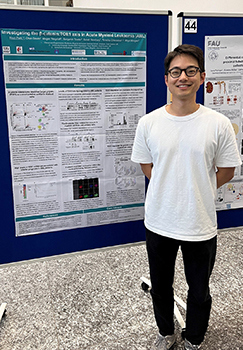
This meeting runs annually and attracts attendance by leading scientists working on various aspects of Wnt signalling, which have critical roles in both normal embryonic development and adult tissue homeostasis.
It was an amazing experience to listen to talks describing the latest unpublished research in Wnt and demonstrating the broad implications of aberrant Wnt signalling in human disease.
I was particularly intrigued by the talk delivered by Dr. Lauren Albrecht from the University of California, Irvine, who provided novel insights related to a new degradation tag, arginine methylation, which can trigger protein degradation via lysosomal machinery within the Wnt pathway (https://albrecht-lab.com/the-research/).
I was also able to present work from my PhD: Investigating the β-catenin:TOE1 axis in acute myeloid leukaemia (AML) during the poster session. This contributes to the Morgan Laboratory‘s (University of Sussex) broader aims of understanding and characterising the context dependent protein-protein interactions implicated in β-catenin mediated leukaemogenesis.
We hope that a better understanding of this protein network may be leveraged for therapeutic purposes in acute myeloid leukaemia, where there is an urgent and unmet clinical need for more effective and kinder treatment options.
The poster session provided an excellent opportunity to engage in thought provoking discussions with experts within the Wnt field, and I was grateful for the invaluable feedback and guidance I received. It was also a great chance to network and build a foundation for potential future collaborations.
Overall, I have returned to the laboratory with renewed enthusiasm and ideas to develop my project further. Many thanks to the BSH for making this trip possible.

I am extremely grateful for the BSH travel scholarship, which allowed me to attend the XIXth International Symposium on Amyloidosis (AL) held in Rochester, Minnesota, USA.
This four-day conference is held every two years and is a great opportunity to learn from experts in the field. It was a wonderful platform to present our UK data on novel PET imaging techniques as well as the impact of ethnicity on biomarkers.
It was useful to share ideas and build networks with cardiologists, nephrologists and neurologists as well as haematologists. The discussions were of particular interest and the sessions on proposed progression criteria for AL were a topic of engaging debate.
I would highly recommend this amazing grant to others.
I used the General Travel Scholarship to attend the annual International Society of Thrombosis and Haemostasis (ISTH) conference in Bangkok, Thailand. The conference is attended by thousands from around the world and covers a vast array of topics related to thrombosis and haemostasis.
I presented my own research at this conference on the effectiveness of dual anti-platelet therapies on reperfusion of the coronary microcirculation following ischaemia reperfusion injury in mice. This was well received, and I was asked a lot of thought-provoking questions, including some that have led to further research ideas for my work.
Raymond Adilil of Bloodworks in the United States suggested I add ADAMTS13 as a treatment to my mouse model to determine whether the microvascular thrombosis I see is due to Von Willebrand Factor.
I predominantly attended sessions related to ischaemia reperfusion injury in the heart, neutrophil extracellular traps and blood coagulation and lysis in sepsis, which are my current research interests.
The plenary delivered by John Weisel on fibrinogen was fantastic.
A talk by Bastian Just on the effect of neutrophils on thrombus growth during sepsis was particularly interesting. This work demonstrated that neutrophils play an important role in propagating blood thrombus growth in sepsis patients, where they increase thrombus volume and are involved in platelet recruitment to the thrombus.
He showed that platelets and neutrophil interactions could be inhibited by blocking PSGL-1. These insights will be useful and important for my future work on sepsis induced thrombosis. This work is from the Schulze lab in Würzburg and has not been published yet.
Another talk that I found useful for my research was on the GPVI inhibitor glenzocimab, currently unpublished. The talk was delivered by Charlotte Fauth from Pierre Mangin’s lab in Strasbourg. It demonstrated that GPVI had the ability to destabilise thrombi already formed in vivo in a mouse model of thrombosis.
This study has given me the idea to try glenzocimab in my research to determine if it can destabilise the microvascular thrombi we observe in the murine cardiac microcirculation following ischaemia reperfusion injury, as the other antiplatelets we have tried have not been completely successful.
Overall, this conference provided a valuable learning experience, where I could access cutting-edge research into thrombosis and haemostasis. I presented my work and answered questions about my research which was useful for my development and will also help with future research on the project.
Finally, I was given the opportunity to network with the leading scientists in the field where I made some useful new contacts for my career.
I am very grateful to the British Society for Haematology for awarding me a Travel Scholarship to attend Wnt 2024 in Heidelberg, Germany.

Attending this meeting allowed me to present my work as a poster entitled Characterising the β-catenin: LIN28B interaction in human haematopoiesis. During the poster sessions, I interacted with many junior Wnt researchers and became familiar with many other areas of Wnt signalling.
It was very useful to speak with Professor Marian Waterman about my work in the poster session and to discuss LIN28B impact on Wnt signalling. She also gave me some critical feedback about the future steps of the project.
Furthermore, I learned about a new pipeline called Increased Capture of Enrichment By Exhaustive Replicate aGgregation (ICEBERG) presented by Anna Nordin from the Cantù Lab. This pipeline improves the genomic binding events by combining multiple CUT&RUN replicates for a specific transcription factor. The pipeline also helps distinguish the signal between false positives and false negatives[1].
Overall, the BSH travel scholarship has helped me to participate in the Wnt 2024. I have returned with many ideas to progress my research project on LIN28B and β-catenin association and their relationship impact on normal haematopoietic development.
Reference
1. Anna Nordin, Pierfrancesco Pagella, Gianluca Zambanini, Claudio Cantù, Exhaustive identification of genome-wide binding events of transcriptional regulators, Nucleic Acids Research, Volume 52, Issue 7, 24 April 2024, Page e40, https://doi.org/10.1093/nar/gkae180
I would like to thank the British Society for Haematology for their support of a Travel Scholarship. The grant allowed me to present at and attend the International Society for Experimental Hematology’s (ISEH) Annual Scientific Meeting in New York City.

ISEH attracts internationally renowned scientists, working across basic and translational research on haematopoiesis and malignant haematology, to their Annual Scientific Meeting. Alongside a well-organised and varied scientific programme there was an emphasis on trainee support and mentoring, making it an ideal meeting for early-stage researchers.
I was able to present work from my PhD entitled Understanding immunotherapy failure in CNS leukaemia, insights from a murine model of infant ALL at one of the meeting’s poster sessions. I also took part in a pre-meeting new investigator workshop, where I gained valuable, individual feedback on the work I presented from a panel of experts. We discussed ways to develop the project further. The broad range of perspectives I gained on this work was extremely motivating and has allowed me to refine a research proposal I hope to gain funding for.
There were excellent networking events for junior researchers to discuss scientific careers and collaborations, which included a meet-the-experts session using a ‘speed dating’ concept. The opportunities to gain career perspectives and advice from highly successful researchers in haematology, from a wide range of backgrounds, are rare, which made this one of the standout events of the meeting.
One scientific highlight was a presentation by Daniel Tavakol from Columbia University, who discussed applying bioengineering approaches and ‘organ-on-a-chip’ platforms to generate patient-specific bone marrow models, using induced pluripotent stem cells and a decellularised bone scaffold. This type of model system has the potential to be a very useful tool, especially for those studying the contribution of the microenvironment to normal haematopoiesis, malignant transformation, and therapy resistance.
Overall, this experience, which was facilitated through the generosity of a BSH Travel Scholarship, allowed me to develop my ongoing research projects, gain thoughtful career advice and immerse myself in cutting-edge research.
I am extremely grateful to the British Society for Haematology for supporting my attendance at the International Society for Thrombosis and Hemostasis Conference in Montreal.

I had the privilege of presenting two posters that showcased research conducted at Imperial College, London.
The first poster presented the results of a retrospective study on the use of therapeutic subcutaneous unfractionated heparin for the treatment of venous thromboembolism in patients with renal failure. This work has now been published in Seminars in Thrombosis and Hemostasis.
The second poster focused on acquired von Willebrand disorder (vWD) in patients with myeloproliferative disorders (MPN) and thrombocytosis. Data was collected from a cohort at Hammersmith Hospital, London and provided insights into clinical and laboratory features of patients with extreme thrombocytosis. These individuals are at risk of developing thrombosis and bleeding due to acquired vWD.
This is a fascinating pathology. It is not completely understood and is often difficult to manage and, therefore, of great clinical and scientific interest.
I attended several lectures and particularly enjoyed the sessions on gene therapy (the focus of my PhD) and women’s health, a topic I am passionate about.
Here are some standout moments from the lectures I attended:
- In the haemophilia basic science sessions, the University of Bonn's German team delved into captivating research on intracellular trafficking of full-length FVIII versus B-domain deleted FVIII.
- The haemophilia gene therapy sessions for haemophilia A provided updates from the GENEr8-1 and SPK-8011 trials. There was also a comprehensive overview of the World Federation of Hemophilia gene therapy registry by Professor Barbara Konkle.
- The SSC women's health session, particularly Dr Rohan D'Souza's lecture, offered keen insights into understanding the decision-making process for anticoagulation choices in pregnant patients with mechanical heart valves.
In between lectures, I had the opportunity to network with clinicians and scientists from across the globe. One standout moment was connecting with the Hemostasis and Thrombosis Research Society, a North American scientific community committed to advancing research, mentoring, networking, and medical education in haemostasis and thrombosis.
I am eagerly looking forward to converting these connections into enduring scientific collaborations.
As a clinician and an early career researcher, this experience expanded my knowledge, forged valuable connections and ignited fresh inspiration for my future endeavours.
References:
1. Al-Rifai, R. et al. B-Domain - Deleted Factor VIII shows clear differences in intracellular processing and cellular responses when compared to full length Factor VIII. International Society for Thrombosis and Hemostasis; Montreal, Canada 2023.
2. Bhatia, K., Shehata, N., D'Souza, R. - Anaesthetic considerations and anticoagulation in pregnant patients with mechanical heart valves. BJA Educ. 2022;22(7):273-81.
3. George, L. A., Monahan, P. E., Eyster, M. E., Sullivan, S. K., Ragni, M. V., Croteau, S. E. et al. Multiyear Factor VIII Expression after AAV Gene Transfer for Hemophilia A. New England Journal of Medicine. 2021; 385(21): 1961-73.
4. Ozelo, M. C., Mahlangu, J., Pasi, K. J., Giermasz, A., Leavitt, A. D., Laffan, M. et al. Valoctocogene Roxaparvovec Gene Therapy for Hemophilia A. New England Journal of Medicine, 2022;386(11):1013-25.
I am very grateful to the British Society for Haematology for awarding me a Travel Scholarship to attend the annual Wnt signalling meeting in Awaji, Japan.

Participation at this meeting allowed me, and my group members, to showcase our very latest research relating to Wnt/β-catenin signalling and acute myeloid leukaemia (AML).
During the poster sessions, PhD students Okan Sevim and Samuel Olaitan presented their work entitled Investigating the role of β-catenin in post-transcriptional regulation in acute myeloid leukaemia and Mining the Wnt signalling Responsive Surfaceome for Novel Drug Targets in Acute Myeloid Leukaemia.
Furthermore, in the Wnt signalling in Cancer session, the group’s research fellow Dr Megan Wagstaff presented her PhD study Crosstalk between β-catenin and WT1 activity in AML.
Both sessions allowed the group to receive critical feedback on our research, whilst also obtaining invaluable advice from world-leading Wnt researchers on how to develop and progress our findings.
As a relatively junior investigator in the field of Wnt signalling, I enjoyed the unparalleled opportunity to exchange conceptual and experimental advice from established leaders in the field. I also received many offers of reagents, techniques, and guidance on experiments we should undertake.
In particular, I learned about a new technique called ‘CUT&RUN’ from Dr Claudio Cantù of Linköping University, Sweden, which we now intend to deploy for investigating shared gene targets of WT1 and β-catenin in normal haematopoietic stem cells and AML stem cells[1].
It was also very useful to speak with Professor Tobias Madl following his talk on the structural studies of Wnt signalling about intrinsically disordered regions (IDR) in peptides and how this might affect molecular interactions in the cell[2]. We are keen to try some experimental approaches for β-catenin which contains IDRs and examine how this affects binding to its molecular partners in leukaemia cells.
In summary, the BSH travel scholarship has been essential in allowing me to attend the Wnt 2022 meeting. I and the wider group have returned with renewed motivation and conceptual/experimental ideas to progress our existing research projects.
The new collaborations and resources acquired will benefit help our research which aims to understand disease mechanisms in AML and how they may be therapeutically targeted.
References
1. Gianluca Zambanini, Anna Nordin, Mattias Jonasson, Pierfrancesco Pagella, Claudio Cantù - A New CUT&RUN Low Volume-Urea (LoV-U) protocol uncovers Wnt/β-catenin tissue-specific genomic targets. BioRxiv 2022. doi https://doi.org/10.1101/2022.07.06.498999.
2. Spreitzer E, Alderson T. R, Bourgeois B, Eggenreich L, Habacher H, Brahmersdorfer G, Pritišanac I, Sánchez-Murcia PA, Madl T. - FOXO transcription factors differ in their dynamics and intra/intermolecular interactions. Curr Res Struct Biol. 2022 Apr 27;4:118-133. doi 10.1016/j.crstbi.2022.04.001. eCollection 2022.
I am very grateful to the British Society for Haematology for supporting me with a travel scholarship to attend the Fondazione Italiana Linfomi (Italian Lymphoma Foundation) Cantera in Lecce, Italy.

Cantera, literally meaning 'quarry' in Spanish, is a term used to refer to Spanish sporting academies. Taking its inspiration from this training model, the FIL Cantera is an annual three-day course that aims to bring together a small number of trainees from across Europe and beyond to receive instruction from a leading expert in the field of lymphoma.
The brainchild of Professor Massimo Federico of the University of Modena and Reggio Emilia, Modena, Italy, the course has been co-sponsored by the European Haematology Association Lymphoma Group since 2018.
In previous years, course experts have included Bruce Cheson (2013), Richard Fisher (2014), Randy Gascoyne (2015), Andrew Zelenetz (2016), Steven Rosen and John Chan (2017) and Stephen Ansell (2018).
Professor Anas Younes of Memorial Sloan Kettering Cancer Center, New York, led this year's course. A highly respected international expert, Professor Younes works in the development of novel targeted therapies and the identification of biomarkers for lymphoma. He has been the principal investigator in numerous clinical trials, including some of the pivotal studies of Nivolumab and Brentuximab vedotin in Hodgkin's lymphoma.
Designed with an emphasis on interactivity, each session involved a presentation by Professor Younes, with generous amounts of time allocated to discussion, giving ample opportunity to ask questions and share and reflect on each other's experiences and opinions.
This year's theme was Precision medicine in lymphoma. Sessions were delivered on the current standards of care in lymphoma, drug development, clinical trial design, circulating tumour DNA, immune therapy, combination strategies, trial endpoints and target populations.
On the final day, the trainees pitched a clinical trial proposal that they had developed in groups to a panel of experts comprising Professors Younes and Federico, joined by Professors Antonino Carbone and Martin Dreyling. The most popular proposals received promises of support from the panel to help develop them in future.
The course venue was Lecce, a beautiful town in Salento, Italy. With evenings spent dining together in some very nice restaurants, the course was also a great opportunity to network with like-minded individuals and to lay the foundations for future collaborative relationships.
It was a tremendously valuable educational experience that I would highly recommend to anyone wishing to develop an interest in lymphoma.
I was grateful to receive the British Society for Haematology's Travel Scholarship to travel to the Gordon Research Conference on Megakaryocytes and Platelets in Galveston, Texas, USA.

I am an MB/PhD student currently studying for a PhD in the lab of Dr Cedric Ghevaert at the Department of Haematology, University of Cambridge, and the lab works on generating platelets in vitro for transfusions without the need for blood donors.
My project, in particular, focuses on developing engineered platelets as a targeted drug delivery system by loading the granules of platelets with drugs so that they can activate and secrete these drugs where they need to go, without systemic side effects.
Thanks to the help of the BSH, I was able to present my work at this international meeting, where I was able to meet the authors of all the major papers in the field of platelet biology!
I had the opportunity to discuss and receive valuable feedback on my work from many different perspectives, which would have been impossible otherwise.
I also had the chance to see my research in the context of the other fascinating advances taking place in the field.
The conference was very well organised, with several sessions with different themes. Each session started with short introductory slides presented by session chairs, followed by several presentations.
I was also able to talk to my contemporaries working globally on the similar issues we face and the big names in the field. I felt I was able to learn from both and made lots of new friends!
One of the reasons for attending the conference was to find out more about the tools that other labs use to ask similar kinds of questions that we are. One of the more fascinating talks was about some of these tools from the Hahn lab at the University of North Carolina at Chapel Hill.
They had developed biosensors to detect signalling GTPases spatiotemporally and to study how the dynamics of signalling take place in much more depth than can be shown by any western blot. They have developed computational techniques to analyse these videos and even engineered optogenetically activatable GTPases, using them to demonstrate how to activate Rac61 precisely and reversibly using blue lasers.
Rac61 is thought to control cell motility, and they were able to show how localised Rac activity was enough to mobilise cells to follow around the laser pointer, much like a cat[1].
From this, I learnt a lot about the frontiers of what was possible with protein engineering and new techniques for studying these signalling cascades in a way I had not considered before and certainly plan to use going forward.
Overall, I would like to thank the BSH for this opportunity to be able to travel, present my work, discover more about the work of others and the challenges we are facing together, and foster potential collaborations in the future that will hopefully benefit us all.
Reference
1. Wu, Y. I. et al. A genetically encoded photoactivatable Rac controls the motility of living cells. Nature 461, 104 (2009).
Souradip Mookerjee's Twitter: @souramoo
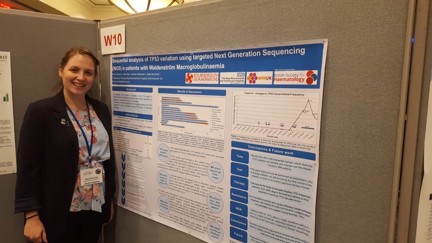
The 10th International Workshop on Waldenström's Macroglobulinemia (IWWM) conference was held in New York City, USA, in a historic area near Wall Street and the 9/11 Memorial Museum.
The conference was an extremely well-organised three-day event with presentations covering a range of topics relating to WM. There were sessions on the genomic landscape of WM, diagnosis and management of the disease, clinical trial updates and resistance mechanisms.
Without the support of the British Society for Haematology and the travel scholarship, I would not have been able to attend this exciting event and present our group's research.
Our abstract, entitled Sequential analysis of TP53 variation using targeted next generation sequencing (NGS) in patients with Waldenström macroglobulinaemia, was selected as a poster presentation and shown at the poster viewing reception on Friday 12 October.
Our research showed that TP53 variation could develop over the course of the disease in WM patients. It implies that TP53 testing should be performed both at presentation and prior to any therapy initiation during the time course of the disease in order to accurately appraise therapy choices.
One of the most interesting topics for me was a talk by Irene Ghobrial from the Dana-Farber Cancer Institute on whether cell-free DNA (cfDNA) could be used to assess mutation status in WM. Her group found almost 99% concordance between somatic mutations found in liquid and tumour biopsies. The application of this technique is extremely sensitive, with batch sampling proving cost-effective.
The idea was most appealing to me for use in the sequential sampling of the patient over time, enabling minimally invasive procedures and avoiding the use of repeat bone marrow aspiration. Despite the bulk of disease occurring in the bone marrow, this group have shown that cfDNA from peripheral blood can better reflect the tumour heterogeneity.
One of the keynote speakers, Dan Landau, also discussed this method of testing as a useful way to study the evolutional landscape of Ibrutinib resistance, with his expertise based on studies in chronic lymphocytic leukaemia (Landau et al 2017)[1].
That was another key theme of the conference, with Ibrutinib resistance becoming more common with increased use of BTK inhibition in this patient cohort. The outcome of these discussions led to the opinion that combination therapy rather than single-agent therapy is the key to overcoming clonal evolution of resistant clones.
I would like to thank the BSH committee for their generous travel scholarship award of £1,000, which enabled me to travel to New York, USA, for this conference.
The experience has been invaluable, and I hope it will impact my research work both now and in the future.
Reference
1. Landau, D. A., Sun, C., Rosebrock, D., Herman, S. E. M., Fein, J., Sivina, M., Underbayev, C., Liu, D., Hoellenriegel, J., Ravichandran, S., Farooqui, M. Z. H., Zhang, W., Cibulskis, C., Zviran, A., Neuberg, D. S., Livitz, D., Bozic, I., Leshchiner, I., Getz, G., Burger, J. A., Wiestner, A. & Wu, C. J. (2017) The evolutionary landscape of chronic lymphocytic leukemia treated with ibrutinib targeted therapy. Nat Commun, 8, 2185.
I'm very grateful to the BSH for the travel scholarship to support my attendance at the International Workshop on Chronic Lymphocytic Leukaemia (CLL) in May 2017.

The workshop is a four-day meeting with a blend of clinical/translation studies and basic biology with the aim of advancing the understanding and treatment of CLL (and associated malignancies).
The workshop opened with sessions focused on the factors leading to the development of CLL, including a description of familial CLL. Tait Shanafelt described how 10% of patients have first degree relatives with CLL. Monoclonal B-cell lymphocytosis (MBL) may also contribute to the development of CLL. And genome-wide studies have identified nine loci associated with an increased risk for CLL. Richard Houlston explained how single nucleotide polymorphisms (SNPs) conferring risk for CLL map to areas of open chromatin where they may be involved in regulation of gene expression.
At the meeting, I also had the opportunity to present a poster entitled Activation of p53 by the MDM2 antagonist RG7388 in CLL cells ex vivo triggers cell death via a pro-apoptotic gene signature. The poster describes part of our recent work from the Cancer Research UK Drug Discovery Newcastle team working in alliance with Astex Pharmaceuticals.
We are investigating how MDM2 antagonists may be used in CLL, particularly as this represents a non-genotoxic therapy with minimal effect on normal cells.
The poster was well received and gave me the opportunity to engage with others in the field and consider possible combination therapies using MDM2 antagonists.
Finally, these relatively small workshops facilitate interaction. I was able to meet with two collaborators to discuss recent data and progress future directions with novel small molecule inhibitors that are of mutual interest.
Many thanks to the BSH for this award, which was much appreciated.
I would like to take this opportunity to thank the BSH for supporting me in attending the Sixth International Symposium on Childhood, Adolescent and Young Adult Non-Hodgkin Lymphoma (NHL) in Rotterdam, the Netherlands. This four-day symposium focused on translational research and clinical trials in paediatric and young adult NHL.
During the symposium, I had the opportunity to present our work entitled Investigation of FOXO1 mutations in paediatric endemic and sporadic Burkitt lymphoma, which was selected as an oral presentation in the poster discussion session. This study described the high frequency of FOXO1 mutations in Burkitt lymphoma (BL) and the oncogenic role of FOXO1 in BL that makes it a potential therapeutic target.
I also had the chance to engage with senior researchers from around the world who gave suggestions and criticism that helped us put this work together into a manuscript after the symposium and submit it for publication.
This conference broadened my knowledge of recent progress in paediatric and young adult NHL, such as current molecular and bioinformatics research, ongoing clinical trials, global clinical experience (especially in developing countries), stem cell transplantation, patient stratification and recent improvement in treatments.
One particularly interesting research field was chimeric antigen receptor (CAR) T-cells. Gardner et al demonstrated the efficacy of anti-CD19+ CAR T-cells in paediatric relapsed or refractory NHL with well-tolerated toxicities in a phase II trial. Ryotaro Nakamura improved in vivo expansion of CAR T-cells by developing CMV-CD19 bi-specific T-cells with CMV vaccine stimulation, which has progressed to phase II clinical trial (British Journal of Haematology, 182, (Suppl. 1), 5–109). These studies offered hope to paediatric NHL patients who failed front-line therapies and stem cell transplantation.
Overall, this was a focused and informative conference that kept me updated on recent NHL research and clinical trials, provided the opportunity to network with researchers from other countries and led to the establishment of potential collaborations.
Once again, I am very grateful to the BSH for granting me funding to attend this symposium.
Without this, I would not have had the chance to present my data to experts in NHL or get valuable feedback.
I have thoroughly enjoyed my experience attending the 60th American Society of Hematology Annual Meeting & Exposition in San Diego for numerous reasons.
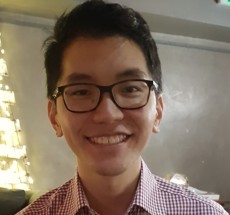
I greatly benefited from the extensive and well-planned programme and was struck by how much effort is placed into educational sessions geared towards haematology trainees.
I have definitely improved and updated my knowledge of the pathophysiology, diagnostic and management process of various haematological diseases.
One session I found particularly interesting was entitled Low iron promotes megakaryocytic commitment of megakaryocytic-erythroid progenitors in human and mice[1], which showed the pathophysiological process behind why iron deficiency anaemia is often accompanied by thrombocytosis. A question asked many times during my medical student teaching sessions that I am unable to answer.
Secondly, I had the opportunity to present a poster entitled Long-term safety and efficacy of autologous or allogeneic donor stem cell transplantation in patients with Behçet's syndrome. Another abstract I co-authored entitled Randomized trials of autologous hematopoietic stem cell transplantation for diffuse cutaneous systemic sclerosis: Systematic review and meta-analysis with trial sequential analysis of overall mortality was presented as an oral poster.
Being given this opportunity has definitely further developed my interest in research and has motivated me to continue to be involved in research at a local and national level whenever the opportunity arises.
Thirdly, this annual meeting has given me the opportunity to interact with haematologists from all around the globe. We were able to exchange experiences, and I was able to see how haematological conditions are being managed differently in other developed or developing countries. This experience has opened my eyes and given me a broader perspective of the overall issues surrounding haematology.
In conclusion, these three reasons have not only given me motivation in my career as a haematologist to further expand my knowledge and deliver the best care to my patients, but they have also contributed to my development as a well-rounded haematologist.
Reference
1. Low iron promotes megakaryocytic commitment of megakaryocytic-erythroid progenitors in human and mice. Juliana Xavier-Ferrucio, Xiuqi Li, Vanessa Scanlon, Ping-Xia Zhang, Nadia Ayala-Lopez, Toma Tebaldi, Stephanie Halene, Karin E. Finberg and Diane S. Krause. Blood 2018 132:2; doi: https://doi.org/10.1182/blood-2018-99-115214
This year's American Society of Haematology (ASH) conference was held in sunny San Diego, California. Celebrating its 60th anniversary, it lived up to my expectations.

As a clinician, albeit one who has recently started a PhD in megakaryocyte biology, the conference provided an opportunity to get updates about the latest trials and evidence.
One of the big talking points of the conference was the presentation of data from genome-wide association studies (GWAS) on the heritability of de novo AML, which indicated that up to 20% of patients might have an inherited genetic disposition for developing the condition.
Other notable highlights were the results from trials looking at the utility of direct oral anticoagulants (DOACs) in malignancy-related VTE.
Sickle cell disease also featured highly with some fascinating educational sessions reporting on the progress in gene-editing of the beta haemoglobin gene, which may present a potential 'cure' for the condition without the need for a bone marrow transplant.
The conference included several superb educational scientific talks within the area of haematopoiesis, the focus of my PhD. These included Stress and haematopoiesis, Thrombopoiesis and the lung, and How to make a red cell. The talks summarised key discoveries in the field and gave some insights into where the field seems to be going in the future.
The conference was also an opportunity to present my own work and discuss my findings and approaches with other scientists and clinicians. My poster, entitled Bayesian analysis of TPO in immune thrombocytopenia, is part of a larger body of work that aims to understand how the immune system affects the normal functioning and regulation of megakaryocytes in both autoimmunity and inflammation more generally.
Using novel mathematical approaches and computer simulations, I generated a model of TPO production in immune thrombocytopenia. The work attracted a great deal of interest and inspired lively discussion both about the research itself and about possible future directions the work could take.
I am very grateful to the BSH for sponsoring my attendance at the conference.
It has been a wonderful experience and a great opportunity for me, especially at this early stage in my scientific training.
Thanks to the generous support of the BSH, I was able to travel to Atlanta to attend the 59th Annual Meeting and Exhibition of the American Society of Haematology (ASH).

I presented my group's work entitled Histone acetyl-transferase Kat2a regulates transcriptional heterogeneity and impacts self-renewal of acute myeloid leukemia cells in a disease-specific manner at the conference and enjoyed multiple opportunities for discussion.
Critically, I initiated two collaborations only possible due to my attendance at the meeting.
The ASH meeting is an intense yet highly-rewarding experience that articulates clinical with basic science perspectives and audiences. The unpublished or recently-published nature of the work presented provides investigators with very clear and live notions of the directions the field is taking.
It assists young principal investigators such as myself in making strategic decisions at project bifurcations. Moreover, the quantity and diversity of the sessions on display inevitably sheds new light on the interpretation of one's own data.
This year, from a basic research perspective into myeloid malignancies, there were very clear focuses on the role of metabolism, particularly mitochondrial metabolism, in influencing leukaemia progression.
A more recent but equally timely area of research was the articulation between epigenetic regulation and alternative splicing, a novel theme for which there is a strong body of emergent evidence, whilst precise mechanistic connections are still being defined. The idea that epigenetic dysregulation inherent to myeloid malignancies may perturb not only the quantity but also the quality of gene expression is remarkably interesting to me.
I focus my research on the contribution of transcriptional heterogeneity to fate transitions in acute myeloid leukaemia (AML) and employ manipulation of individual epigenetic regulators to promote differentiation or death of AML cells with therapeutic intent.
I had previously viewed epigenetic regulators as sensors and translators of metabolic cell status into initiation, processivity and/or suppression of gene expression. The association with alternative splicing suggests that metabolic status and availability of intermediate metabolites can additionally modify the protein diversity of the cell with the generation of variability in and complex rewiring of regulatory networks. I had encountered tentative associations between metabolic status, splicing and protein synthesis in my data, which now take shape in light of substantive unpublished data presented at the conference.
My travel to ASH, much like everybody else's, was complicated by the extremely cold weather conditions in the southern states, and I eventually arrived in Atlanta a day later than expected, and by taxi rather than plane.
Despite the bumpy start, ASH proved to be the enriching experience I had anticipated. It generated numerous ideas that already bear fruit in my group's research.
I thank the British Society for Haematology and my own Fellowship funding body, the Kay Kendall Leukaemia Fund, for making this trip possible.
The BSH travel scholarship enabled me to travel to ASH in Atlanta this year.
My abstract, entitled High-throughput sequencing in patients with inherited bleeding and platelet disorders: novel gene discovery and robust diagnosis, was selected as one of the top six abstracts (out of more than 6,000) for presentation in the ASH plenary scientific session.
It was a wonderful opportunity for me personally and professionally. The work I presented is the culmination of several years of collaborative work from an international team of clinicians, geneticists, and laboratory and computational scientists and has been the focus of my PhD research.
Showcasing my work on this platform at ASH enabled me to bring our research to a wider audience. To show how high-throughput sequencing using whole genome sequencing and a targeted gene panel is transforming diagnosis for patients with rare coagulation, thrombotic and platelet disorders.
Since my talk, I have been approached by clinicians from around the world with interest in our study, and I have been able to bring haematologists and scientists working on specific diseases together.
I have also had interest in sequencing more patients on our gene panel, and it is great to have been able to spread the word and get more people using this resource.
Giving a presentation like this was a great privilege. I learned a lot about preparing for and talking to a large, diverse audience.
It was my first trip to ASH, and I also appreciated the diverse quality of presentations across the field of haematology. It was refreshing to be reminded of the many advances in other areas of haematology, having spent the last few years doing a PhD in rare bleeding and platelet disorders. And how interesting it is being a haematologist!
I also attended some education sessions, which were really useful for my clinical practice.
Finally, giving a presentation at ASH was an ideal way to meet haematologists and scientists interested in my area of research from across the world. And to meet up and maintain links with colleagues across haematology.
I am enthused to carry on and make the most of this opportunity. It was an invaluable experience and many thanks to the BSH for their support in making it possible.

The EHA Travel Scholarship gave me the opportunity to travel to Madrid and attend the European Hematology Association's annual congress 2024, where I presented the research undertaken during my MRes over the past nine months as a poster.
My work focuses on the mechanisms underlying macrophage polarisation within the acute myeloid leukaemia tumour microenvironment. It was well received and I got feedback to plan more experiments for the last few months of my MRes course.
During the conference I attended talks on a variety of clinical and basic science topics. My highlight session was The role of the microbiome in haematological disease, specifically Impact of the microbiome on cellular therapy by Cristoph Stein-Thoringer and Gut microbiome in HSCT by Marcel Van Dan Brink. These talks highlighted the role of the gut microbiome in human health and disease. The session provided me with lots of ideas for new projects within our lab and collaborations with other labs at our University to work on gut-bone marrow projects.
EHA 2024 provided me with fantastic networking opportunities. I met researchers in my field from Germany, Brazil, the Netherlands, France, the UK and many others. I can build on these links in my future research career as I plan to balance research and clinical work after the completion of my MBBS course.
This conference was a fantastic step in my short research career to date and I would like to extend a massive thank you to the BSH for making it possible.
This year the annual conference of the European Hematology Association was held in sunny Madrid. It was my pleasure to be a recipient of the BSH-EHA travel scholarship, to attend the event and to present our data at the poster session.

Attending the conference was a formative experience that allowed me, as a basic scientist, to keep abreast of the most recent developments in my research field, the basic biology of Acute Myeloid Leukaemia (AML). It enabled me to understand the clinical developments in the field and the most urgent needs of the beneficiaries of my research, the AML patients.
The quality of the talks at these conferences is always breathtaking. I was particularly impressed by the talks presented at two sessions titled Targeting oncogenic transcription factor/complexes and Ageing and haematology.
Cytogenetics is used for AML classification and prognostication. Over half of AML cases are characterised by alterations in transcription factors including recurrent translocations, loss-of-function mutations, and intracellular relocalization. Transcription factors have therefore been considered attractive but also challenging targets for therapy.
We learnt about new strategies to identify critical binding domains in transcription factors. Dr Hannah Uckelmann presented her groundbreaking research on the role of mutant NPM1, a nucleolar protein found mutated in almost 50% of AML patients. Dr Uckelmann showed that mutant NPM1 acts as a co-operator of KMT2A epigenetic complex and as a driver of oncogenic gene expression in AML. Disrupting the KMT2A complex by using the Menin-KMT2A inhibitors prevented the development of AML in mutant NPM1 mouse models. Her pre-clinical work paved the way for the inclusion of NPM1 mutant patients in the ongoing clinical trials for Menin-KMT2A inhibitors [1].
The other session that grabbed my attention was Ageing and Haematology, which highlighted the contribution of inflammation to the expansion of mutant leukemic clones, leading to the progression of myelodysplastic syndromes into AML. The potential impact of these data is twofold.
Understanding how inflammation contributes to the selection of mutant clones and AML development could enable us to identify risk factors for AML. We know that ageing is the principal risk factor for the development of AML, but we do not know yet what ageing-associated biological processes are involved.
On the other hand, the dysregulation of inflammatory pathways in leukemic cells can be exploited for therapeutic purposes, in a self-directed immunotherapy approach. Dr Jana Ellegast identified the immune modulator IRF2BP2 as a new vulnerability in AML. Inhibiting IRFBP2 restored the activation of IL1β/TNFα signalling via NFκB, leading to leukemic cell death [2].
I am grateful to the BSH for supporting my attendance at the EHA and feeding my science appetite!
References
1. Uckelmann, H. J. et al. Mutant NPM1 Directly Regulates Oncogenic Transcription in Acute Myeloid Leukemia. Cancer Discovery 2023. 13(3): p. 746-765.
2. Ellegast, J. M. et al. Unleashing Cell-Intrinsic Inflammation as a Strategy to Kill AML Blasts. Cancer Discovery, 2022. 12(7): p. 1760-1781.
I am very grateful to the BSH for supporting my attendance at the EHA 2024 Hybrid Congress in Madrid.

I had the privilege of presenting our abstract: A prospective analysis of newly diagnosed Mantle Cell Lymphoma: predictors and survival of indolent disease, which was selected as an oral presentation. This was based on data from the MCL Biobank Observational Study that recruited patients from all over the UK.
Showcasing our results was a wonderful opportunity for me personally and professionally. It sparked conversations across the lymphoma community on the recognition of MCL patients at diagnosis who are likely to exhibit an indolent disease course and informs the safe deferral of treatment in this subgroup of patients. It has also led to interest in our ongoing research to identify biological markers to further define the subgroup.
This was my first opportunity to attend EHA. I appreciated the quality and breadth of presentations across all areas of haematology. Having spent the last few years doing an MD in MCL, it was refreshing to be updated on the progress in other fields of haematology. Listening to the researchers behind many of the papers and guidelines I have read and referenced was truly inspiring and remotivating.
I was particularly interested in the results from the STARGLO trial, which was presented by Jeremy Abramson[1] during the plenary session. This showed that fixed-duration glofitamab added to gemcitabine and oxaliplatin (Glofit-GemOx) demonstrates a statistically significant and clinically meaningful benefit in overall survival, progression free survival and complete remission rates over rituximab (R)-GemOX in transplant ineligible patients with relapsed/refractory DLBCL.
I would encourage all registrars and research fellows to take up opportunities to attend conferences to update knowledge and remind ourselves of why we have chosen a career in haematology.
Thank you to the BSH for this grant, it was most appreciated.
Reference
1. Abramson, J. et al. Glofitamab plus Gemcitabine and Oxaliplatin (GFLOFIT-GEMOX) for relapsed/refractory (R/R) Diffuse Large B-Cell Lymphoma (DLBCL): results of a global randomized phase III trial (STARGLO). EHA Library, 2024.
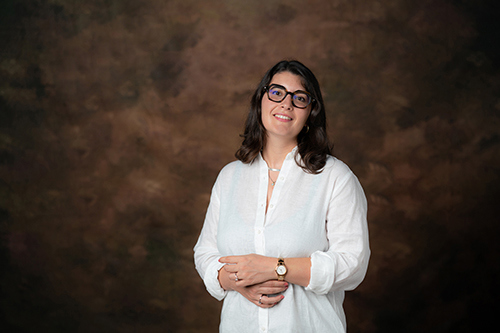
One of the key areas I focused on during the congress was myeloproliferative neoplasms (MPNs). The MPN sessions were particularly educational, showcasing a variety of new studies and cutting-edge topics.
In the clinical and translational MPN session, Dr. Alex Rampotas presented on the development and evaluation of a novel CAR-T therapy targeting mutant calreticulin (CALR), a primary oncogenic driver in MPNs.
Findings demonstrated that mutCALR CAR-T cells could specifically target mutCALR-bearing cells both in vitro and in vivo. The group aims to proceed to a phase I clinical trial to test the safety of this approach.
Visiting Fellow
The deadline for the Visiting Fellow grant is 30 June.
Please allow sufficient time for your application to be reviewed, usually 6-8 weeks after the deadline.
Please note: Retrospective claims will not be considered.
The BSH Visiting Fellow Scholarship allowed me to visit Prof. Salvatella’s lab (specialising in
molecular biophysics) at the Institute for Research in Biomedicine (IRB) Barcelona.

I was unable to stay for eight weeks as originally planned because I needed to start my new
position at Imperial College London. However the six weeks I spent at IRB were extremely
valuable for my career development.
While at IRB, I worked as a visiting scientist alongside a talented group of researchers. These included postdocs and PhD students specialising in molecular biophysics, particularly in the study of intrinsically disordered proteins (IDPs).
The experience introduced me to cutting-edge experimental and computational techniques in the field. Specifically, I gained hands-on expertise in large-scale protein purification using a variety of advanced methods, which significantly enhanced my understanding of protein biochemistry. I also learned how to troubleshoot these methods, ensuring high-quality preparations for subsequent experiments.
In addition, I acquired practical experience in studying the phase separation properties of proteins in
vitro.
One of the most exciting parts of my visit was getting practical experience using nuclear magnetic resonance (NMR) spectroscopy, a technique that allows the study of molecular interactions. This enabled me to directly observe protein-protein (intramolecular) interactions, providing insights into the phase separation processes due to protein self-assembly.
Detailed understanding of phase separation of biomolecules (proteins) could explain many biological phenomena, especially in cancer.
Even though I had to return to the UK earlier than planned, the work didn’t stop there. I’ve continued
the project I started at IRB, including analysing data and repeating key experiments. We’re planning
to expand this work into a larger project, and I look forward to continued collaboration with Prof.
Salvatella’s lab.
In addition to the technical skills, the visit gave me the chance to learn from world-class scientists who visited IRB during my time there. Attending their seminars and meeting with them helped me grow both scientifically and professionally, and I’ve made connections that will benefit my future research work.
It would not have been possible to work with experts in the field, gaining specialised technical skills and establishing international collaboration without the funding from the BSH Visiting Fellow Scholarship.
This visit has been a key step in advancing my research, expanding my technical expertise, learning new skills and fostering long-term professional connections. It will have a lasting impact on my career.
I am deeply grateful to the BSH for providing me with this valuable opportunity.
Read Dr Singh's full report.
Sickle cell disease and β-thalassemia are common monogenic disorders that cause significant morbidity and mortality globally. Currently, the only curative treatment is allogeneic hematopoietic stem cell transplantation. It is unavailable to many patients due to a lack of matched donors and carries risks, including graft-versus-host disease.
Genome editing therapies targeting the BCL11A erythroid enhancer or the HBG promoter are already demonstrating success in reinducing fetal haemoglobin. However, where a single locus is targeted, reliably achieving levels high enough to deliver an effective cure remains a challenge.
We investigated the application of a CRISPR/Cas9 multiplex genome editing approach, in which both the BCL11A erythroid enhancer and HBG promoter are disrupted within human hematopoietic stem cells.
We demonstrate superior fetal haemoglobin reinduction with this dual editing approach without compromising the engraftment or lineage differentiation potential of edited cells post-xenotransplantation.
However, multiplex editing consistently resulted in the generation of chromosomal rearrangement events that persisted in vivo following transplantation into immunodeficient mice. Therefore, the risk of oncogenic events resulting from such translocations currently prohibits its clinical translation. But it is anticipated that, in the future, alternative editing platforms will help alleviate this risk.


